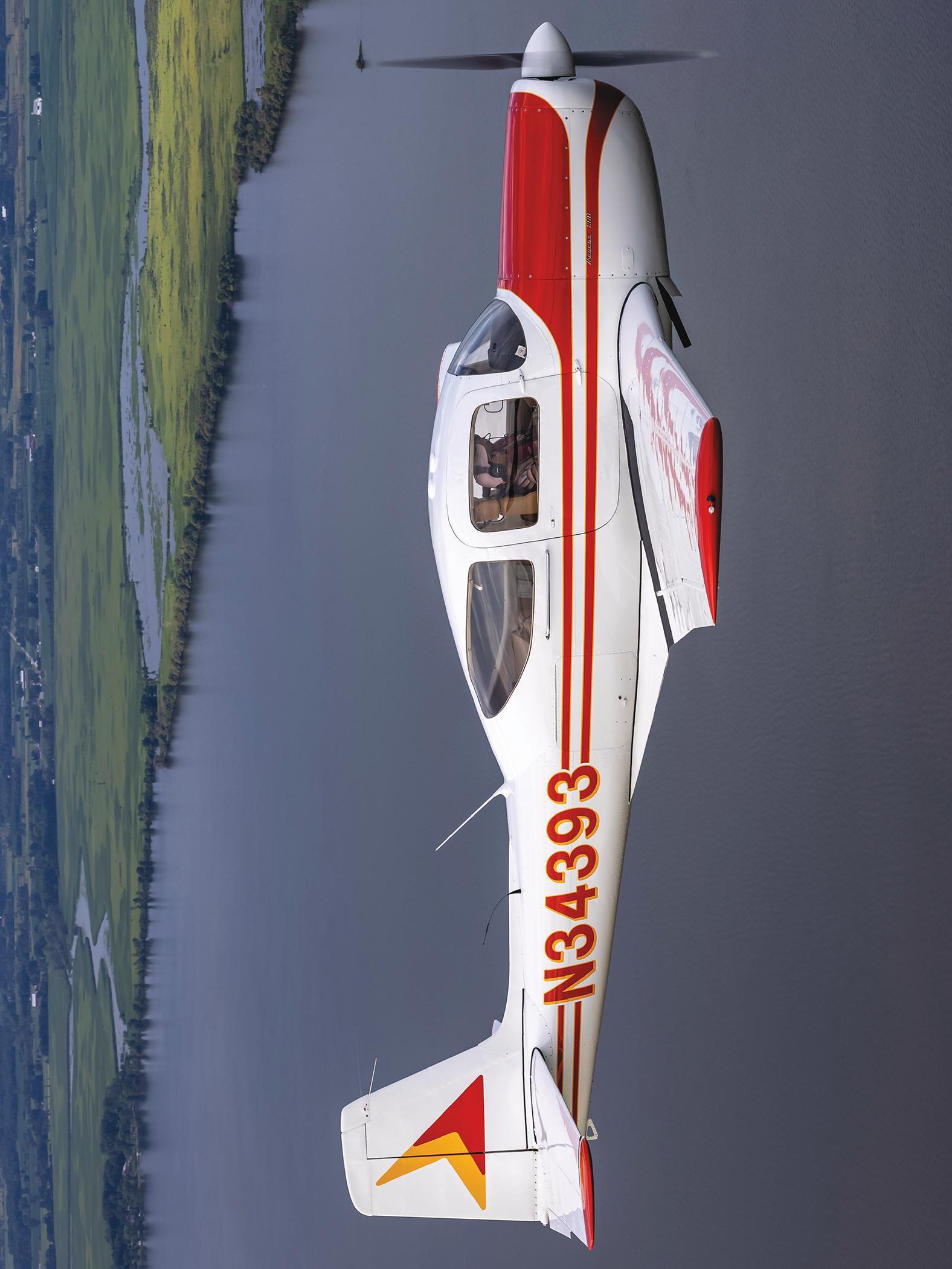CRUISINGTHE LINE
CHAMP BASICS
MEYERS 200B








CRUISINGTHE LINE
CHAMP BASICS
MEYERS 200B







SUSAN DUSENBURY, VAA PRESIDENT
WHEN I ACCEPTED THE position of president of the EAA Vintage Aircraft Association, my plan was to serve a maximum of five years. At that time (and even now), I felt that five years as president would best serve the organization. Primarily, I was thinking that looking forward four to five years in office would be attractive to a broader range of individuals who would enjoy a fouror five-year commitment to the organization. I also felt that so many who would consider serving as president of Vintage could certainly be concerned or even discouraged about a 15-year commitment. Looking back at previous VAA presidents, the time in office was typically in the 15-year range. I knew a few of those guys — Brad Thomas, Butch Joyce, Geoff Robison. All were competent and dedicated to vintage aviation and to their position as president of Vintage.
Anyway, once I was elected as your president, I committed myself to five years of volunteer service, with maybe an extra year to complete any projects that were initiated during my tenure in office. The absolute first thing I did as president was to formulate a five-year plan for the organization. The plan included such things as infrastructure improvements, some internal reorganization and improvements, and the most ambitious project in the plan, which was the initiation and realization of a VAA youth program. Of course, the youth program was put in place at this year’s EAA AirVenture Oshkosh,
which marked the end of my fiveyear plan.
As such, and as I stated to the VAA officers and directors last summer, I will be retiring in 2025. At that point, my time in office will be in the eight-year range, or put another way, it will be three years past my original five-year goal. I guess that estimating the time it takes to complete a project at VAA is similar to estimating the time it takes to work on the typical airplane restoration project. I used to
There is an amazing amount of talent in the 650 volunteers who step forward every year to make Vintage the premier organization it is today.
make time estimates when working on my airplanes. My original estimate was never anywhere near correct, so I started doubling my estimated time. Then I tripled it. Then I quadrupled it. Finally, I decided to forget the time thing and just keep working until it was finished.
CONTINUED ON PAGE 64
November/December 2024
Publisher: Jack J. Pelton, EAA CEO and Chairman of the Board
Vice President of Publications, Membership and Retail/Editor in Chief: Jim Busha / jbusha@eaa.org
Senior Copy Editor: Colleen Walsh
Copy Editors: Tom Breuer, Jennifer Knaack
Proofreader: Tara Bann
Print Production Team Lead: Marie Rayome-Gill
Senior Sales and Advertising Executive: Sue Anderson / sanderson@eaa.org
Mailing Address: VAA, P.O. Box 3086, Oshkosh, WI 54903
Website: EAAVintage.org
Email: vintageaircraft@eaa.org
Phone: 800-564-6322
Visit EAAVintage.org for the latest information and news.
Current EAA members may join the Vintage Aircraft Association and receive Vintage Airplane magazine for an additional $45/year.
EAA membership, Vintage Airplane magazine, and one-year membership in the EAA Vintage Aircraft Association are available for $55 per year (Sport Aviation magazine not included). (Add $7 for International Postage.)
Please submit your remittance with a check or draft drawn on a United States bank payable in United States dollars. Add required foreign postage amount for each membership.
Membership Service
P.O. Box 3086, Oshkosh, WI 54903-3086 Monday–Friday, 8 AM—6 PM CST Join/Renew 800-564-6322 membership@eaa.org
EAA AirVenture Oshkosh www.EAA.org/AirVenture 888-322-4636
By Sue Hutson and Patty Dorlac
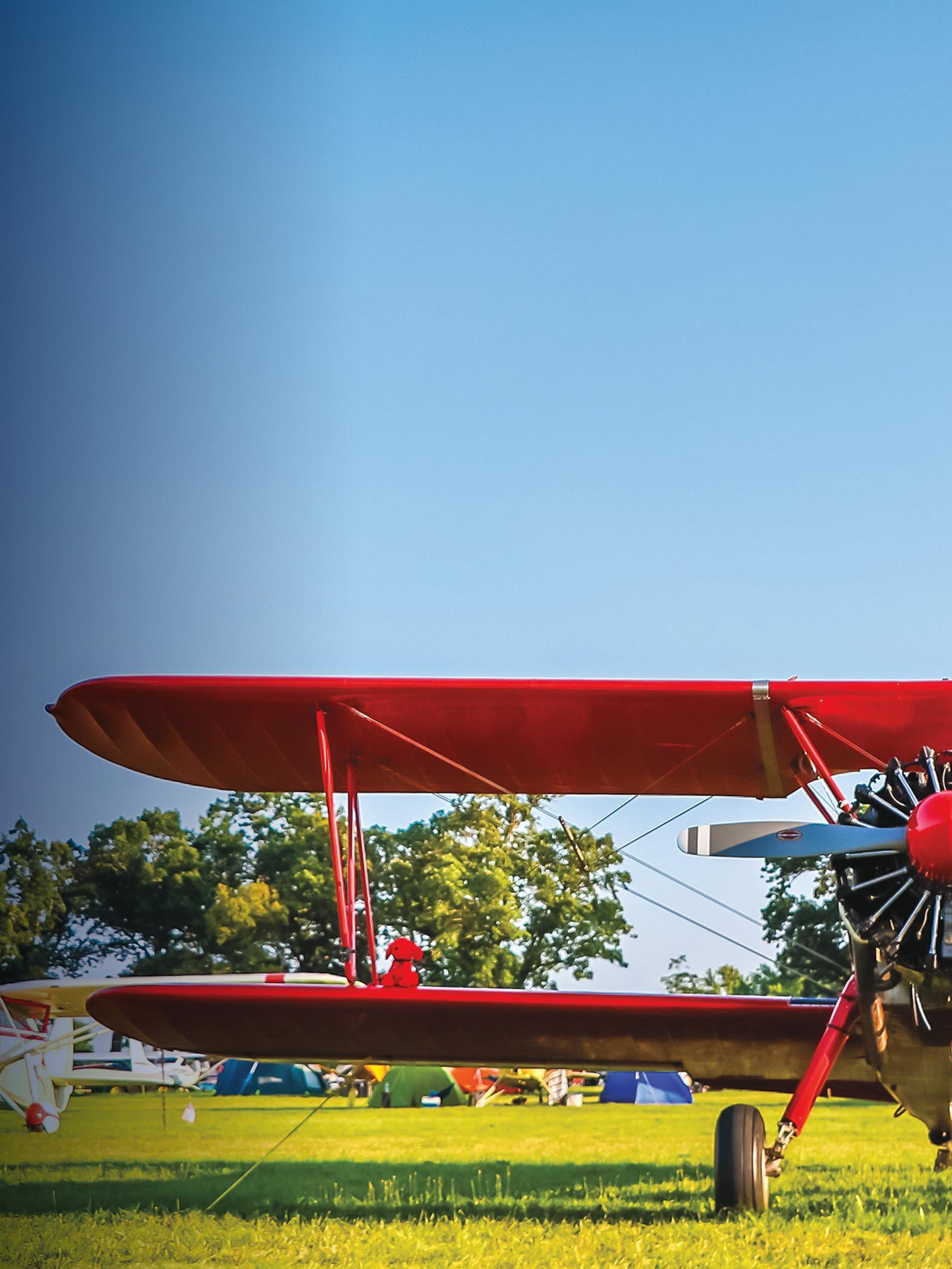


Nominate your favorite vintage aviator for the EAA Vintage Aircraft Association Hall of Fame. A great honor could be bestowed upon that man or woman working next to you on your airplane, sitting next to you in the chapter meeting, or walking next to you at EAA AirVenture Oshkosh. Think about the people in your circle of aviation friends: the mechanic, historian, photographer, or pilot who has shared innumerable tips with you and with many others. They could be the next VAA Hall of Fame inductee — but only if they are nominated. The person you nominate can be a citizen of any country and may be living or deceased; their involvement in vintage aviation must have occurred between 1950 and the present day. Their contribution can be in the areas of flying, design, mechanical or aerodynamic developments, administration, writing, some other vital and relevant field, or any combination of fields that support aviation. The person you nominate must be or have been a member of the Vintage Aircraft Association or the Antique/ Classic Division of EAA, and preference is given to those whose actions have contributed to the VAA in some way, perhaps as a volunteer, a restorer who shares his expertise with others, a writer, a photographer, or a pilot sharing stories, preserving aviation history, and encouraging new pilots and enthusiasts.
To nominate someone is easy. It just takes a little time and a little reminiscing on your part.
• Think of a person; think of their contributions to vintage aviation.
• Write those contributions in the various categories of the nomination form.
• Write a simple letter highlighting these attributes and contributions. Make copies of newspaper or magazine articles that may substantiate your view.
• If at all possible, have another individual (or more) complete a form or write a letter about this person, confirming why the person is a good candidate for induction.
We would like to take this opportunity to mention that if you have nominated someone for the VAA Hall of Fame, nominations for the honor are kept on file for three years, after which the nomination must be resubmitted.
Mail nominating materials to:
VAA Hall of Fame, c/o Amy Lemke
VAA
P.O. Box 3086
Oshkosh, WI 54903
Email: alemke@eaa.org
Find the nomination form at EAAVintage.org, or call the VAA office for a copy (920-426-6110), or on your own sheet of paper, simply include the following information:
• Date submitted.
• Name of person nominated.
• Address and phone number of nominee.
• Email address of nominee.
• Date of birth of nominee. If deceased, date of death.
• Name and relationship of nominee’s closest living relative.
• Address and phone of nominee’s closest living relative.
• VAA and EAA number, if known. (Nominee must have been or is a VAA member.)
• Time span (dates) of the nominee’s contributions to vintage aviation. (Must be between 1950 to present day.)
• Area(s) of contributions to aviation.
• Describe the event(s) or nature of activities the nominee has undertaken in aviation to be worthy of induction into the VAA Hall of Fame.
• Describe achievements the nominee has made in other related fields in aviation.
• Has the nominee already been honored for their involvement in aviation and/or the contribution you are stating in this petition? If yes, please explain the nature of the honor and/or award the nominee has received.
• Any additional supporting information.
• Submitter’s address and phone number, plus email address.
• Include any supporting material with your petition.
For one week every year a temporary city of about 50,000 people is created in Oshkosh, Wisconsin, on the grounds of Wittman Regional Airport. We call the temporary city EAA AirVenture Oshkosh. During this one week, EAA and our communities, including the Vintage Aircraft Association, host more than 600,000 pilots and aviation enthusiasts along with their families and friends.
As a dedicated member of the Vintage Aircraft Association, you most certainly understand the impact of the programs supported by Vintage and hosted at Vintage Village and along the Vintage flightline during EAA AirVenture Oshkosh every year. The Vintage flightline is 1.3 miles long and is annually filled with more than 1,100 magnificent vintage airplanes. At the very heart of the Vintage experience at AirVenture is Vintage Village and our flagship building, the Red Barn.
Vintage Village, and in particular the Red Barn, is a charming place at Wittman Regional Airport during AirVenture. It is a destination where friends old and new meet for those great times we are so familiar with in our close world of vintage aviation. It’s energizing and relaxing at the same time. It’s our own field of dreams!
The Vintage area is the fun place to be. There is no place like it at AirVenture. Where else could someone get such a close look at some of the most magnificent and rare vintage airplanes on Earth? That is
just astounding when you think about it. It is on the Vintage flightline where you can admire the one and only remaining low-wing Stinson TriMotor, the only two restored and flying Howard 500s, and one of the few airworthy Stinson SR-5s in existence. And then there is the “fun and affordable” aircraft display, not only in front of the Red Barn but along the entire Vintage flightline. Fun and affordable says it all. That’s where you can get the greatest “bang for your buck” in our world of vintage airplanes!
For us to continue to support this wonderful place, we ask you to assist us with a financial contribution to the Friends of the Red Barn. For the Vintage Aircraft Association, this is the only major annual fundraiser and it is vital to keeping the Vintage field of dreams alive and vibrant. We cannot do it without your support.
Your personal contribution plays an indispensable and significant role in providing the best experience possible for every visitor to Vintage during AirVenture.
Contribute online at EAAVintage.org. Or, you may make your check payable to the Friends of the Red Barn and mail to Friends of the Red Barn, P.O. Box 3086, Oshkosh, WI 54903-3086.
Be a Friend of the Red Barn this year! The Vintage Aircraft Association is a nonprofit501(c)(3), so your contribution to this fund is tax deductible to the extent allowed by law.
Looking forward to a great AirVenture 2025!
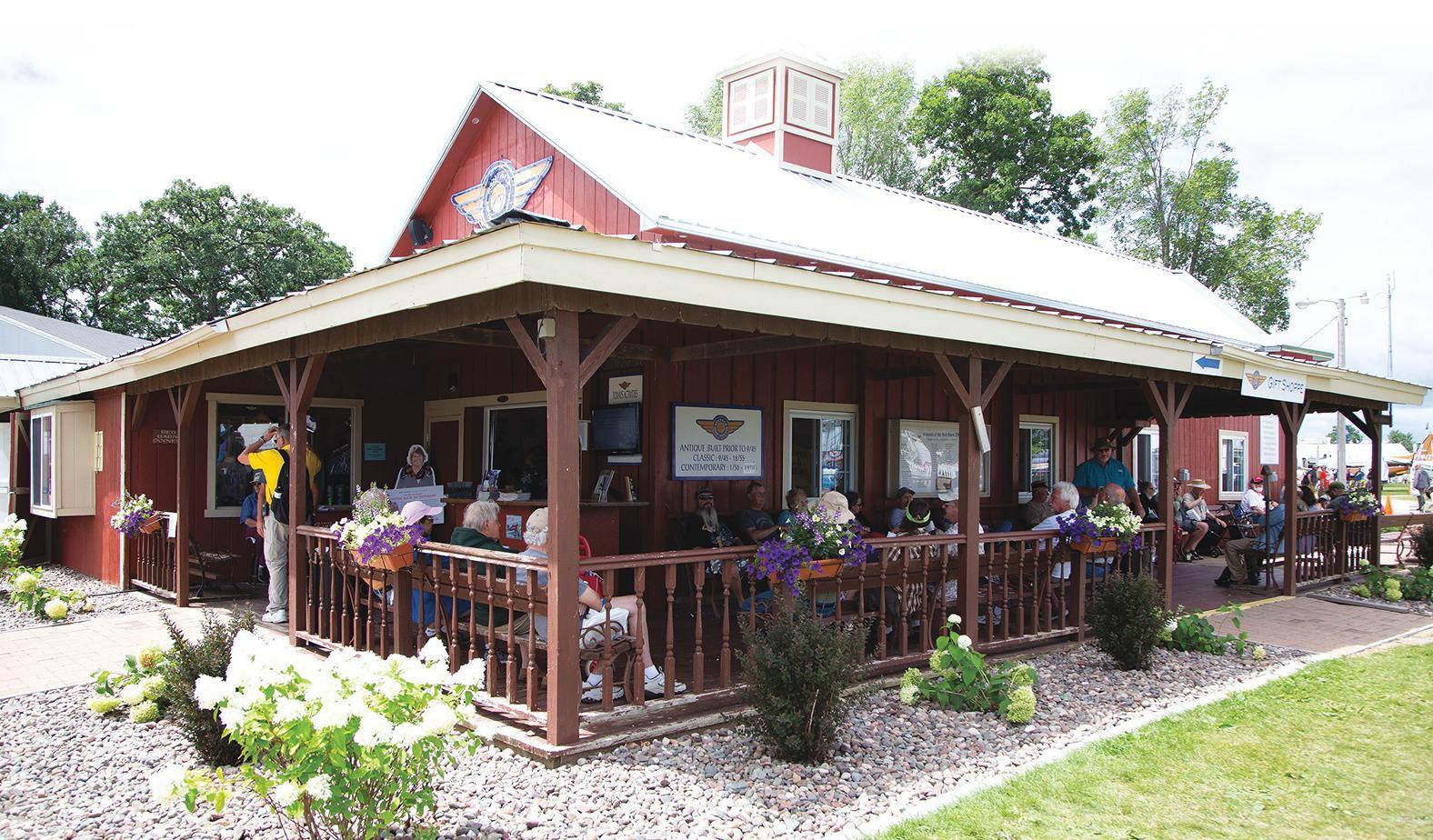
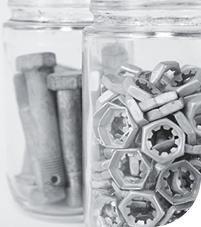
ROBERT G. LOCK
BY ROBERT G. LOCK
PLYWOOD IS A VENEER FORMED with an odd number of plies — three, five, seven, etc. — and with the grain direction of each layer at an angle of 90 degrees with the preceding layer, or ply. Aircraft-grade plywood is manufactured to Military Specification MIL-P-6070. Common types are mahogany and birch, although basswood can be found. Aircraft plywood veneers are spread with waterproof adhesive and placed in a hot press to cure. Typical wood used in the cores are basswood and poplar. The outside plies are termed the “faces” or “face and back,” and the inner ply is termed the core. When there are five or seven plies, the center veneer is called the core, and the adjacent plies are called cross bands.
Plywood has a big advantage over solid wood in that it has strength in both directions along the length and width of the panel; solid wood has its strength only in the longitudinal direction. Plywood also has negligible change in width and length with changes in moisture content.
American mahogany or birch plywood comes in thicknesses of 1/16 inch, 3/32 inch, and 1/8 inch and will have three plies. Plywood of thicknesses of 1/4 inch, 5/16 inch, and 3/8 inch will have five plies. And thicknesses of 7/16 inch

and 1/2 inch will have seven plies. When the veneers are glued and placed in a hot press to cure, one face will be very smooth and the opposite face will have some grain lines showing. The smooth side is called the “A” face, and the slightly rough side is called the “B” face. During fabrication and repairs it is always better to bond the B face when possible because the adhesive will penetrate better on that side. This is particularly true when using birch plywood.
Standard size for aircraft plywood is a 4-by-8-foot sheet. When the face grain runs parallel to the length, the
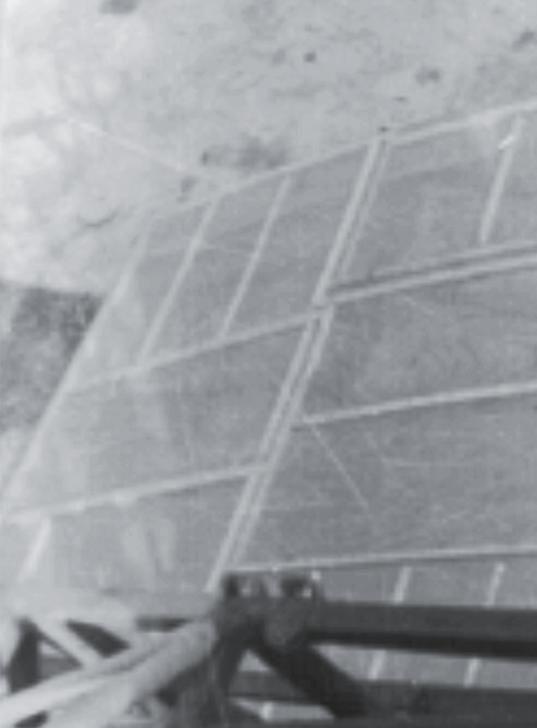
Plywood has a big advantage over solid wood in that it has strength in both directions along the length and width of the panel; solid wood has its strength only in the longitudinal direction.
plywood is called 90-degree grain. When the face grain runs at 45 degrees to the edges, the plywood is called 45-degree grain.
When forming of plywood is required, steaming is the best method; however, a steamer is not always handy. Soaking the plywood in hot water will aid in bending and forming the material. Figure 1 shows steaming 45-degree, 3/32-inch plywood around my Fairchild PT-19 center section leading edge back in 1958 when I was 19 years old. That is my late father, Leonard, to the left. He rented a wallpaper steamer, and it did a good job but was slow.
Figure 2 shows the center section with the new plywood glued in place. Nailing strips apply pressure until the synthetic resin adhesive cures, then the strips and nails were removed. In this early stage of my career I hope I knew about the A and B side rule. It was more than 55 years ago so I really don’t recall.
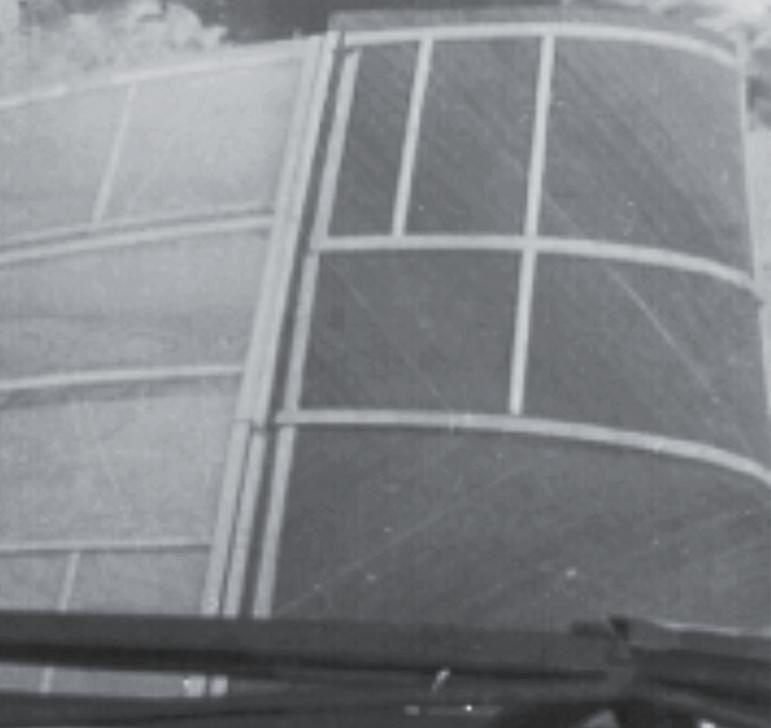

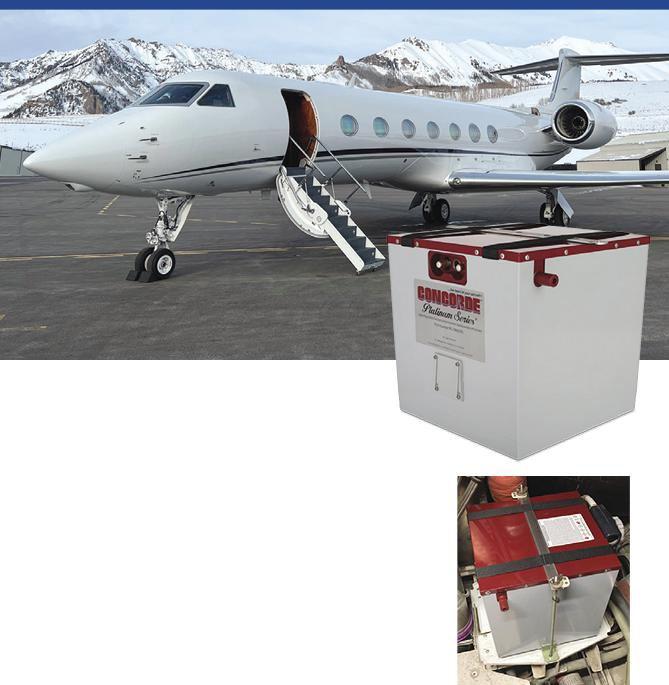
STC ST01097DE provides for the installation of RG-380E/53L, 53 Ah sealed lead acid batteries, with a
Standardize your fleet with Concorde. Increase
WRITTEN BY SUE HUTSON, CHARLES W. HARRIS YOUTH AVIATION CENTER CO-CHAIR
IT HAS TRULY BEEN a privilege to volunteer as the co-chairs of the Charles W. Harris Youth Aviation Center. What a joy to work with other volunteers to introduce aviation to young people, not to mention what fun it is to see the happy faces of the kids and teenagers. It is our hope that the children and teenagers who visit the youth center not only will enjoy the hands-on activities, but also will get hooked on vintage airplanes and the Vintage community.
AC has volunteered for several years with Dave Clark in the children’s hands-on workshops. Being an A&P mechanic and having a background in industrial arts education was a perfect fit. Sue grew up in an aviation family and decided to jump in when the workshop moved outside to the tent beside the hangar. We have enjoyed volunteering together in youth programs through the years, including directing the late Ron Alexander’s Youth Aviation Program in Georgia.
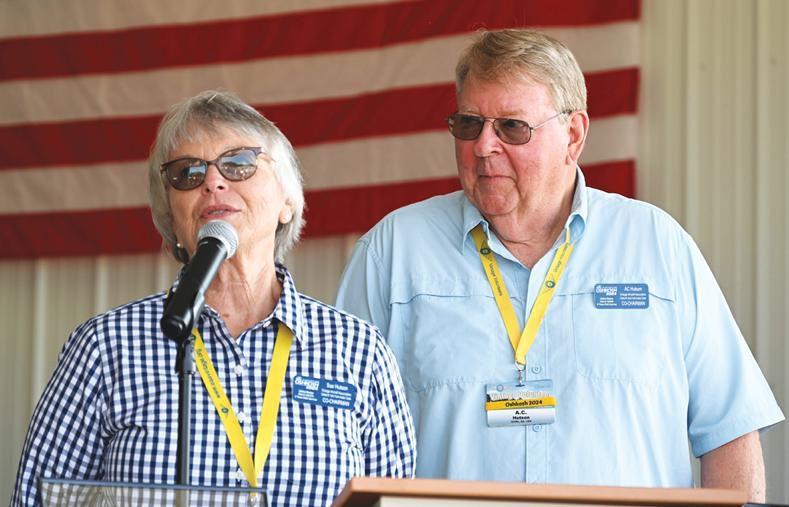
Through volunteering at Vintage, we have met the most wonderful people who have become friends. We now are happy to recruit more volunteers so they can experience the culture and warm camaraderie that is the Vintage Aircraft Association.
WRITTEN
BY PATTY DORLAC, FLIGHTLINE CO-CHAIR
WHITMAN TAYLOR FOLLOWS IN the footsteps of generations of Vintage volunteers, including his grandfather, Buck Hilbert, who was a huge part of Vintage. Buck helped build the Red Barn, served on the Vintage board, and wrote articles for Vintage Airplane magazine. His grandma, Dorothy Hilbert, was also well known for her many years of work in the EAA Wearhouse. The EAA annual award for female volunteers is named the Dorothy Hilbert Award.
Whitman’s mom, Alice, volunteered in Vintage with his aunts and uncles. Alice brought his dad, Tom Taylor, known to many as “Tall Tom,” to Oshkosh, and then Whitman and his brother, Ben, joined the long line of
volunteers, coming in strollers! Naturally, with this history, when I asked Whitman what he would like to do as a volunteer in the future, he replied, “I would like to be more involved throughout the year.”
About 12 years ago, it was suggested to Whitman and Ben that they could start working in the Red Barn serving popcorn. They started there and also went to the Tall Pines Café to serve breakfast. Whitman really enjoyed visiting with the pilots during his shifts. He recalls that Tom, “the French toast guy,” took him under his wing and taught him to get more involved. After the 5:30 to 10:30 a.m. shift, Whitman would head to the Vintage flightline to volunteer for the rest of the day.
Whitman transitioned to working solely on the flightline eight years ago. Working at Point Magoo, he enjoys parking the many aircraft he gets to see each year. He especially appreciates working with the 195s, pointing out that Cessna put a lot of unique qualities into these airplanes. He
looks forward to seeing the airplanes and the many people who fly in each year.
Whitman has been most influenced by many of the people he has worked with over the years. Some have passed away, and he remembers them as being “really great people, and each one left a mark on me. I am glad I was able to work alongside those who came before me. They walked with me and taught me a lot that I might not have learned without them. I keep coming back because of the people I work with, some who I only get to see once a year for a week. Perry Cartwright and Dick Oslund are two examples of the friends I look forward to seeing every year. Some of the best people I have ever met are there.”

WRITTEN BY PATTY DORLAC, FLIGHTLINE CO-CHAIR
MARK MEADOWS STARTED VOLUNTEERING with Vintage in 2016. He and Marral flew in to AirVenture in a 1967 Mooney from Craven, Saskatchewan, in Canada. Soon after they landed, he was approached by Trevor Smith, who, it turns out, was a previous owner of the airplane!
Heather and Trevor quickly convinced them to volunteer with Vintage. In addition to volunteering in the Red Barn that year, in 2017 they volunteered to drive the six-passenger mobility carts for EAA, to help move people who need transportation around the area. Mark also started working with the Vintage flightline and really enjoyed it.
In 2018-2019, he worked in the Vintage break room, where he had the opportunity to meet volunteers who were working throughout Vintage. He liked getting to know them — using his wonderful sense of humor — and showing appreciation for their work through serving them with Sue and the other break room folks. He also joined the Magoo crew on the Vintage flightline in 2018 and has been there ever since.
While he can jump in anywhere with Vintage, he feels at home at Magoo and likes
that there is always a game plan. Mark said, “It is amazing how, with the game plan that we are all briefed on, a group of eight to 10 of the Magoo volunteers can be all on the same page and park 50 Ercoupes in just 15 minutes. Teamwork is a great part of any movements we make at Magoo.” To the bystander watching a mass arrival getting parked, it is clear that the Magoo crew has been doing this for years!
In addition to the aircraft Mark sees on the Vintage flightline, he loves coming back to meet new people, reconnecting with those he already knows and taking the time to visit with them. “I parked a guy who was 84 years old, who flew in a ’58 or ’59 Bonanza, who had been coming for decades. I parked him and got to visit with him. That was so cool!”
There are so many experiences you hear about from both first-timers and long-timers. “It’s like coming back to a second family. I enjoy the people I have met and being part of something that makes you a better person. It’s also nice to camp and have a spot to unwind and review the day with other volunteers.”
Mark has had many great experiences in Vintage, including being surprised by Tom when he was able to go for a Ford Tri-Motor ride! He was able to sit in a P-51 this year and would love to fly in one someday. He added, “I had the opportunity to fly two years in a row in the Vintage in Review. I was so blessed to fly in the biggest air show in the world! How cool is that?”
Mark captured the view of many of our volunteers when he said, “Where else can you take off two weeks from your regular work job and work three weeks’ worth of work for free … and come home happy?”
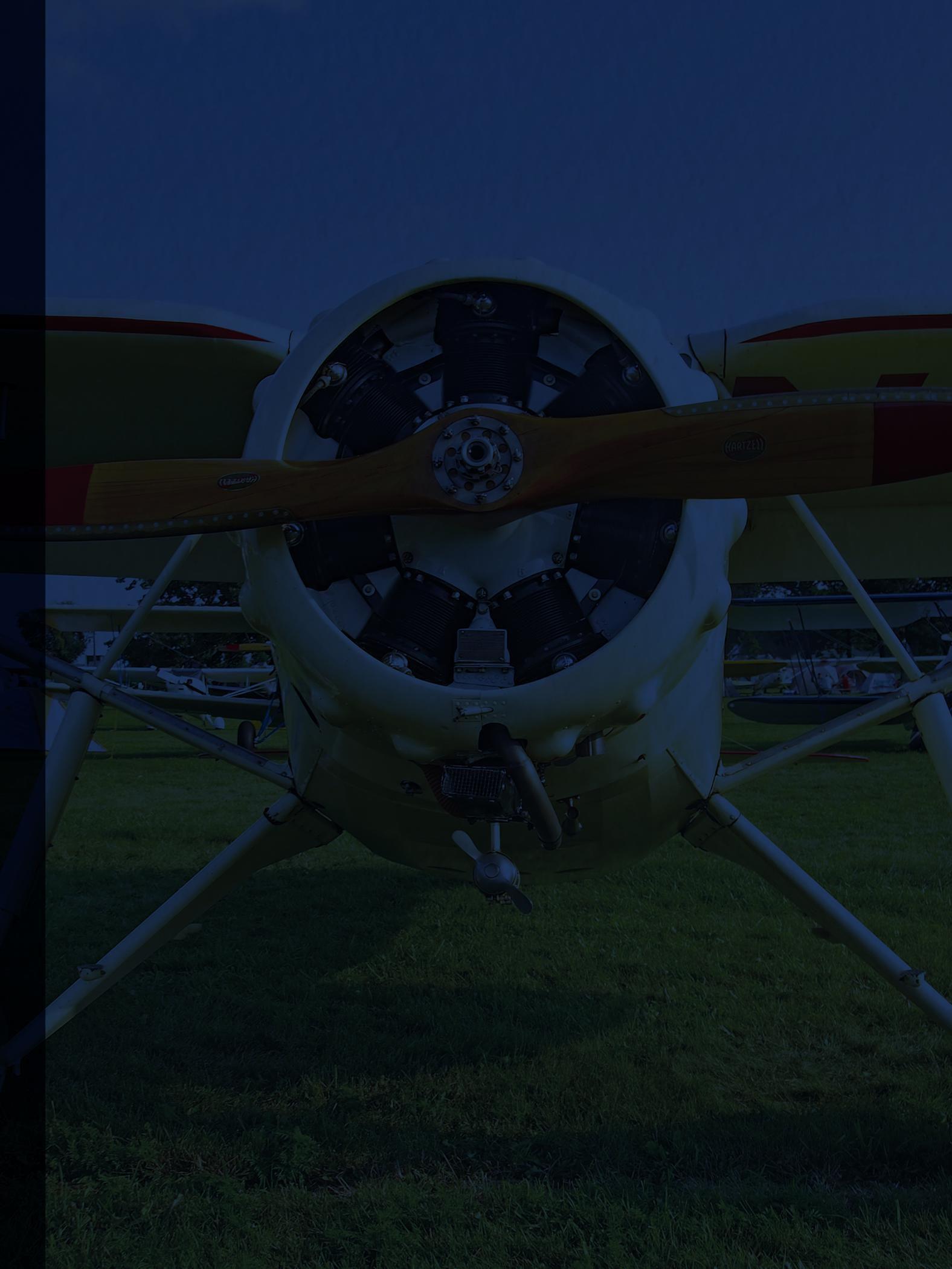
EAA’S THEME THIS YEAR was “Inspiring the Future of Aviation,” and there was a record-setting attendance of approximately 686,000 visitors. There were 1,200 vintage aircraft and 65 seaplanes and amphibians. Among the vintage aircraft, there were 83 Aeroncas celebrating the “Aeronca Nation” gathering, including nine Aeronca Sedans, an Aeronca C-3, and the EAA Aviation Museum’s Aeronca LC and Aeronca K.
The guiding light of the annual Vintage aviation celebration was the ever-enthusiastic team of VAA Director Ray Johnson and his wife, Judy. They kept the Vintage area hopping, with a kaleidoscope of impressive airplanes on display, as well as those gems that were discovered on the flightline and then featured during the Vintage in Review sessions. VAA President Susan Dusenbury was close at hand as well, along with Myrt Rose, benefactor of the popular Bill and Myrt Rose Park. The Fun and Affordable section across from the Vintage Red Barn was a popular venue again this year, and the Ladies for Liberty shared their musical talents by serenading pilots and enthusiasts with their vintage melodies.

New this year was the Charles W. Harris Youth Aviation Center building, fostering the motto of “Dream It and Let Your Spirit Soar.” Loyal volunteers Sue and AC Hutson were thrilled with the successful programs in this new facility. “This is our first year with a real building; we’ve been in a tent before at the edge of the hangar with our hands-on workshops. Now we have room to expand! We’ve done hands-on workshops for ages 6 to 12, Monday through Friday afternoons. On Wednesday, we had 77 youth come through, doing projects like hammering nails, building a
tool tray, and working with hardware. We also had them building a cellphone stand out of aluminum, so they could learn how to rivet,” Sue shared. “Our Teen Night was a huge success, with more than 120 attending. On Thursday, we had the Pilot Show-and-Tell program, and Nathan Hammond brought his de Havilland Chipmunk, GhostWriter, to show the kids and tell them his flying story. Everything has exceeded our expectations; obviously there was a need for this.”
1963 Lockheed 60
Orlo Ellison of Colorado brought his 1963 Lockheed 60 (N96038) to display by the Youth Aviation Center building, and it was quite the attention-getter. Painted school-bus yellow, both sides of the fuselage were adorned with “windows” that featured Peanuts characters and Charlie Brown on one side of the fuselage/empennage. Muppets characters and Big Bird were on the other side. This unusual airplane exuded a warm and cheerful welcome to youths in the Vintage area and won the Contemporary Most Unique award.
Antiques were well represented by a good number of open-cockpit and Cabin Wacos, six Staggerwings, eight Howard DGA-15Ps (and one rare Howard DGA-11), and several Stinson Reliants. Elsewhere, a complement of Fairchilds; a sprinkling of Taylorcrafts, Stinsons, Navions, Swifts, and Ercoupes; and a host of Pipers, Cessnas, and others were hither and yon. A rare covey of three Piper Vagabonds were nestled side by side. Some of the more unusual aircraft present included a Buhl Bull Pup, Bücker Jungmann, Stampe biplane, Waco S3HD, Meyers 200, Fleet Model 1, Funk, Spartan Executive, and Culver Cadet.
So c’mon! Let’s explore the flightline from the Vintage camping area down into the veritable sea of Aeroncas in the “Aeronca Nation” field, and then down into the South 40 to meet a few of the pilots and their aerial steeds.

Ferry pilot Emma Herrington hails from Honey Grove, Texas, and her husband, Cole Crawford, is from Houston. Emma grew up with aviation; her father is an A&P/IA mechanic, and being around small airplanes was just normal for her. But that doesn’t mean she took to it right away. “It used to be one of those things when I was misbehaving, my dad would say, ‘Okay, we’re working on airplanes.’ Well, that turned out to be a blessing,” she said.
She and Cole both soloed a Cessna 172 at 16, and Emma quickly became enamored with tailwheel airplanes that were more challenging to fly. Flying vintage biplanes is Emma’s passionate forte now, and she was entrusted to fly the Waco to Oshkosh. “The airplane belongs to Keith Lange of Wasilla, Alaska, and it’s for sale. [It won the Antique Silver Age Outstanding Closed-Cockpit Biplane award.] We picked it up in Lake Wales, Florida, and over two days brought it up here to Oshkosh. I do most of the biplane flying, and Cole does the instruction,” Emma said. “I was actually sitting in CFI school when I heard about an opportunity to fly biplane rides, so I quit CFI school and started ride-hopping. Cole became more of the professional pilot.”
Cole didn’t grow up with aviation at all; he just caught the bug when he was young and decided he wanted to fly. Emma’s motto, simply stated, is: “I want to work to never work! I love flying stuff like this, and the more rare it is, the more I want to fly it.” To date, a few of the most unusual airplanes she’s flown include a 1929 Waco Taperwing replica, a Rare Aircraft 2014 Waco CTO, and an experimental Javelin Wichawk side-by-side trainer biplane.
Emma flies rides with a Waco YMF-5 out of Galveston, Texas, and she and Cole both feel lucky to be involved in aviation. Emma recently became familiar with the popular Marginal Aviation group when she was at Reklaw, Texas, last year. “I flew the YMF-5 down there, and I was rippin’ touch-and-goes on the runway. And when I parked to camp with the airplane, I met one of the Marginal Aviation members,” Emma recalled. “The next time we heard about that group was when we came up and purchased my Travel Air project from Ted Davis at Brodhead. Marginal is just a really friendly, fun aviation group!”
The Travel Air project (SirenFlyingService.com) they purchased was, incidentally, the biplane that was in Richard Bach’s book Nothing By Chance.
VAA Hall of Famer Bill Pancake and wife, Saundra, of Keyser, West Virginia, were in the heart of the vast “Aeronca Nation” field with their Champ and their grandson, Michael Boggs. Saundra said, “The best part of the entire week was watching our grandson, Michael, landing the airplane on Saturday. How often does a grandson have the opportunity to fly his Grandpap’s airplane to Oshkosh? Another personal highlight was that Bill had 183 people attend his 45th Aeronca forum!”
Bill, humble and friendly as ever, enthusiastically displayed his latest clever invention. It was a nifty removable plastic tube affixed to the wing struts for dispersing ashes. Hinged closures on each end can be opened and closed by the pilot via handheld cables. As it turns out, Bill has not only a remarkable knowledge of Aeroncas and an ingenious streak for aviation gadgetry but also a knack for reciting (appropriately enough) The Cremation of Sam McGee, a 1907 poem by Robert Service. Bill’s Champ (NC1890E) received the Classic Custom Class A award.
Heavirland of Forest Lake, Minnesota
Greg Scroggin of Minnetrista, Minnesota, held a spritzer bottle of water in one hand and a microfiber towel in the other as he lovingly cleaned the leading edges of his Chief. The afternoon sun highlighted his progress, and the old Chief seemed to blush from all the attention. “I’ve had my Chief two and a half years now. Probably like most guys, we were looking for a Champ, which everybody loves. But I do like a Chief, so when this popped up for sale in Seattle, we decided to try it,” Greg said and smiled.
And try it he has. Though Greg hadn’t previously flown a “real cross-country,” his flight in the Chief from Washington to Minnesota certainly qualified. Powered by a 100-hp Continental O-200, his progress was a bit better than it would have been with the original 65-hp Continental. “The Chief carries 15 gallons in the main, and 8 gallons in the aux tank. It has a pretty good climb rate, and if I push it, the indicated airspeed flirts with 100 mph. I had plenty of headwinds, and that flight took 18 hours, but it was fun,” Greg said. “It’s my first airplane and was painted like this when I got it, and — knock on wood — I haven’t had to do anything to it. I have a 14-year-old son, Ben, who could probably solo right now.
My 12-year-old daughter, Jessica, flew it with me to Oshkosh. I’ll probably keep the Chief until they get their private. This is my fourth time at Oshkosh, and I just love the camaraderie of the people and the whole thing!”
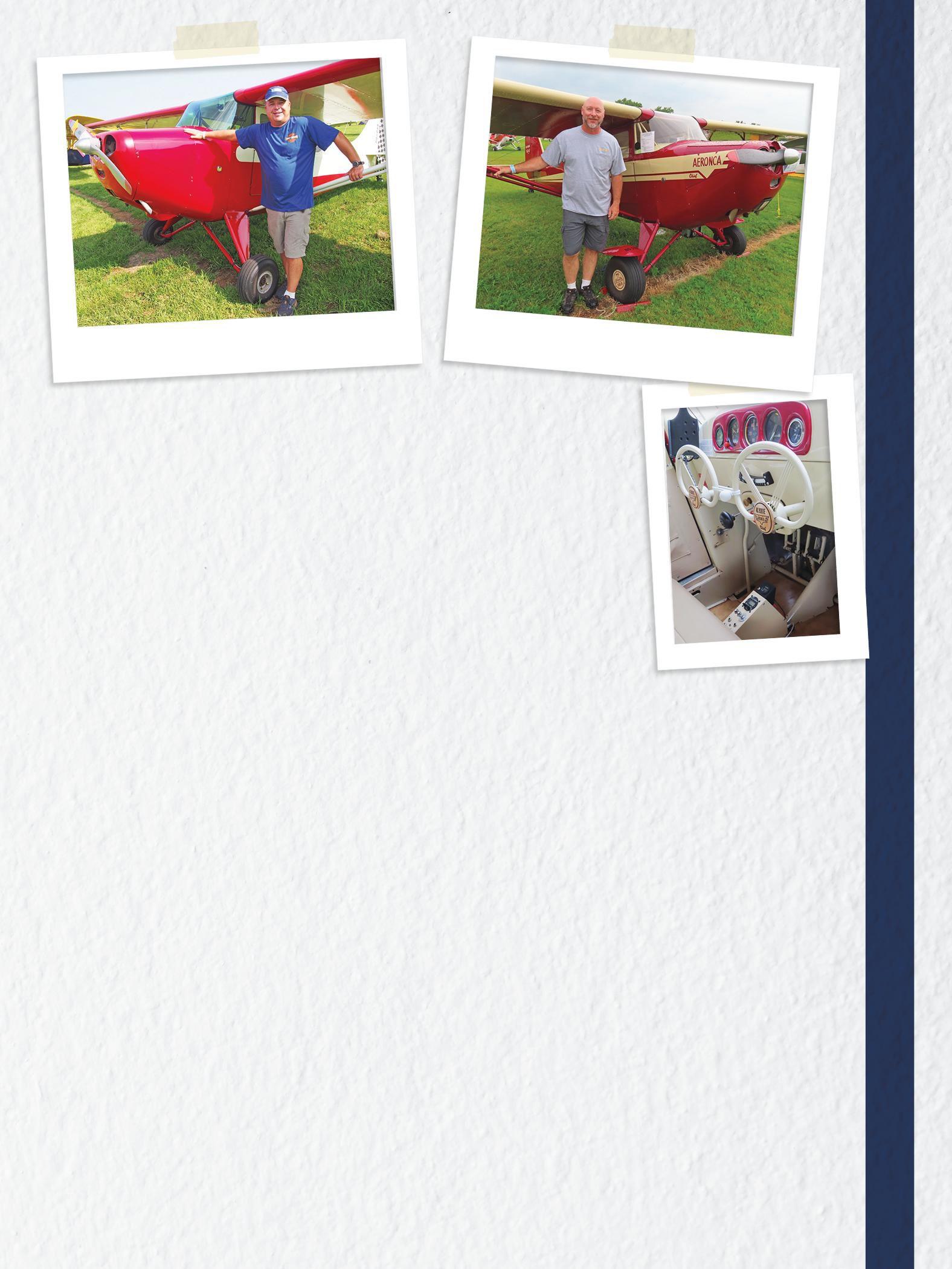
Multiple projects lead to multiple successes!
— Aubie Pearman, Cessna 195
Patrick Heavirland of Forest Lake, Minnesota, completed the ground-up restoration of his Chief about six weeks prior to AirVenture 2013. He promptly got his tailwheel endorsement in it and then flew it to Oshkosh. He personalized his Chief with custom touches, including Aeronca logos on the hub caps, magnetic door catches, and a hinged, accordion-style baggage compartment lid.
A bit of historical trivia is that the first owner of Pat’s Chief was J. Sharpless Richie of Riverton, New Jersey. That’s notable because he was one of the original founders of that state’s chapter of the National Flying Farmers Association in 1946, and Aeroncas were advertised and utilized as “farmhands” during that era.
This year, Pat was camping with his Chief in the “Aeronca Nation” field. Pat didn’t stop working on his Chief when the restoration was completed — he came up with another project to complement the flights around local airports that he and his father, Bob, each enjoy in their respectively restored Chiefs.
“I wanted a regular radio, but I didn’t want to cut a hole in my panel or mess with a field approval or STC. So I came up with an idea for a removable radio box. It just mounts on the floor right ahead of the seat,” Pat explained. “Originally, I used a 12-volt motorcycle battery in it, and it was all self-contained inside a sheet metal box. Four screws hold the box to the floor, so it can easily and quickly be removed. The box also has headset jacks, and I routed wires from it for my push-to-talk switch. I had a cigarette lighter on the back that I could plug my GPS into, and I used an 18-inch
square solar panel to charge the battery while the airplane was out on the flightline. The antenna is mounted on the frame under the baggage compartment.”
As the years passed by, Pat desired a bit more horsepower, so he decided to remove the old Continental A65-8 that was originally on the Chief. “I used Bill Pancake’s STC for the C85-12 engine, which has a starter and a regular battery mounted on the firewall. So now I have my removable radio box with a Flightline FL-700 radio hooked up to that battery, instead of using a motorcycle battery,” Pat said. “I’ve also added a voltmeter to the radio box, which is really handy — now I don’t have to wonder how good my battery is!”
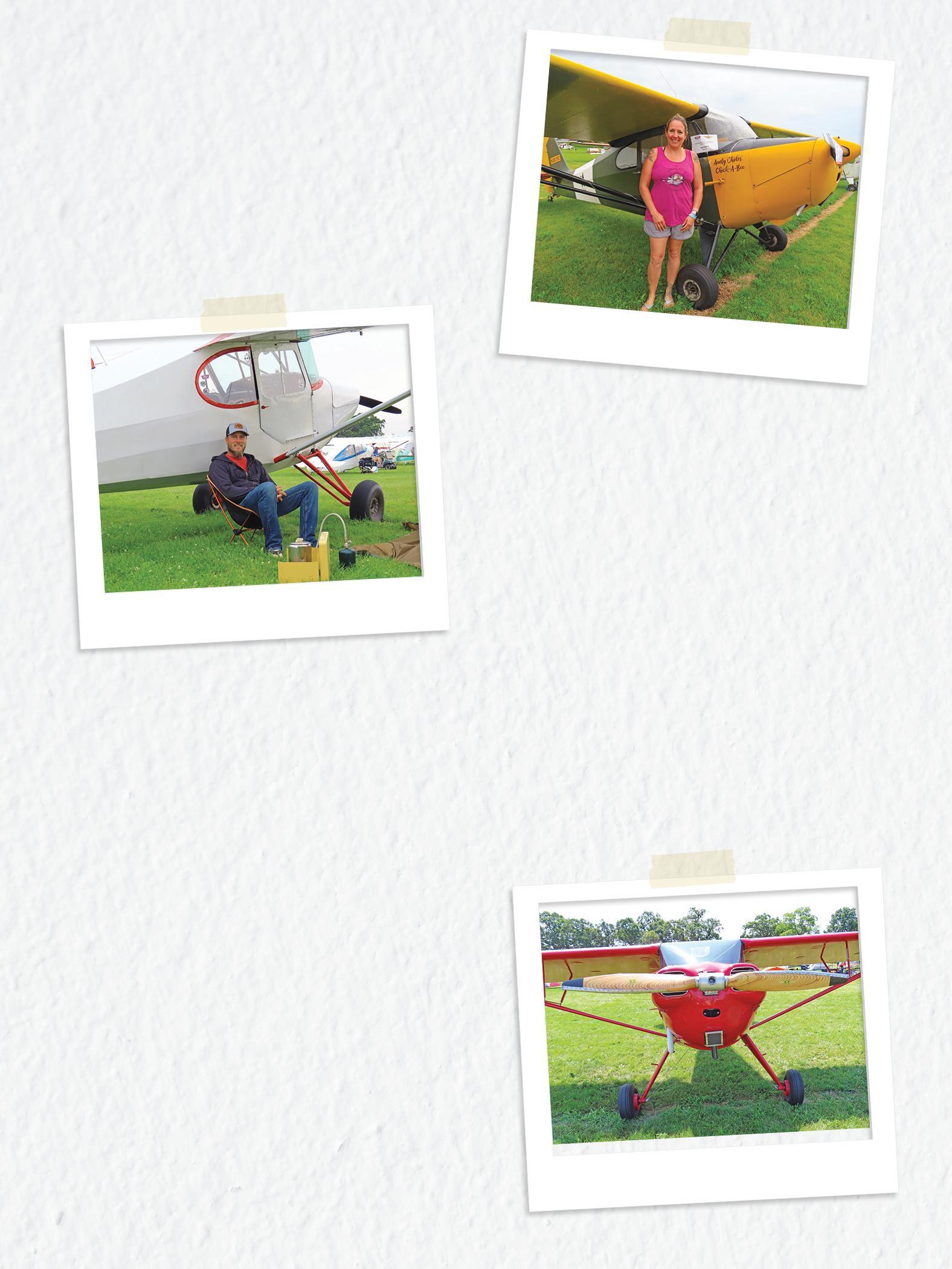
Greg Wock had his camp stove fired up one cool morning for a refreshing cup of steaming coffee. He flew his Sedan down from Estevan, Saskatchewan, for his first visit to AirVenture. Accompanied by friends in another Sedan (C-FOID), the flight took about seven-and-a-half hours. “I’ve owned this since 2018, and I like being able to haul the whole family in it. This airplane has an O-300 engine and will cruise at 95 mph. I like the vintage airplanes — I guess I’m kind of into vintage everything, because I have old motorcycles, tractors, and an older truck,” Greg said. “I’ve always been interested in aviation; somewhere around 2016, I saw a sign for a ground school course. I took that and have been into it ever since. I always wanted to come to Oshkosh, and when they announced they were featuring the ‘Aeronca Nation,’ that was extra incentive to fly down here. It’s pretty cool, and there’s a lot going on here. I’ve met lots of folks, and I’ve heard there are nine Sedans here, which is pretty unusual!”
Schoolteacher Nicole Jonas flew her Chief from nearby Brennand Airport in Neenah, Wisconsin, to Wittman Regional Airport with her flight instructor before AirVenture started. She’s owned her Chief for a year and is working toward her sport pilot certificate. “The airplane came with this paint job, but I added the Aunty Choles’ Chick-a-Bee on the boot cowling, and the chicken — which is painted like a bee — on the fuselage. My dad called me Choles, and my nieces and nephews now call me Aunty Choles. And I have chickens and bees at my house, so that’s where the name comes from and the little chicken,” Nicole explained.
Nicole’s husband is a mechanic and pilot, and when she went up for a Champ flight with her cousin, she became inspired to take flying lessons. “I was going to train in his Champ, but I found this for sale and bought it. I’ve got just under 20 hours, but it’s been spread out, so I need to make an effort to just put it on the calendar and get it done. This is all I really want to fly — just go to burger burns, pancake breakfasts, and airports with grass runways.”
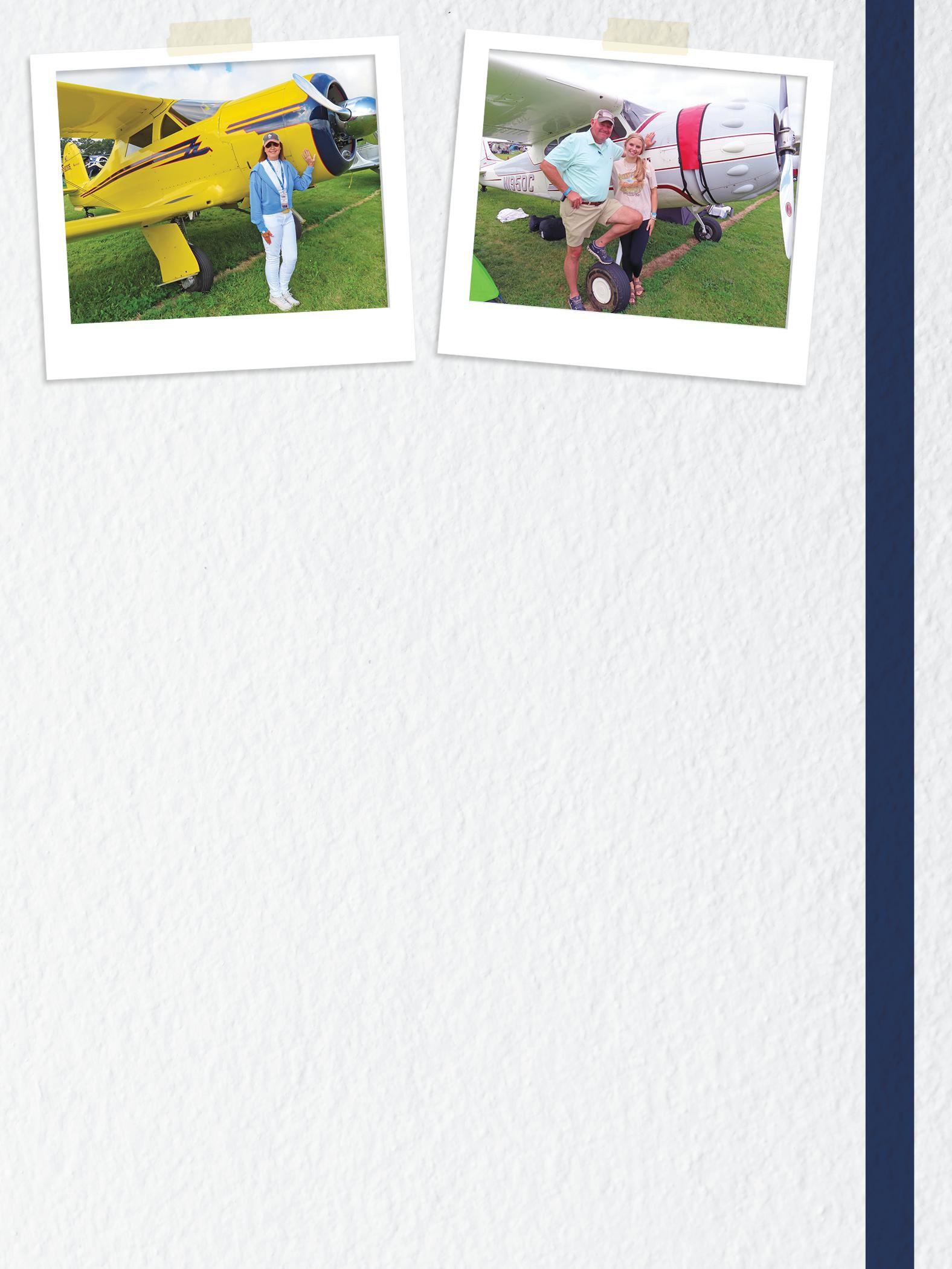
Gayle Gorman Green
Gayle Gorman Green of Wooster, Ohio, feels privileged to carry on her family legacy with NC80305. Her late father, Jim Gorman, owned this Staggerwing for 55 years. Gayle has been flying since she was 19 and holds a commercial certificate with helicopter, glider, seaplane, and instrument ratings. She frequently flies an A36 Bonanza, and recently learned not only how to fly tailwheel airplanes, but also how to handle the Staggerwing — all in a year’s time. She earned her tailwheel endorsement with John Dye of Bad Attitude training and then continued practicing in her Citabria. A handful of Staggerwing pilots and friends, along with her husband, Rich Green, bolstered and supported Gayle as she ascended the learning curve to fly the Staggerwing.
She attained her goal and was pilot in command for her flight to Beech Party last fall. Her mother, Marge Gorman, was the first woman to fly a Staggerwing to the gathering in Tullahoma in the 1970s. When it came time to fly to Oshkosh, Gayle thought it wise to have Mike Toman, who had taught her to fly the Staggerwing, fly left seat into KOSH.
“It’s been a very emotional time being here; this is the first time I’ve been at Oshkosh without my father — ever. But he would want us to be here, and I’m just thrilled that we have other Staggerwings here with us,” Gayle said. “There’s a lot to do in this airplane, and it needs to be done quickly. I only have 10 hours in it and Oshkosh is a busy place, so I was in the right seat and Mike flew it in. We fly well together, and it was a good flight. As for the future, I would very much like to keep the airplane and keep flying it. I think that’s what my father would want us to do.”
Aubie Pearman and his daughter, Hattie, of Tupelo, Mississippi, were relaxing under the wing one morning. Aubie is a longtime 195 enthusiast, and though Hattie is only 15, the same could be said for her. Reaching for her cellphone, she happily displayed a cherished photo of herself as a baby in her father’s lap in the cabin of a 195. Clearly, this father-daughter duo bonded with each other early on.
Interestingly, Aubie had just acquired N1950C. “I bought this one day before yesterday, right here — and I have another 195 project that will be complete the end of this year. This one has a pretty interesting story; 20 years ago a customer approached me about wanting a 195, and he ended up buying one. Then a few years ago, he approached me again and said, ‘I need to design an exit strategy for me and this airplane that’ll be palatable to me.’ I said, ‘Okay, that’s easy; I’ll just buy it,’” Aubie laughed. “This one’s a pretty special airplane, because it’s the newest 195 in the world. It’s serial No. 16183 and was the last one built — hence I named it Tail End Charlie. I knew Mort Brown, who was the head of certification testing at Cessna from 1937 to 1972, and he did 14,000 first flights. He test-flew this one when it was brand new and signed his initials, MRB, on the test-flight entry in the original logbook — but didn’t put the date.”
Aubie has attended AirVenture since 1997 and hasn’t missed a year (other than 2020) since 2004. Hattie will soon be acquiring some hands-on fabric-covering experience with a Cessna 140 project, along with her two brothers, who will be doing the same with Cub projects. “We’re going to have a covering party for three sets of wings. Multiple projects lead to multiple successes! There are lots of ancillary people in the local community who’d love to come and watch and learn how to do those things,” Aubie said. “The 140 also needs some avionics and just a little general maintenance and it’ll be flying again. Hattie turns 16 in December, and her grandfather has a Champ that all the grandkids are flying. She’s flown it a little bit, and sometimes it is agreeable to her ministrations and sometimes not so much so!”
Hattie chimed in and teased her father: “I like being here at AirVenture and exploring and seeing all the different airplanes. I can ask my dad a question, and most of the time he knows the answer. If not, he gives an educated guess — very confidently!”
Boundless energy and enthusiasm simply effervesced from Sherri Dietrich and Rocky Driggers as they described their Luscombe project. It all came about when they moved into the Twelve Oaks fly-in community in Hernando, Florida.
“We have a very small house and a large hangar, and I said, ‘We need to have an airplane if we’re living here!’ I wanted a two-place, side-by-side vintage airplane,” Sherri said. “I asked Rocky if he was going to teach me to fly, or if I should hire a flight instructor. He said if he was going to teach me to fly, it had to be a taildragger. He was hands-off during my search for an airplane, because he had a Citabria project he wanted to finish. I posted on the Luscombe group on Facebook, and a gentleman reached out privately, and he was only an hour away from us. I told Rocky about it, and he got really excited and his eyes lit up. Don Luscombe created it to be an affordable airplane, which really spoke to me.”
They bought the Luscombe, and Sherri listened when the airplane whispered its name to her. “Poppy just came into my mind when I saw her. She has a C85 stroker engine off of a Vagabond, and it’s bright yellow like the center of a flower, and the airplane is red and black, like the red petals of a poppy,” Sherri said. “We bought her and have done a lot of touch-up painting and other hands-on work. We had new upholstery made, and all of that sparked another passion of wanting to bring her up to another standard. We worked on her together — teamwork makes the dream work!”
Rocky and Sherri seemed like such a perfect pair, one couldn’t help but ask how they met. “I found her on Tinder, the dating app. She was like a catalog order,” he laughed. “We should make a Tinder called Vintage Pilots Meet! They say the test of a relationship is redoing a house, but I think its redoing an airplane together. We were planning our wedding and restoring the Luscombe at the same time. Now here we are with the airplane at AirVenture in July, and we’re getting married in August!”
Sherri is a student pilot now and didn’t grow up around aviation, but Rocky did. “I was pretty much born into it; I didn’t have an option! My dad flies for fun, and I grew up around his Mooneys and Bonanzas,” Rocky said. “But I’ve always been an old-airplane guy. I soloed in a 1963 Cessna 172, which I promptly sold and bought a Great Lakes.”
Sherri and Rocky’s time en route to Oshkosh was 11 hours and 35 minutes. They clearly had a great flight and agreed their restoration process could be summed up as instant gratification after a long
delay. They flew home with the Antique Customized Aircraft Runner-Up award, and chances are there’s another airplane restoration in their future.
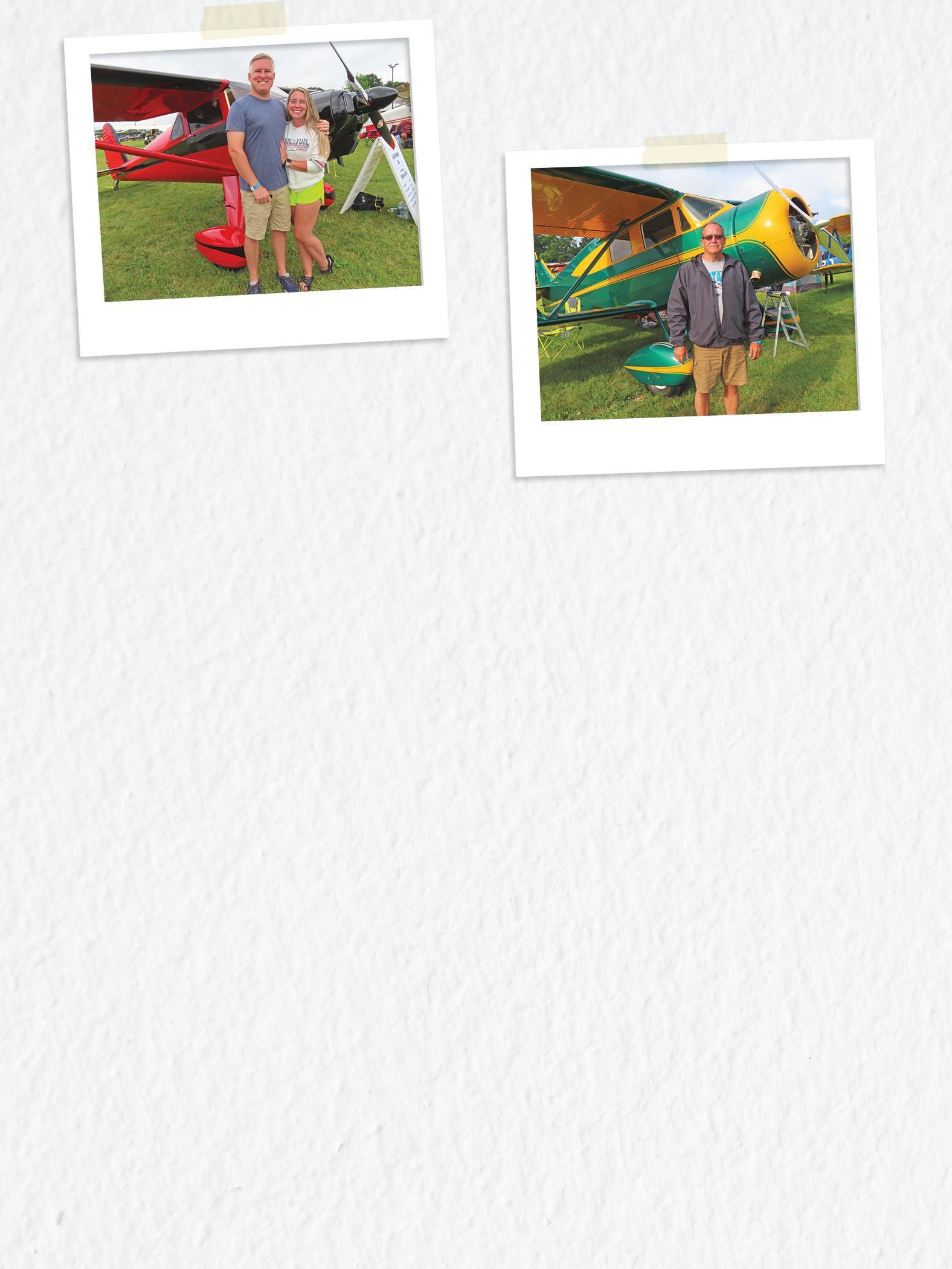
David Satina of Norton, Ohio, transitioned from a small, short-coupled Piper PA-15 (which he still has) to an antique Cabin Waco in 2016. He first soloed at 16, earned his private at 17, and has been tinkering with airplanes ever since.
“I was a carpenter, and airplanes have been a great hobby for me,” he said. “I’ve met a lot of interesting people over the years. I purchased the Waco out of Anoka, Minnesota. It took several trips to get it home to Ohio, and Ken Kreutzfeld and Mike Iverson were a great help. Ken flew it to Port Clinton, Ohio, on a ferry permit for me. We checked everything out and replaced the hoses and had the mags and generator redone. I’ve been flying it ever since.”
One of the biggest challenges David faced while transitioning from the Vagabond to the Waco was adapting to the Waco’s physical size. He had to “overcome the mental intimidation of how a crosswind would affect it. Plus, it has the wheel yoke instead of a stick, so it’s all different,” David said and chuckled. “I started out doing full-stall landings on grass, and then transitioned to wheel landings on pavement. The Waco is very accommodating and forgiving, because it’s got oleo struts and good rudder authority. I’ve also got a 1958 straight tail Cessna 182A.”
David especially enjoys AirVenture because of the friendly and cordial people he meets in the Vintage area. Last year, his Waco received the Antique Bronze Age Outstanding ClosedCockpit award. Sharing a bit of its history, he said: “This was a brochure airplane, and it was delivered to a Miss Laurette Taylor in Youngstown, Ohio, when it was brand new in 1938. I got hold of the historical society to get information about her — she was an only child, and her father was involved in a steel company and banking. Years later, Tony Barnum owned it up in the Toledo area. Ken worked for Tony in the 1980s and flew the Waco quite a bit. Tony was an accomplished pilot and colorful character, and his cigar butt is still in the ashtray — and I found a complete cigar in the tail of the airplane!”
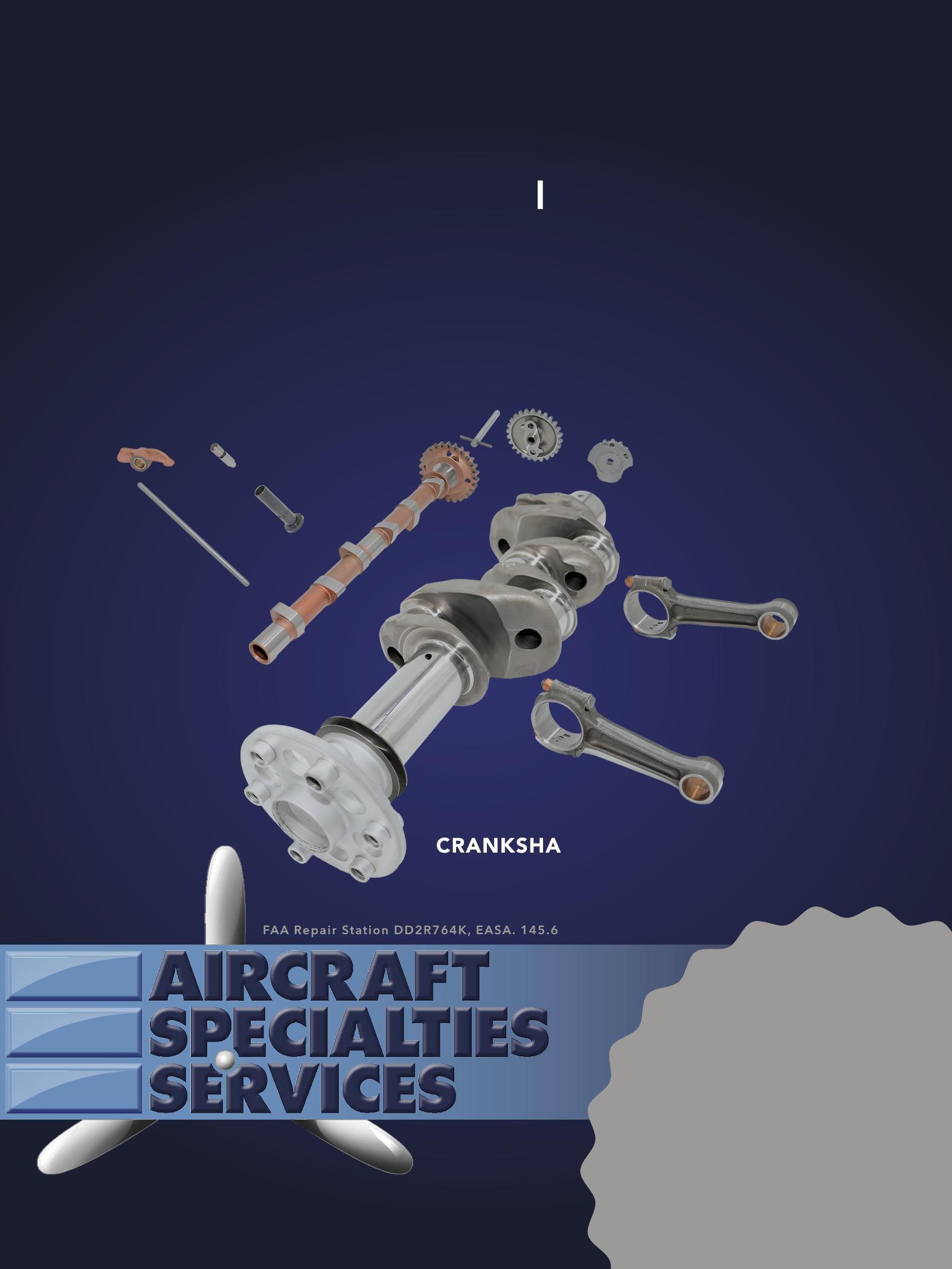
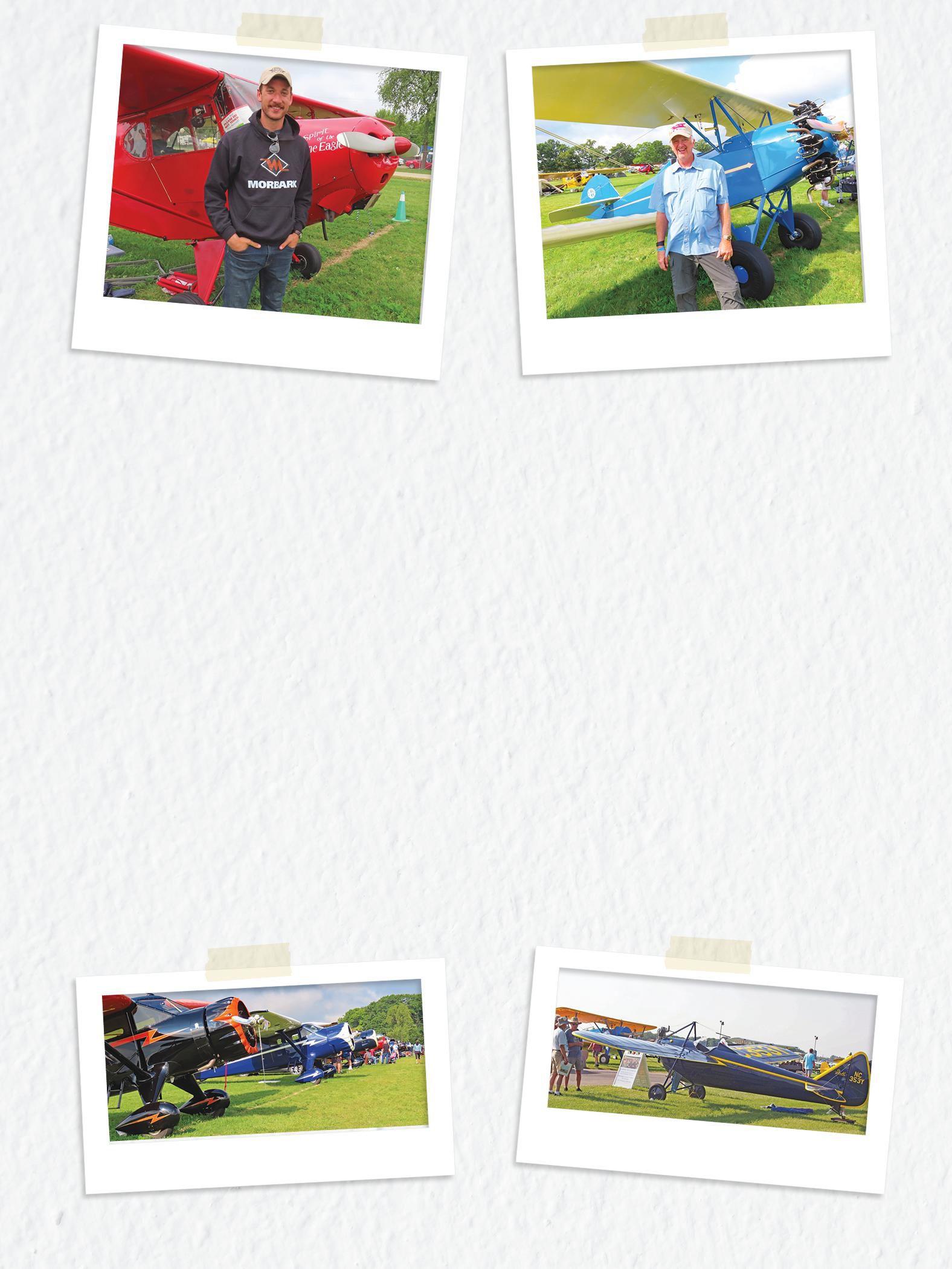
Aaron Smokovitz and his brother, Blake, of Midland, Michigan, were among the younger generation of vintage enthusiasts at AirVenture. They acquired their Porterfield last October and successfully summited a mountain of paperwork snafus.
“This airplane was restored about 20 years ago by three gentlemen, and they named it Spirit of the Lone Eagle. We love stick and rudder, and were looking for a rag-and-tube tailwheel airplane without an electrical system — just something dirt simple and historical! But it’s hard to afford things like that at our ages, so we took the gamble on this. We had the joy of working with the FAA for a few months, and all the paperwork is straightened out now. It was a bit of a juggle, but it was worth it,” Aaron said and smiled. “We pinched our pennies and made it happen; now we have an affordable way to be involved in vintage aviation.”
Their Porterfield was originally powered by a Lycoming (hence the LP-65 designation), but that was changed to a 65-hp Continental. “The Porterfield provides an efficient and economical way to fly; the Continental burns about 4 gph. The airplane has an M6 airfoil, which is semisymmetrical and different from the flat bottom wing of a Cub or a Champ. We have the same engine, but we go about 20 mph faster than a Cub. We cruise around 90 to 94 mph, and it took about six-and-a-half hours to fly here from Michigan,” Aaron said. “I really like the quaint and quiet atmosphere in the Vintage area and being surrounded by airplanes way cooler than mine! I love the camaraderie, and everybody is so supportive of each other.”
Tony Caldwell of Oklahoma City didn’t really plan to become caretaker of a Fleet, since Wacos are filling his dream airplane collection. But then along came Scott Woods, who brought a restored Fleet Model 1 to Brodhead, Wisconsin, last year. The two gentlemen share a hangar there, and somehow Scott was able to entice Tony to purchase the Fleet.
“This airplane was in the northern California area until last year. It was crashed in the 1940s, and in 1966 it went over on its back and was put in a barn. It stayed there until 1992, when aeronautical engineer Paul Seibert acquired it. Paul spent 31 years restoring this airplane at Sonoma Skypark. He did probably 95 percent of the restoration. After he passed away, Scott Woods bought the project from Paul’s widow, Marilyn,” Tony said. “Scott took it to West Coast Air Creations at Flabob Airport, and they finished it. I think it’s a neat airplane, and Paul’s dream was to come to Oshkosh with it. That’s why we brought it here, and maybe we’ll win an award for Paul.”
As sweet serendipity would have it, the Fleet was proclaimed by the Vintage judges as the Antique Silver Age Runner-Up. But that’s not all … Tony has a hangar at Sonoma Skypark, and NC607M will soon fly full circle back to Sonoma, where Paul Seibert’s gentle and enthusiastic spirit breathed new life into that special barn find.

A couple of weeks later, Cupid orchestrated another chance meeting for them, and they exchanged names and phone numbers. “It was a whirlwind romance,” Rick said. “I proposed to her under the tower at Triple Tree in September 2022, and we got married in February 2023 in Key West on a layover.”
Rick was a bit hesitant to take the plunge and buy the Howard, but Jan encouraged him. “Owning and caring for this airplane is a legacy of love. Rick loves the Howard so much, and I love how happy it makes him,”
Jan said. “He’s like a little kid; he’s so overjoyed! And it’s great to be here at Oshkosh with it. I came here as a child, but now with adult eyes, it’s a new wonderland!”
“Newlyweds” Rick and Jan Maury of Rock Hill, South Carolina, were as excited about their recent Howard purchase as a couple of kids in a candy store. NC9125H is powered by the reliable 450-hp Pratt & Whitney R-985, and is a comfortable cross-country airplane with a cruise of 160 mph and a range of 1,000-plus miles. The Howard was restored at North Little Rock, Arkansas, by previous owner Presley Melton, along with Jim Marlar and David Bunning. After three years and three months, and one tornado, what had once been a pile of puzzling parts had been transformed into an award-winning Howard.
“I bought ‘Presley’s airplane’ and flew it home March 15. I’ve always loved vintage airplanes and always wanted a Howard,” Rick said. “When I was 16, I bought a 1946 Luscombe and just hung out with all the vintage guys in San Jose where I grew up.”
Jan is a pilot as well, having grown up in an aviation family. “My father was with the Air Force, and I hung out at the airport,” Jan said and smiled. “Anytime at the airport was a good time. Watching airplanes all day long was my happy place.”
Jan and Rick were clearly delighted with their Howard, and also to have found each other. “My wife passed away from cancer in March 2013, and I was bound and determined never to get married again. Lo and behold, I was working a red-eye flight out of Phoenix, and Jan was working my flight as an agent. We got talking, and she said she’d just gotten her private and owned a Citabria. So it was love at first sight — but then I spent three hours in the middle of the night wishing I’d gotten her name.”
Scott Thompson and his father, Tom
Scott Thompson and his father, Tom, were parked in the south fenced-in area, along with many other vintage aircraft. The Thompsons live just south of Columbus, Ohio, and both have been happily active in aviation for years. Tom is 81, and back in 1970, he went to Oshkosh and declared, “I’m buying an airplane! I bought a Chief and was lucky enough to find an instructor. I soloed in it and took my checkride the day after Christmas.”
Then, in 1996, Tom’s son, Scott, just happened to take his checkride the day after Christmas in his own first airplane, a Cessna 140. In 1997, Scott made his first visit to AirVenture and hasn’t missed a year since. He bought his 180 in 2016 and has already put 800 hours on it.
“It was wrecked in the 1980s — the landing gear was wiped out and there was a lot of damage — and a guy by the name of Ken Kennedy put it back together. Then he sold it to Bob Giffin in Ohio, who put the interior in it. Now I’m benefiting from their hard work,” Scott said and smiled. “I’ve flown it more than both of them combined! The 180 allows me to go in to a lot of grass strips that most people wouldn’t go in to, and I’ve met a lot of people doing that. I’m fortunate enough to have a runway at my house; it’s short with obstacles at both ends, but this gets in and out just fine. I like the 180 because it does everything well, and it’s a lot of fun.”
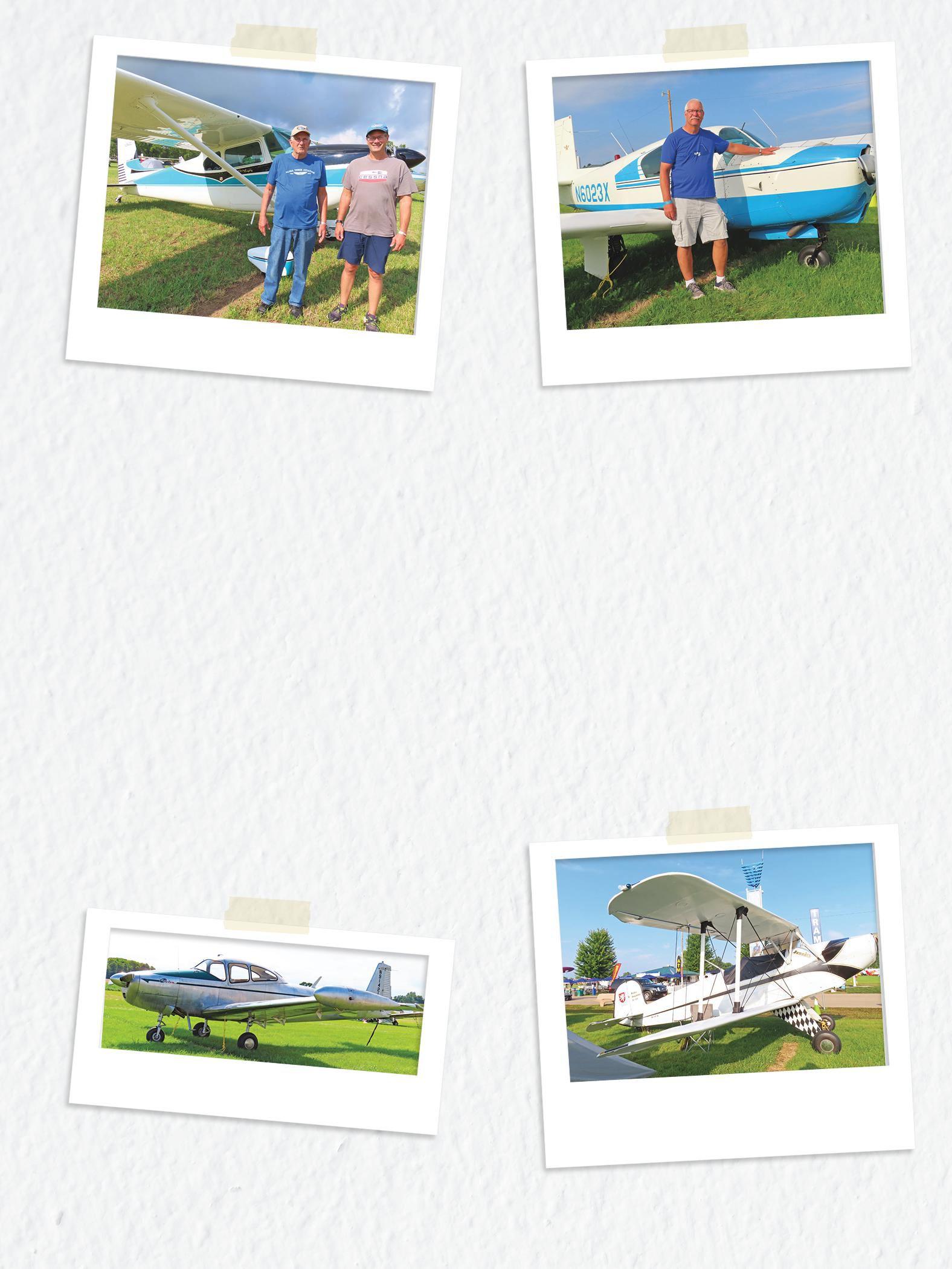
Doug Sytsma
Those strolling the flightline with discerning eyes noticed something different about Doug Sytsma’s Mooney; the wings were sans rivets, because N6023X was among the last Mooneys built with wood wings. Doug has owned it six years and bases it at Plymouth, Michigan. This year marked his fourth visit to Oshkosh in it.
“It needed some work when I bought it. I basically overhauled the landing gear and engine, put a new prop on it, and added shoulder harnesses,” Doug said. “The paint scheme is almost exactly original; it only has a couple of minor changes. The wood-wing Mooneys have an AD on the tail and wings, and very few still have a wood tail. This one was replaced with a metal tail in 1986. I love bringing it here because people ask questions, and you get to talk to and meet people from all over the world. It’s great being part of the aviation community!”
This 1947 Bücker Bü 131 Jungmann (N707S) was formerly owned by aerobatic pilot Mira Slovak. It’s currently registered to Benjamin Britton of Milwaukee, Wisconsin.
Jeri Barrientos of Collinsville, Oklahoma, has six airplanes; she bought her J-4 and Cessna 172 before she had her private. She originally planned to fly her Rose Parrakeet replica (which her father and friends rebuilt from a wreck) to AirVenture, but instead chose to fly her Cub Coupe, which is powered by a Continental C85 stroker engine. The Coupe is similar to a Cub but has side-by-side seating.
“I’ve had the J-4 about four years, and I love it because it flies ‘low and slow’! It’s so much fun seeing the countryside,” she said and smiled, “and it has such a unique personality. It’s just so different from all my other airplanes. My groundspeed for the first three legs was about 69 to 74 mph, and my last leg was about 86 mph coming in to Watertown. We popped over to Brodhead on Friday, and when I came back to Oshkosh, my groundspeed was up to 106 mph! This airplane was named Rosie by the person who owned it before me. I kept it, because I live close to the old McDonnell Douglas plant in Tulsa, and there’s a lot of history there with Rosie the Riveters.”
In addition to caring for her fleet of aircraft, Jeri has taken on what may be considered as a Herculean aviation mission. “I feel like I’m being called to build a 1933 T-32 Curtiss Condor II,” she said and smiled. “It all started with a dream I had camping under the wing of my airplane in a tent here at Oshkosh. In my dream, I was loading up all the family in an airplane that had fold-down beds. I described my specifications to a friend of mine — a tailwheel, fabric-covered biplane that is so unique that no one else has anything
like it. He asked me if I’d ever seen a T-32 Curtiss Condor, and the first picture I pulled up was American Airlines’ sleeper plane. It was literally the airplane I had dreamed about! Right after that, the T-32 plans came up for sale on Barnstormers, so now I have the plans to build it. For me, it’s either ‘go big or go home!’” (CurtissCondor.com)

“Let’s see if I hit Dayton about noon, then steer say 310, I should make Chicago at about two-thirty.
Plentyoftimetotake my nap and still take in the Cubs game.”
Early on, Ohio was a big aviation state: the Wright Brothers, John Glenn, Eddie Rickenbacker, Dominic Gentile, and of course General Barnett Overbite, USAF, Retired, shown here planning a cross country early in his career.
Very late in his illustrious career he wandered into the unattended cockpit of a Boeing 737, sat in the right seat, pushed the gear lever up, and proclaimed most assertively “Bombs away!” By design, only the nose gear came up, causing panic, screaming, and a mad scramble for the doors. General Overbite was then gently escorted to some nice new quarters.
Trevor and Emily Niemyjski of Union Grove, Wisconsin, were in front of the Vintage Red Barn with their 1938 Waco YKS-7 (NC19373). Trevor grew up with vintage-type aviation and just finished restoring NC19373. It was awarded the Antique Reserve Grand Champion Silver Lindy.
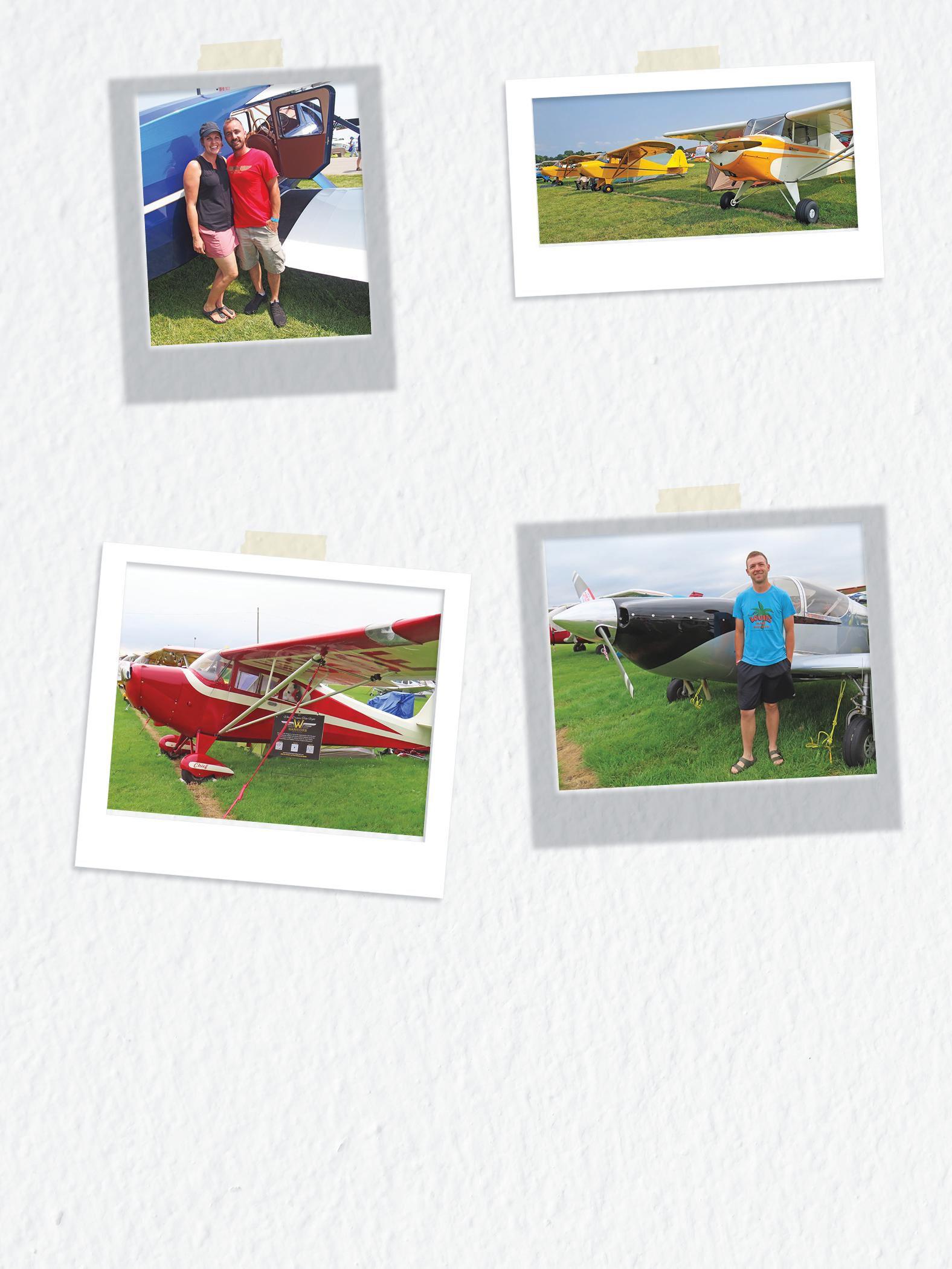
A trio of 1948 Vagabonds flew together from Memphis, Missouri, to Oshkosh. Parked in the middle was Devon Martin and Alvin Musser’s freshly restored NC4627H, which was awarded the Classic Reserve Grand Champion Silver Lindy. Leo Fox owns the yellowand-white NC4567H (foreground), and Harve Applegate owns NC4304H (background), which he restored a number of years ago.
Snoopy is a 1946 Aeronca 11AC Chief (NC9510E), lovingly cared for by Ryan Meléndez of Valley Center, California. Ryan recently created Warriors with Wings (https://TheWarriorsWithWings.com), a nonprofit organization to introduce children and young adults to the freedom of flight during their battles with cancer. The organization also promotes awareness of pediatric cancer and raises funds for research. Ryan, now in his mid-20s and a professional pilot, was inspired to create the nonprofit by a deeply personal passion born of his own successful three-year battle with cancer as a teenager.
Ray Brown of Center Point, Indiana, went for his first ride when he was a month old, and now at 23, he has his CFI, CFI-I, MEI, and A&P mechanic certificates, as well as a DC-3 type rating. Ray was enjoying camping beside his Swift this year.
Robbie Staton of Lonoke, Arkansas, won the Classic Custom Class B award for his Piper J-3, N1455N. Finished with AirTech coatings, this clipped wing Cub adopted the paint scheme of Hazel Sig’s Cub as a tribute to her aviation legacy and pioneering achievements in aerobatics and the RC model world. (That’s Hazel SigHester, of Sig model fame.) Robbie asked her permission to replicate the paint scheme, and when he finished the restoration, he flew it to her in Grinnell, Iowa, in early September 2023 so she could see it in person. At 101, Hazel was delighted to see the Cub and pronounced her blessings upon it by autographing its door panel.
The Spirit of Triple Tree (NC13PH of Triple Tree Aerodrome, Woodruff, South Carolina) was in front of the Red Barn all week. This glistening Spartan 7W Executive participated in AOPA’s historic National Celebration of General Aviation D.C. Flyover on May 11, 2024.
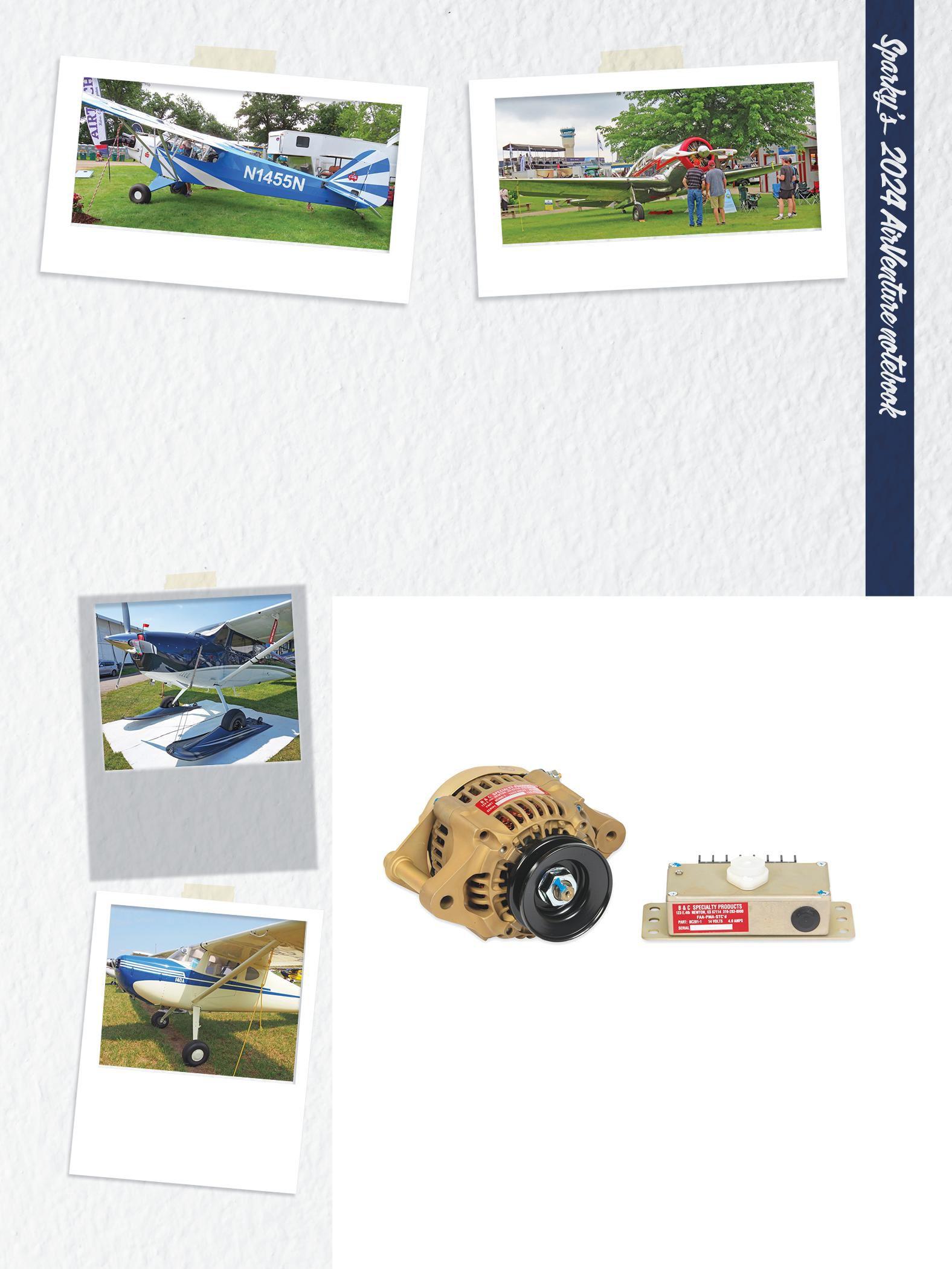
This freshly restored 1970 Cessna 185E (N641DA) is owned by Anne Foley of Lake Geneva, Wisconsin. It won the Contemporary Grand Champion Customized Gold Lindy.
Austin Revlett of Sacramento, Kentucky, won the Classic Outstanding Cessna 120/140 award for this pretty 1949 Cessna 140A (N3782V).
The BC400 Alternator system is now FAA-approved for Piper J-5C, PA-11, PA-12, PA-14, PA-16, PA-18, PA-20, and PA-22 aircraft. Includes brackets for Wide- or Narrow-deck engines ... with NO change of oil cooler location required!
Fresh from an immaculate restoration by Rare Aircraft of Faribault, Minnesota, this 1936 Pepsi Stinson SR-7B was in front of the Red Barn all week. NC3040 was the first production Gullwing, and was proclaimed the Antique Customized Aircraft Champion Bronze Lindy award winner. Garry and Janne Ackerman of Plano, Texas, own this remarkable Stinson and happily shared its history with countless admirers during AirVenture.
Kent Carder of Lakeville, Minnesota, has owned this 1953 Cessna 180 (N2219C) for two-and-a-half years; before that, his father owned it for many years. Kent and his young daughter, Madeline, were camping with the 180 in the South 40. N2219C won the Classic Outstanding Cessna 180 award.
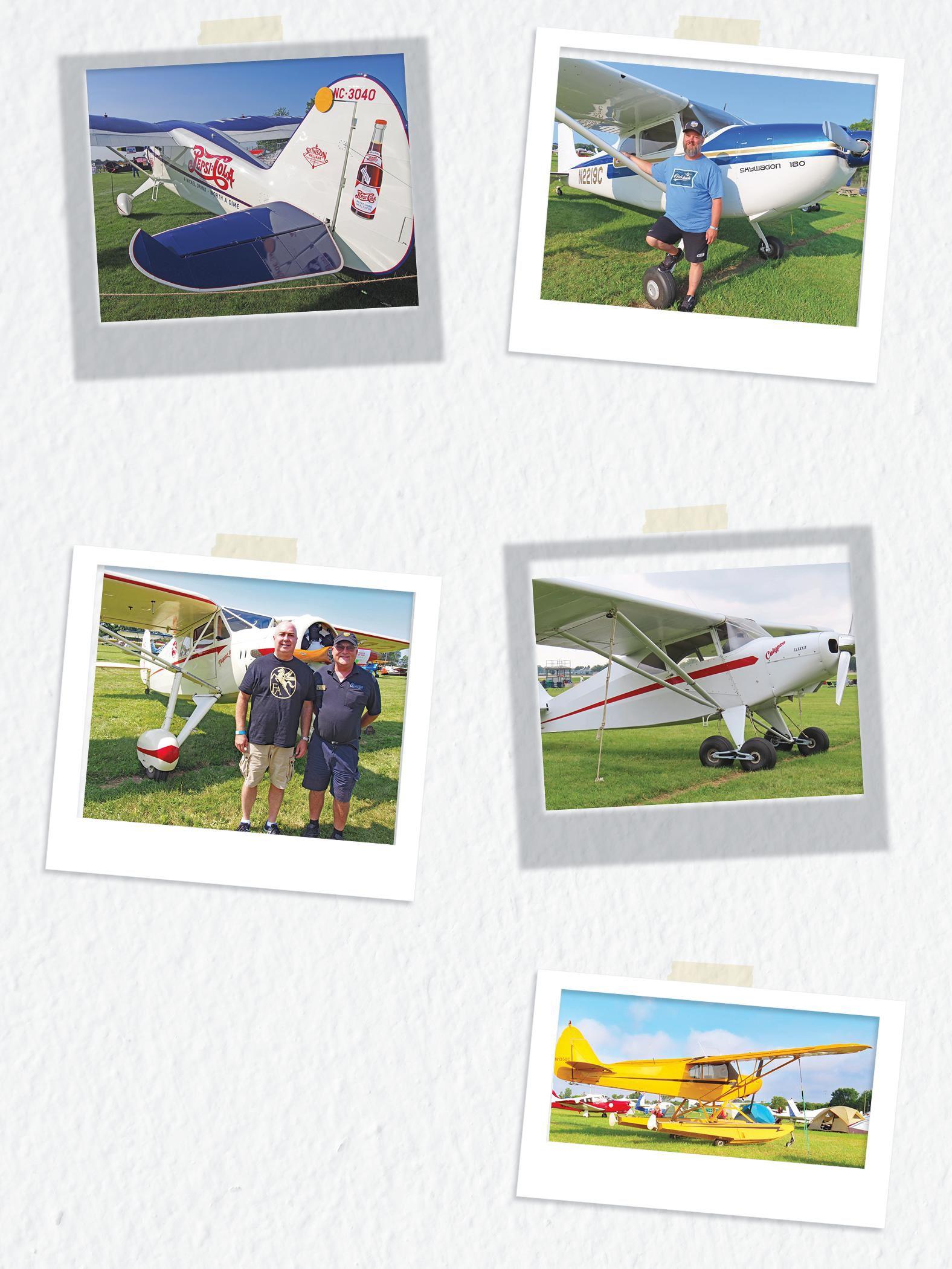
This 1935 Fairchild 24 C8C (NC15921) was recently purchased from the Hiller Aviation Museum in San Carlos, California, by North Carolinians Jake Atteberry and Brian Pyle. These new caretakers were thrilled to share the Fairchild’s unique history during AirVenture, and one can just imagine that the Fairchild itself was ecstatic to return to the sky.
Ben Presten of Sonoma, California, owns this 1949 Piper PA-16 Clipper (NC6858K). Perched atop tandem Whittaker gear in the Fun and Affordable area, it intrigued numerous onlookers during the week.

Women Airforce Service Pilots once flew N59293, a
owned and
This 1961 Dornier Do 28A-1 is registered to Per Anderas of Green Bay, Wisconsin.
This Piper PA-17 Vagabond (NC4627H) was freshly restored by Devon Martin and Alvin Musser of Memphis, Missouri. It was awarded the Classic Reserve Grand Champion Silver Lindy.
Dominic Hernandez of Hudson, Colorado, accepted the Classic Grand Champion Gold Lindy for this Beechcraft C-45 (N2382B).
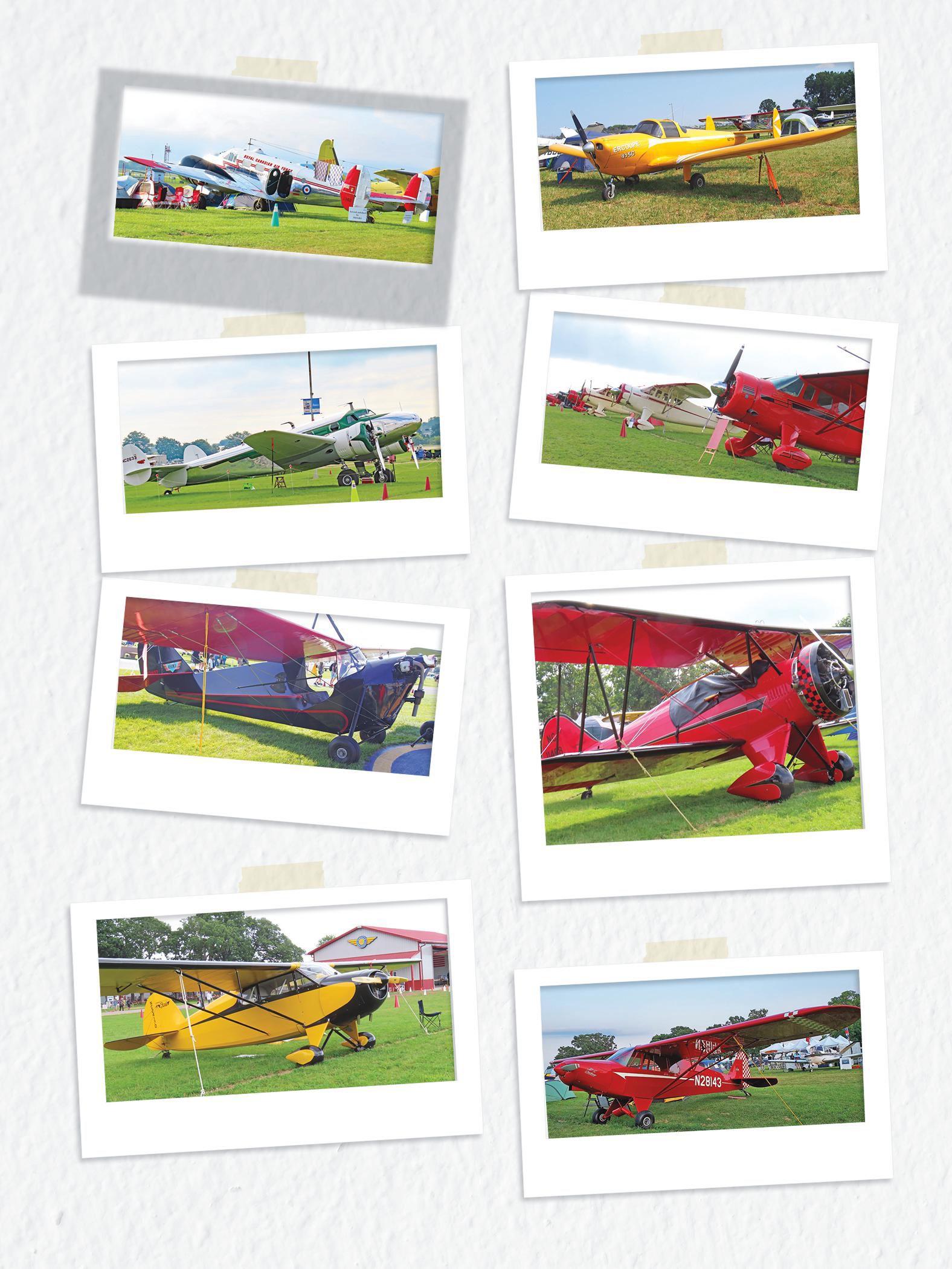
NC12407 is owned by Jim Hammond of Yellow Springs, Ohio, and is a 1932 Aeronca C-3.
This
Only one Funk on the field! NC24170 was parked close to the brand-new Charles W.
Howard DGAs graced the
again this year.
— singing!

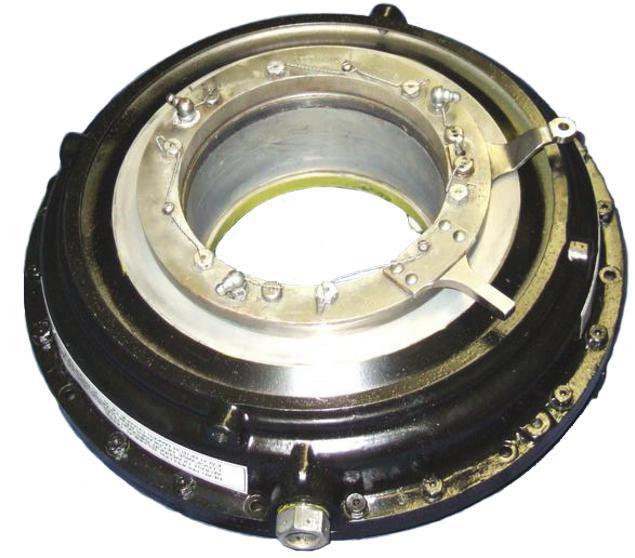

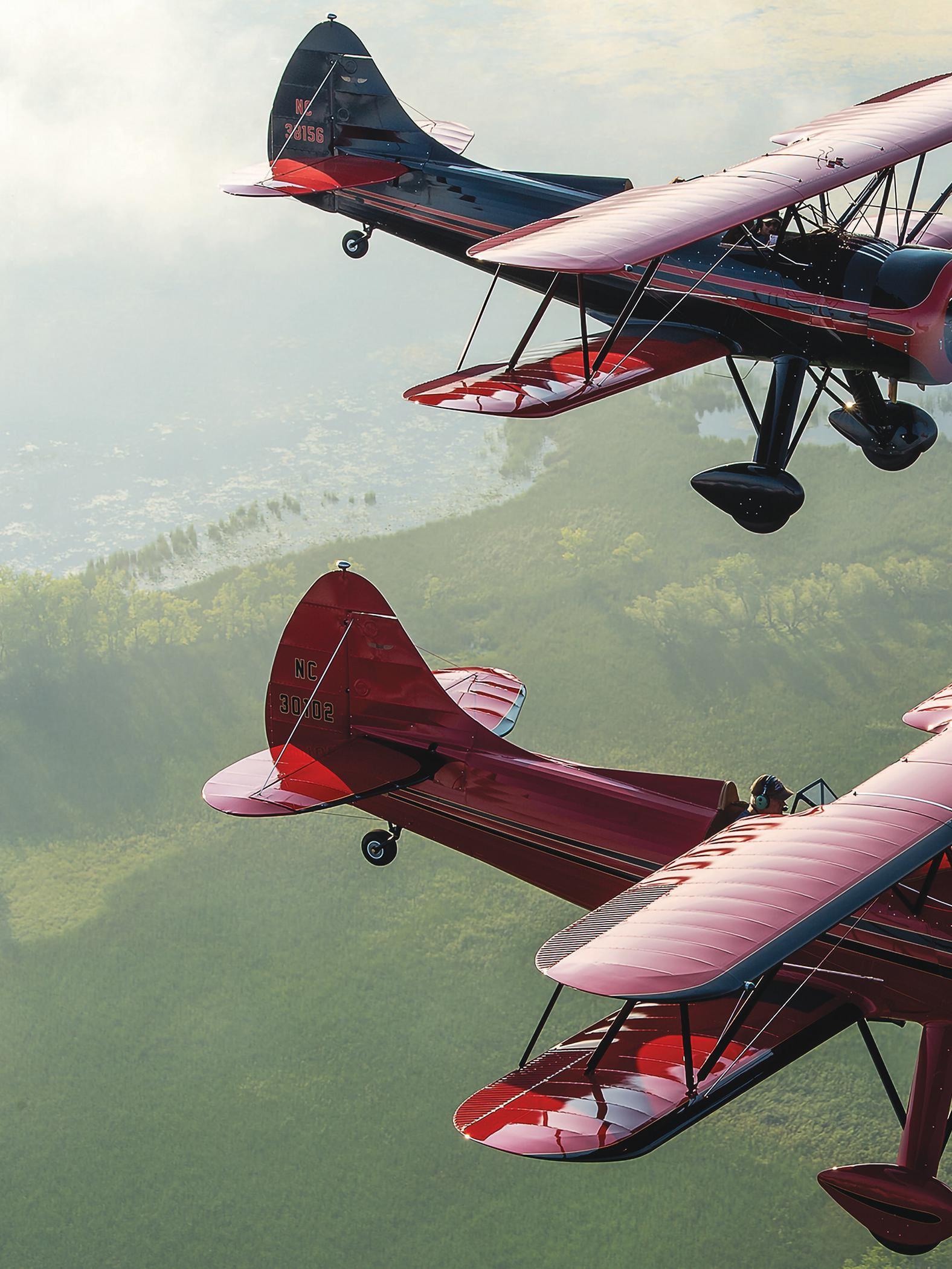
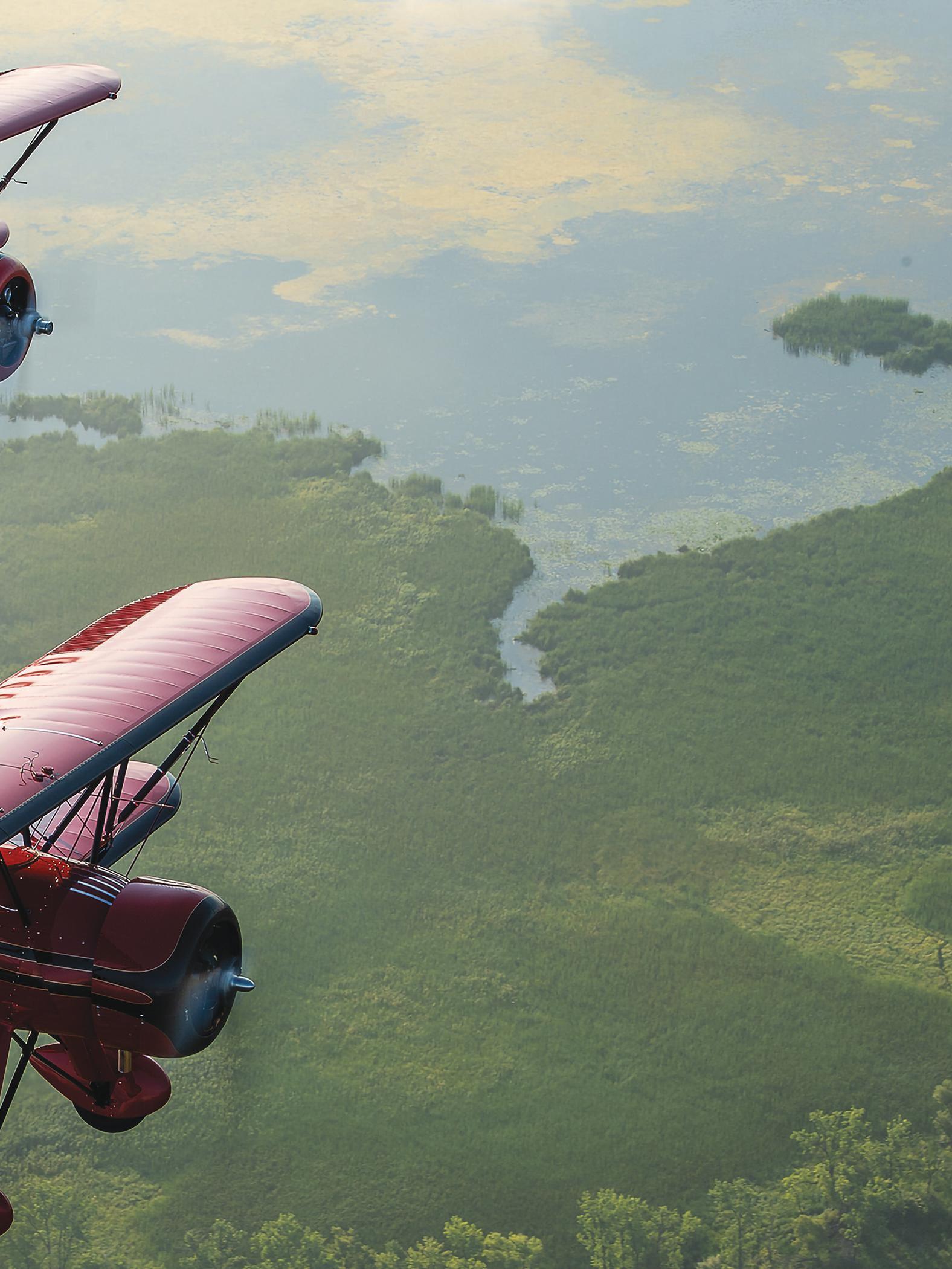
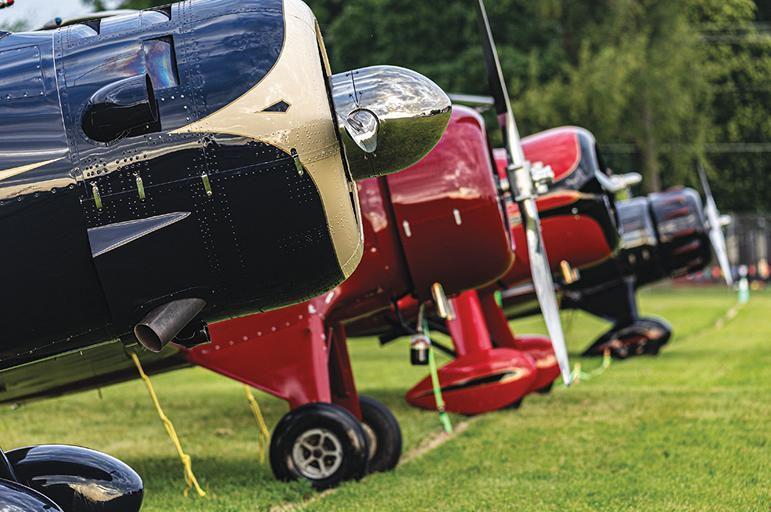


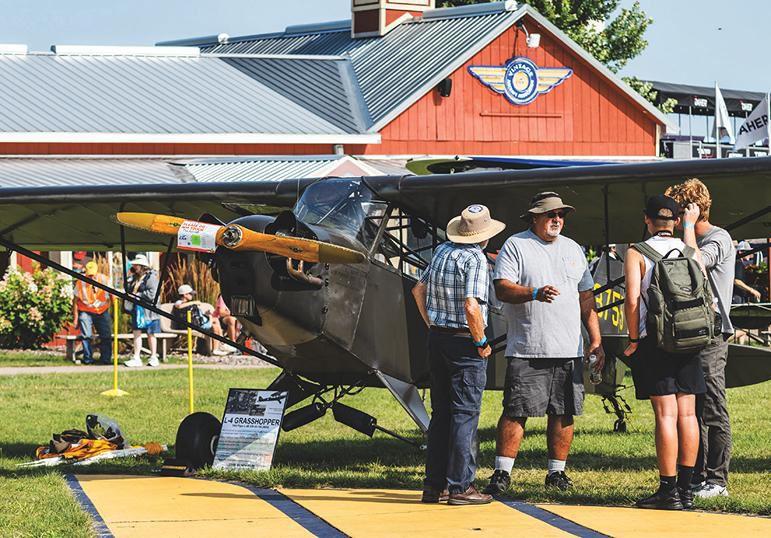


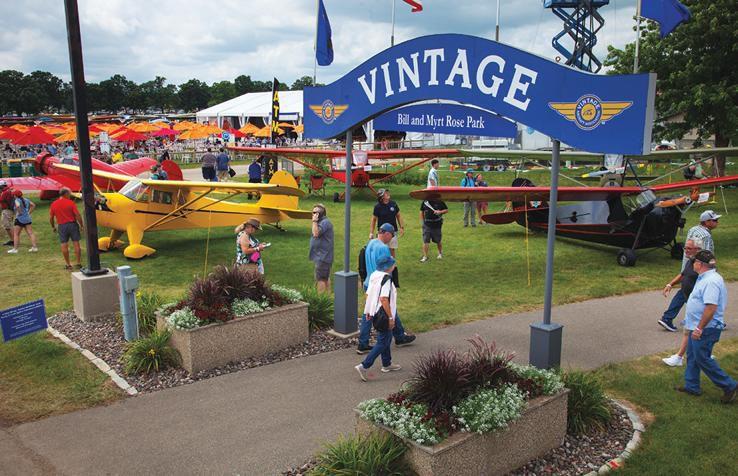

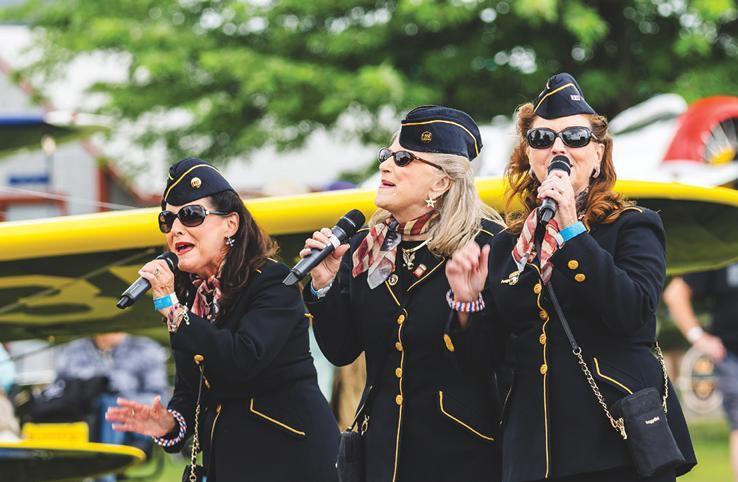
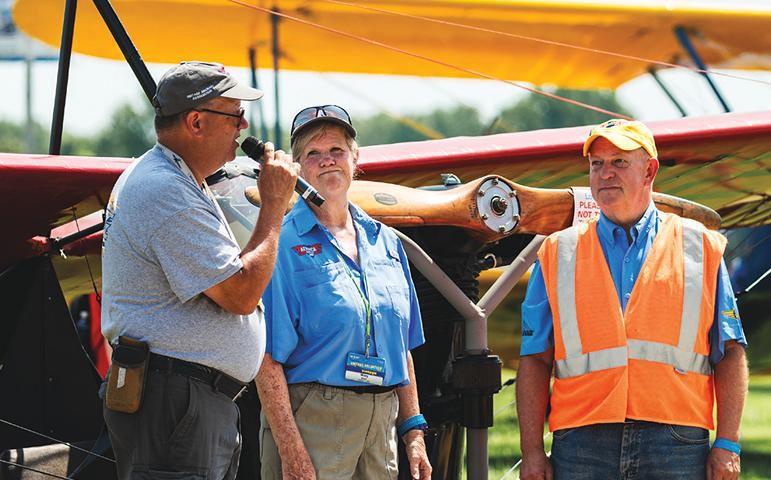
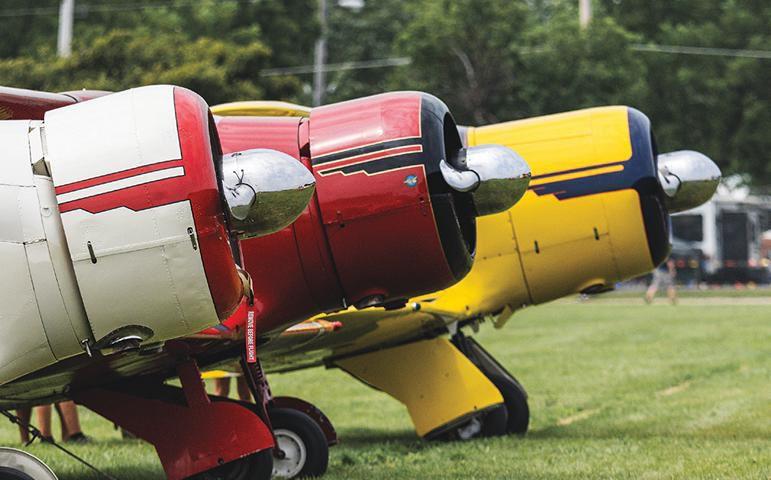



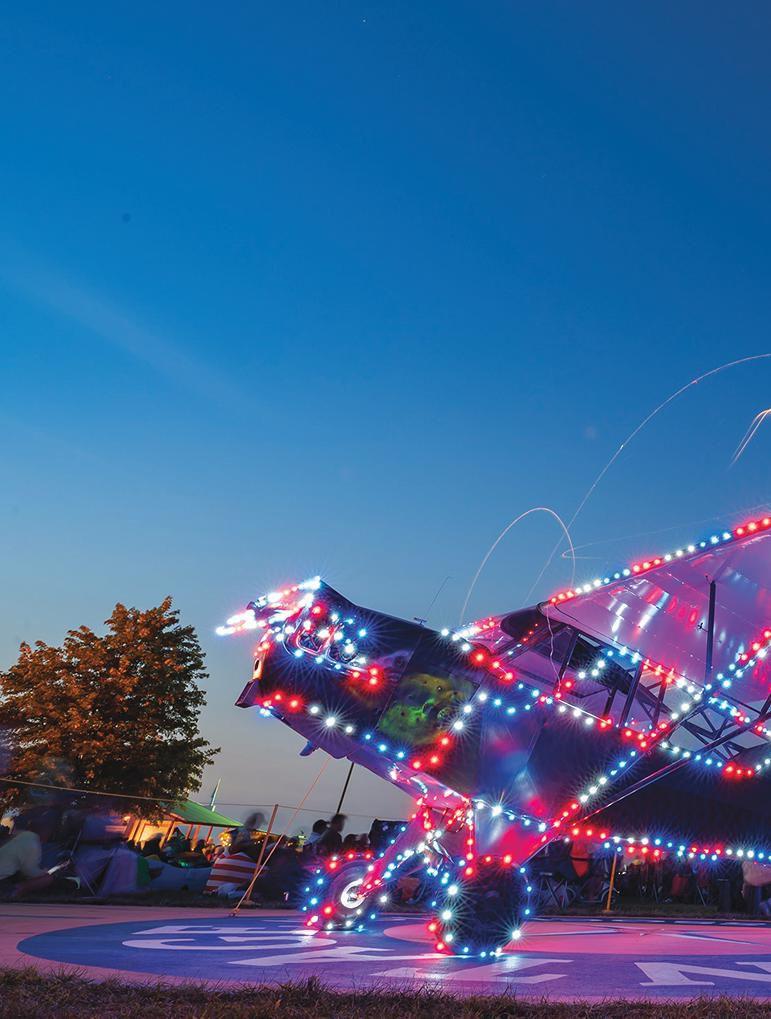

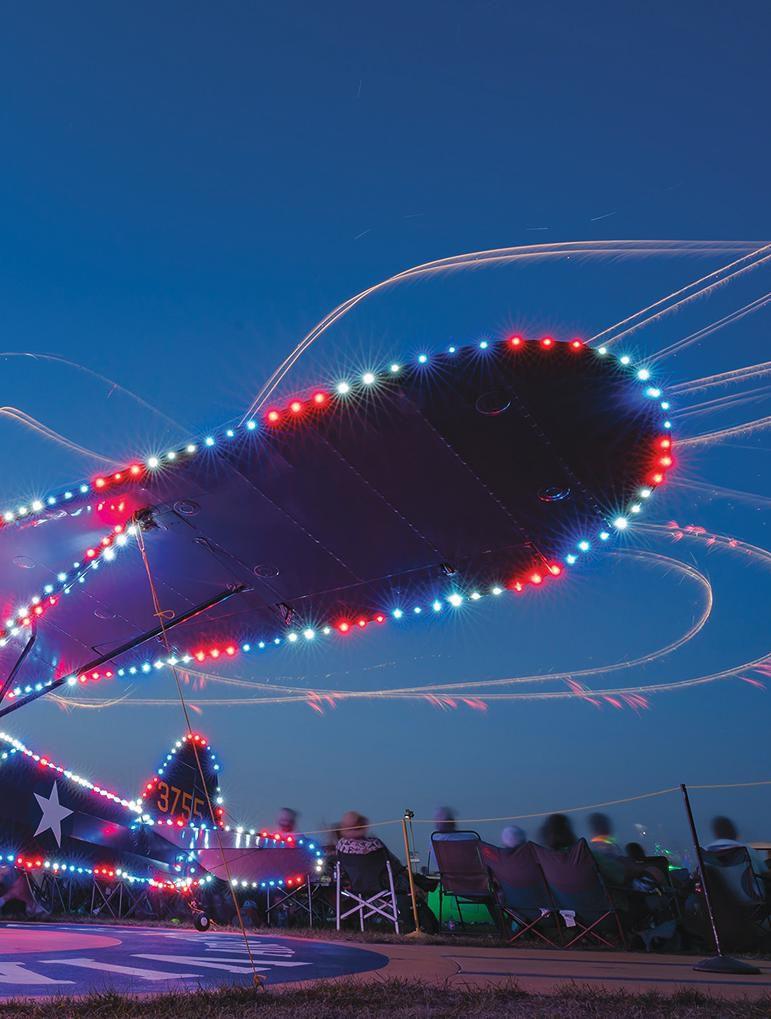
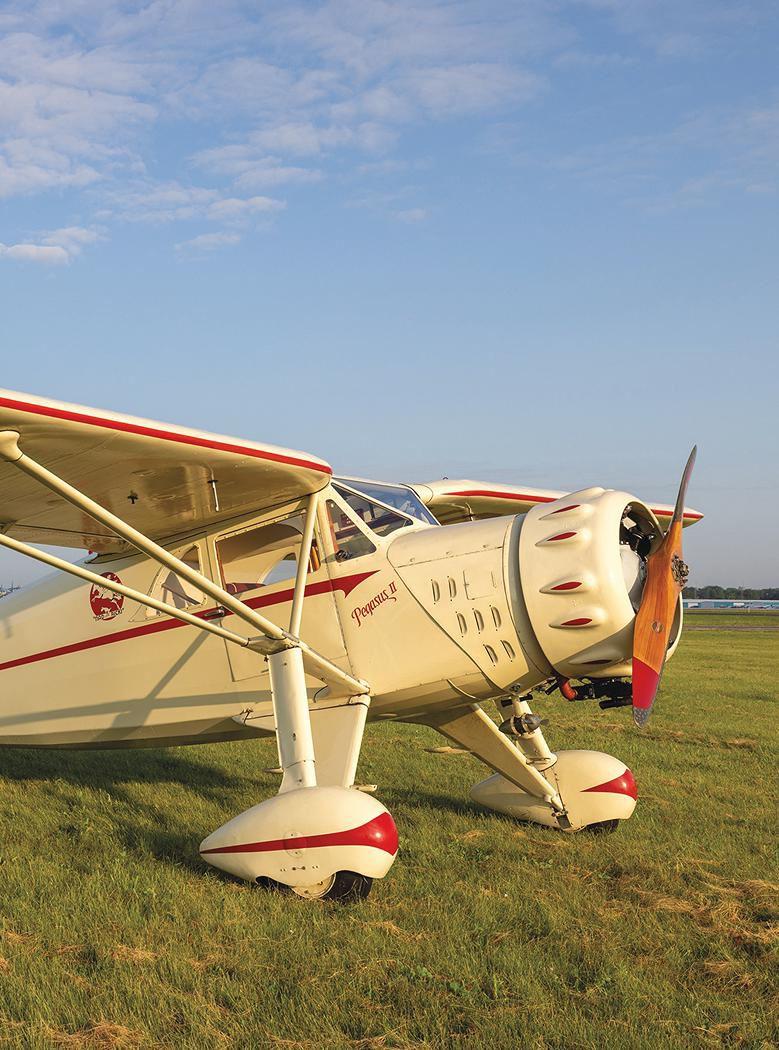
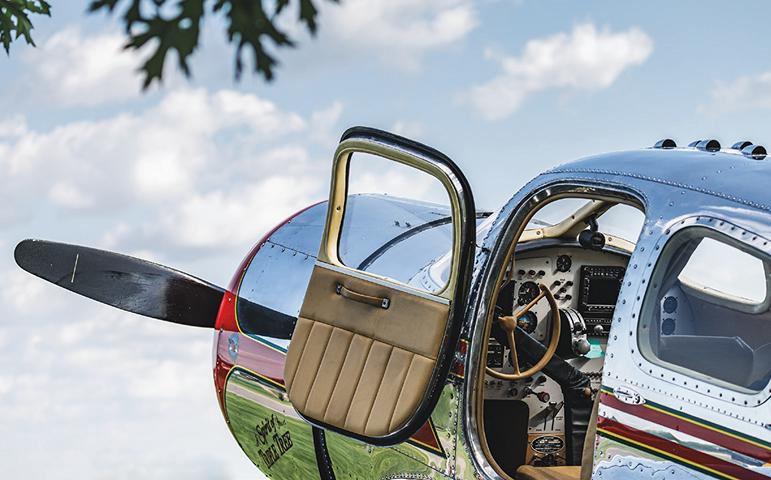
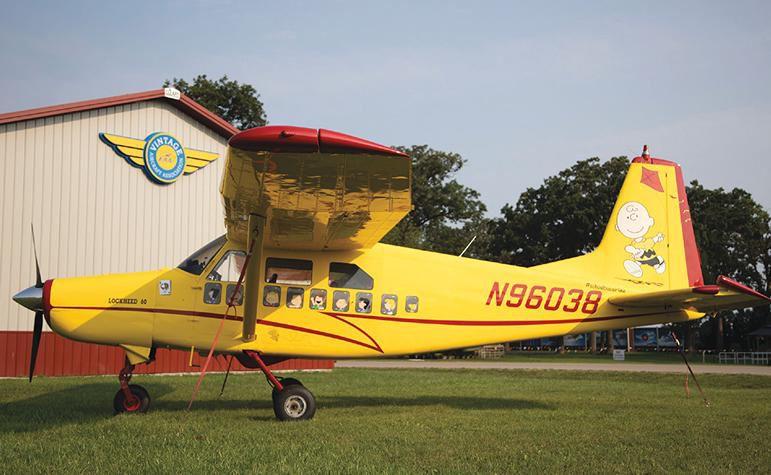
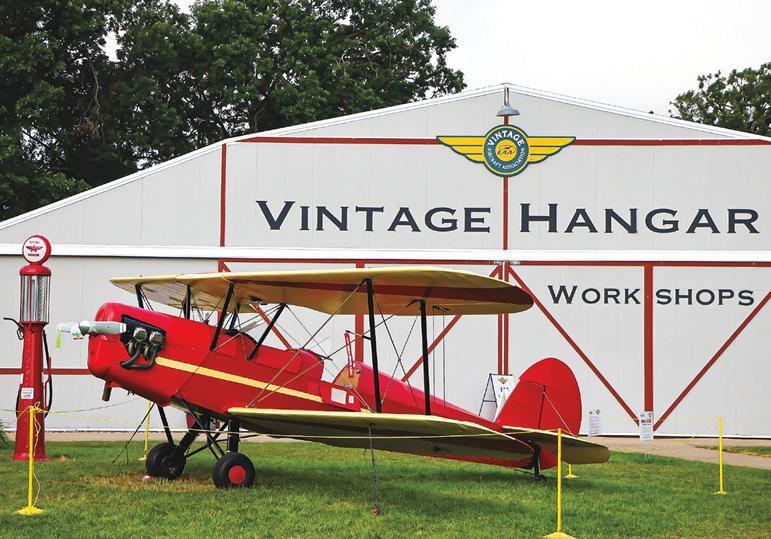
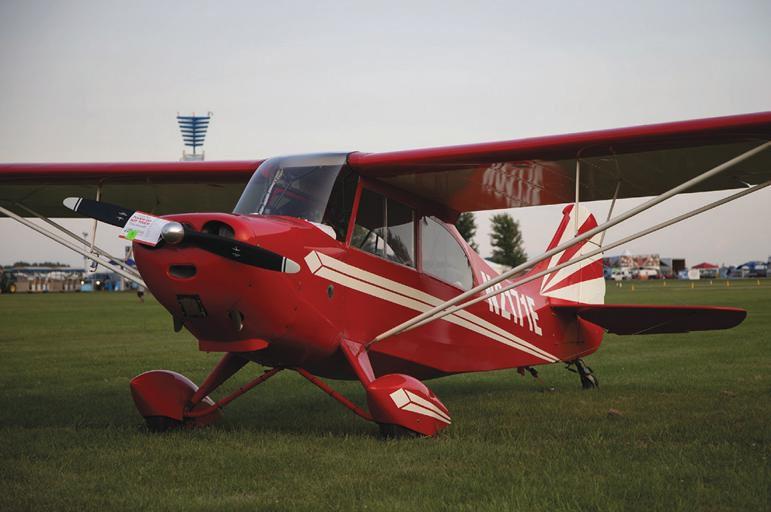

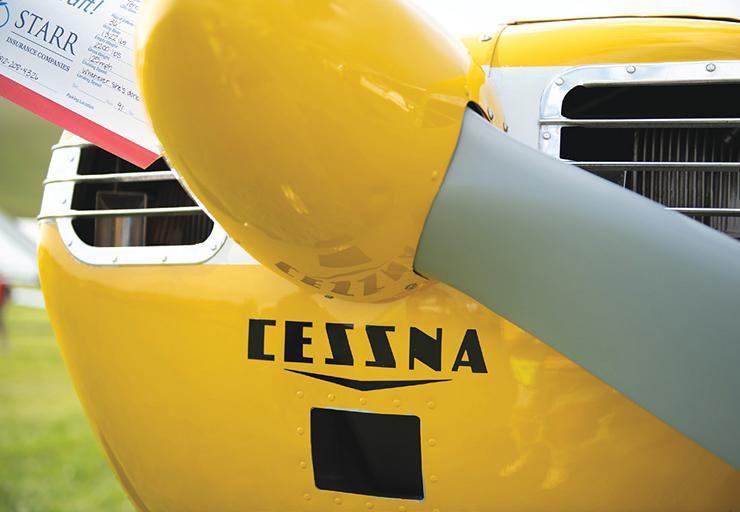

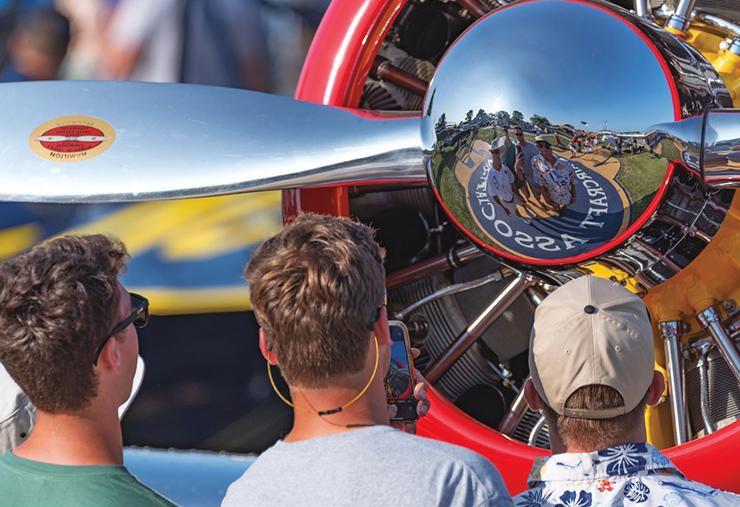


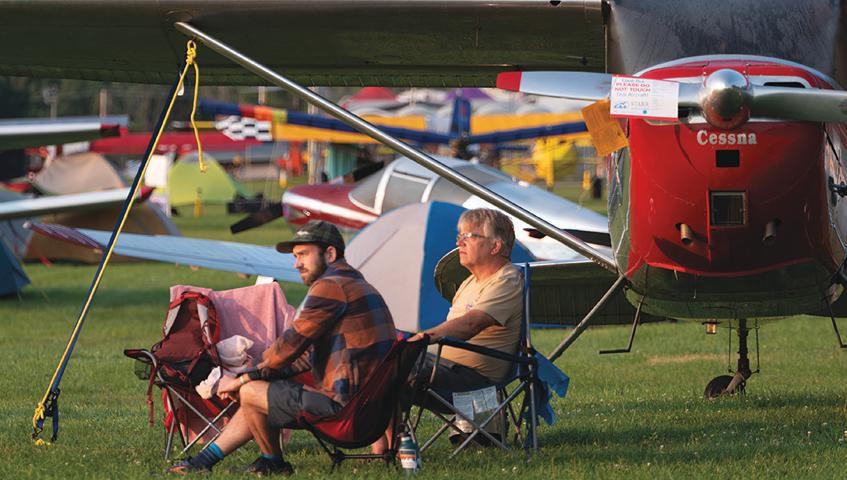

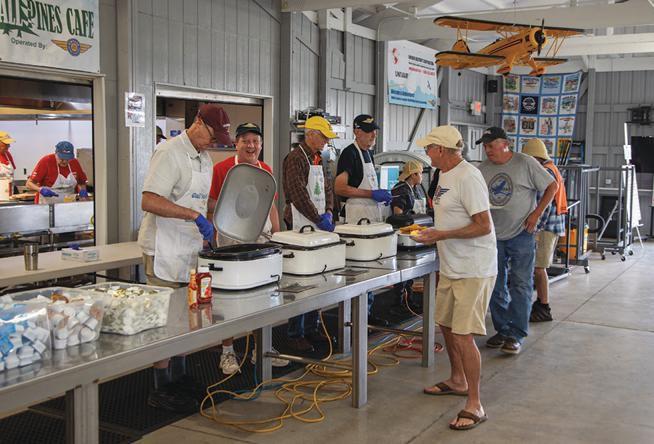
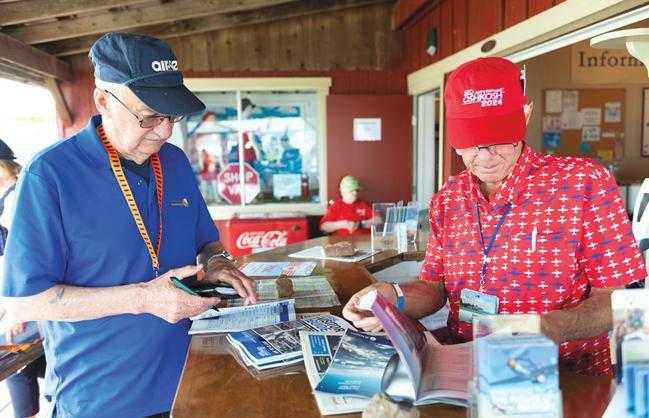
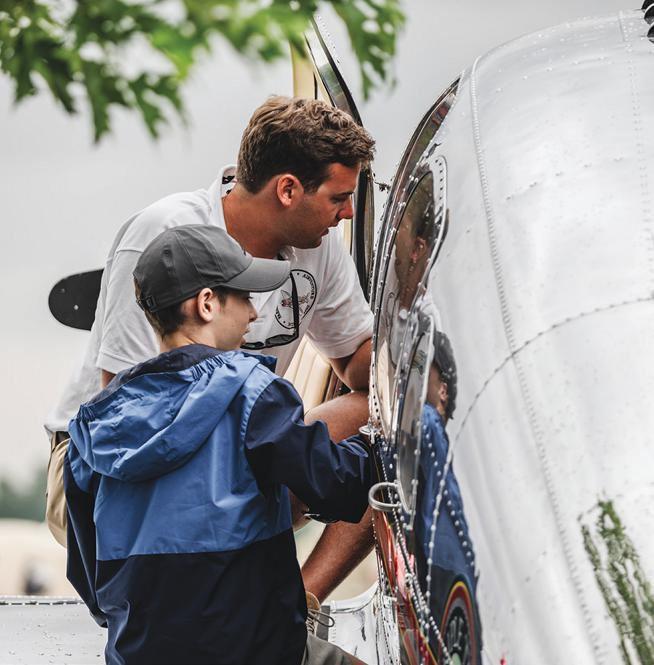

ANTIQUE (THROUGH AUGUST 1945)
ANTIQUE CONTINUOUSLY MAINTAINED AIRCRAFT
Charles Maples, Fairfax, VA Waco QCF-2 NC11468
CUSTOMIZED AIRCRAFT RUNNER-UP
Sherri Driggers, Hernando, FL Luscombe 8 N28412
BRONZE AGE OUTSTANDING CLOSED-COCKPIT MONOPLANE
Neil Baughman, Harrisburg, PA Luscombe 8A N28554
BRONZE AGE OUTSTANDING OPEN-COCKPIT BIPLANE
Bryan Brannon, Conway, AR
Boeing Stearman N3976B
BRONZE AGE RUNNER-UP
Paul Santopietro, Edgewater, FL Waco UPF-7 NC45373
SILVER AGE OUTSTANDING CLOSED-COCKPIT BIPLANE
Emma Herrington, Hitchcock, TX Waco UIC NC13418
SILVER AGE OUSTANDING OPEN-COCKPIT BIPLANE
Warren Caldwell, Oklahoma City, OK Waco UMF-3 NC13571
SILVER AGE RUNNER-UP
Warren Caldwell, Oklahoma City, OK Fleet 1 NC607M
WORLD WAR II MILITARY TRAINER/LIAISON AIRCRAFT CHAMPION (BRONZE LINDY)
Benjamin Redman, Fairbault, MN Waco UPF-7 NC30102
CUSTOMIZED AIRCRAFT CHAMPION (BRONZE LINDY)
Garry Ackerman, Plano, TX Stinson Reliant NC3040
WORLD WAR II ERA (1942-1945) CHAMPION (BRONZE LINDY)
Benjamin Redman, Fairbault, MN Stinson V77 NC985D
BRONZE AGE (1937-1941) CHAMPION (BRONZE LINDY)
Peter Dugdale, Clinton Township, MI Waco UPF-7 NC32000
SILVER AGE (1928-1936) CHAMPION (BRONZE LINDY)
Ronald Johnson, Rockford, IL Buhl Bull Pup NC353Y
ANTIQUE RESERVE GRAND CHAMPION (SILVER LINDY)
Trevor Niemyjski, Union Grove, WI Waco YKS7 NC19373
ANTIQUE GRAND CHAMPION (GOLD LINDY)
Michael Porter, East Liverpool, OH Boeing A7N1 (PT-17) N59293
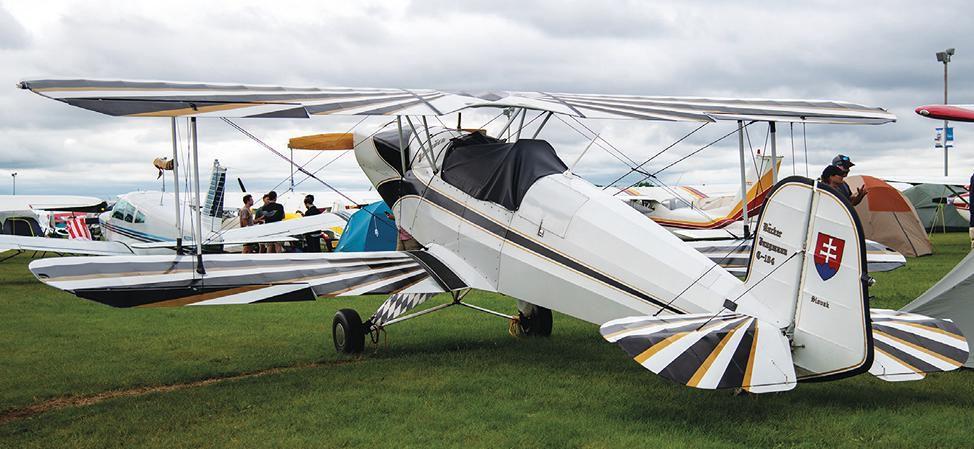


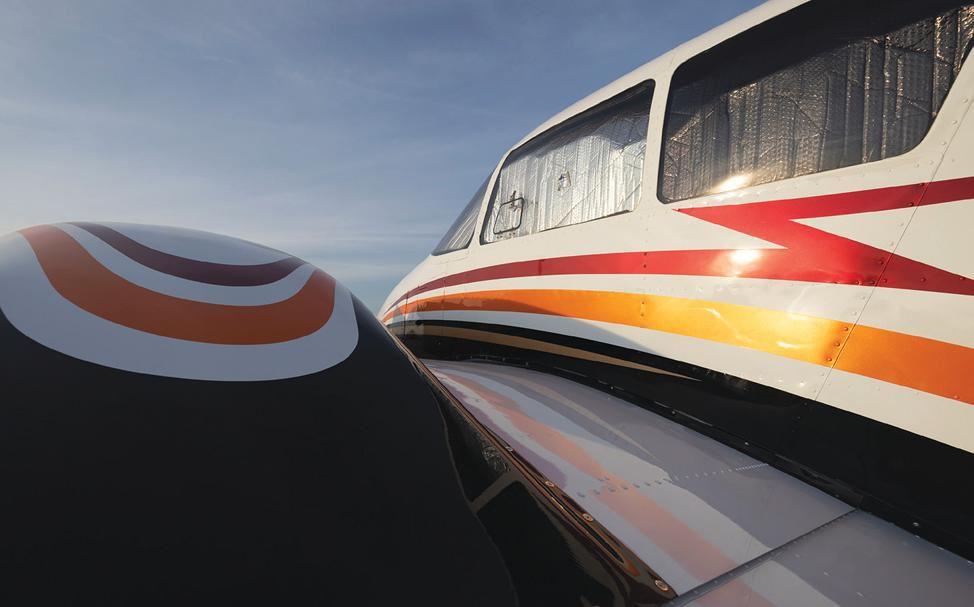



CLASSIC (SEPTEMBER 1945-1955)
OUTSTANDING AERONCA CHAMP
John Albright, Richmond, IN Aeronca 7AC N2645E
OUTSTANDING AERONCA CHIEF
Bruce Papon, Hardtner, KS Aeronca 11BC NC1012
OUTSTANDING BEECHCRAFT
Jason Fischer, Rochester, MN Beechcraft E35 N45JF
OUTSTANDING CESSNA 120/140
Austin Revlett, Sacramento, KYO Cessna 140 N3782V
OUTSTANDING CESSNA 180
Kent “Trip” Carder, Lakeville, MN Cessna 180 N2219C
OUTSTANDING CESSNA 190/195
Evan Fisher, Fort Worth, TX Cessna 195 N1053D
OUTSTANDING NAVION
Jason Woodside, Warrenton, VA Navion N5277K
OUTSTANDING PIPER OTHER
Tyler Smokovitz, Fenton, MI Piper PA-12 NC7504H
OUTSTANDING STINSON
Matt Humes, Stillwell, OK Stinson 108 N9432K
PRESERVATION
Larry Leyda, Coffeyville, KS Beechcraft Bonanza N5175C
CUSTOM CLASS A (0-85 HP)
Bill Pancake, Keyser, WV Aeronca 7AC, NC1890E
CUSTOM CLASS B (86-150 HP)
Robert Staton, Lonoke, AR Piper J-3 N1455N
CUSTOM CLASS C (151-235 HP) Lindy Perry, Cumming, GA Piper PA-18 N54LP
CUSTOM CLASS D (236 HP AND UP) David Pfister, El Paso, IL Cessna 195 N127GM
BEST CUSTOMIZED RUNNER-UP
Rick Joyner, Bellbrook, OH Navion N91534
CLASS I (0-85 HP) (BRONZE LINDY)
Alan Cuthbert, Edwardsburg, MI Ercoupe 415 N93803
CLASS II (86-150 HP) (BRONZE LINDY)
Stephanie Triesenberg, Ventura, CA Cessna 140A N9477A
CLASS III (151-235 HP) (BRONZE LINDY)
Nelini Faulkner, Ann Harbor, MI Temco Swift N2319B
CLASS IV (236 HP AND UP) (BRONZE LINDY)
Wayne Eggen, Langley, BC Cessna 190 C-FISR
CHAMPION CUSTOMIZED CLASSIC (BRONZE LINDY)
Nicholas Howell, Englewood, CO Cessna 180 N2835A
RESERVE GRAND CHAMPION (SILVER LINDY)
Devon Martin, Memphis, MO Piper PA-17 N4627H
GRAND CHAMPION (GOLD LINDY)
Dominic Hernandez, Hudson, CO Beechcraft C-45 N2382B
CONTEMPORARY (1956-1970)
OUTSTANDING BEECHCRAFT SINGLE ENGINE
Christopher Cantrell, Hernando, MS Beechcraft N35 N61GM
OUTSTANDING CESSNA 180/182/185/210
Cody Abner, Cleburne, TX Cessna 182 N9924A
OUTSTANDING MOONEY
John Keating, Cincinnati, OH Mooney M20 N9595M
OUTSTANDING PIPER PA-18 SUPER CUB
Brian Udell, Queen Creek, AZ Piper PA-18 N9261P
OUTSTANDING PIPER PA-24 COMANCHE
Mark Nuckolls, Fayetteville, AR
Piper PA-24 N8980P
OUTSTANDING PIPER PA-28/PA-32 CHEROKEE
Shane Richardson, Henderson, NV
Piper PA-28 N8735N
OUTSTANDING PIPER APACHE/AZTEC
Jeff Carroll, West Bloomfield, MI
Piper PA-27 N6716Y
MOST UNIQUE
Orlo Ellison, Broomfield, CO Macchi AL-60F-5 N96038
PRESERVATION AWARD
Eli McKee, Brighton, CO
Cessna 185C N99HP
CLASS II SINGLE ENGINE (161-230 HP) (BRONZE LINDY)
David Riley, Baltimore, MD Cessna 172 N8444L
CLASS III SINGLE ENGINE (231 HP AND UP) (BRONZE LINDY)
Sean Sullivan, Fort Worth, TX
Piper PA-28-235 N8949W
DEAN RICHARDSON MEMORIAL AWARD (BRONZE LINDY)
Paul Wolff, Baraboo, WI
Piper PA-22 N4860A
OUTSTANDING CUSTOMIZED (BRONZE LINDY)
Darrell Newhall, Fritch, TX
Cessna A185E N8993W
OUTSTANDING MULTIENGINE (BRONZE LINDY)
Charles Craft, Shepherdstown, WV
Beechcraft 95-C55 N65AC
RESERVE GRAND CHAMPION CUSTOMIZED (SILVER LINDY)
Robert Thoms, Clyde, MI
Piper PA-32 C-GKGH
GRAND CHAMPION CUSTOMIZED (GOLD LINDY)
Anne Foley, Lake Geneva, WI
Cessna 185C N641DA
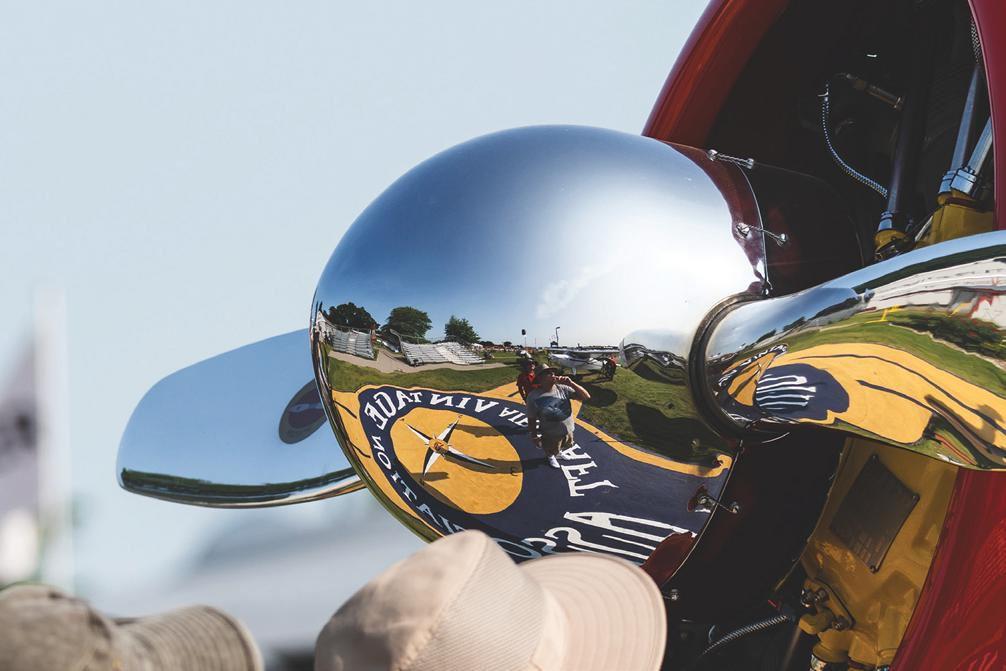
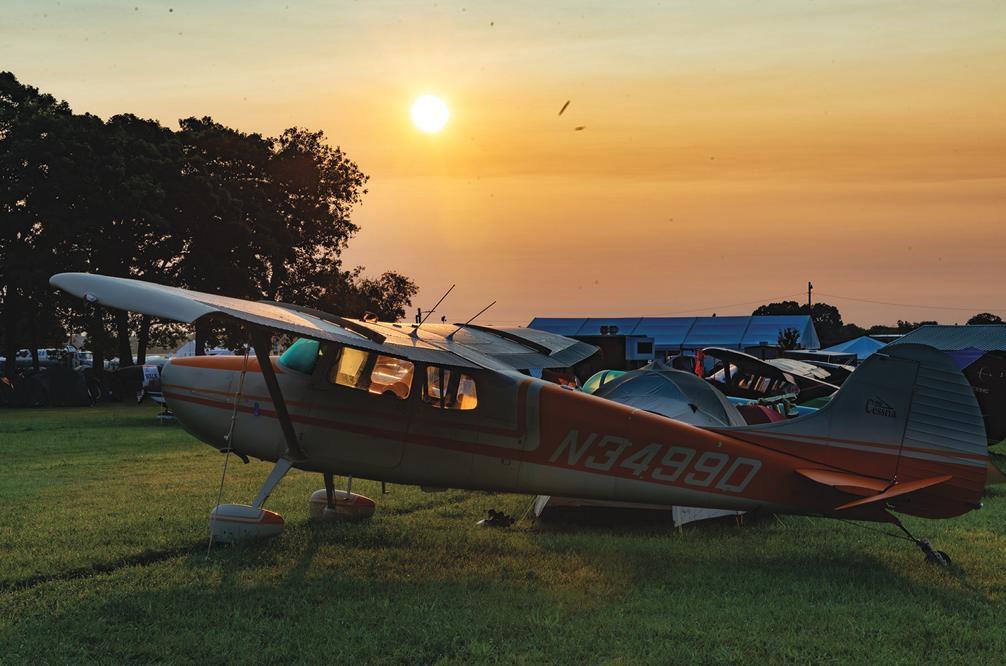
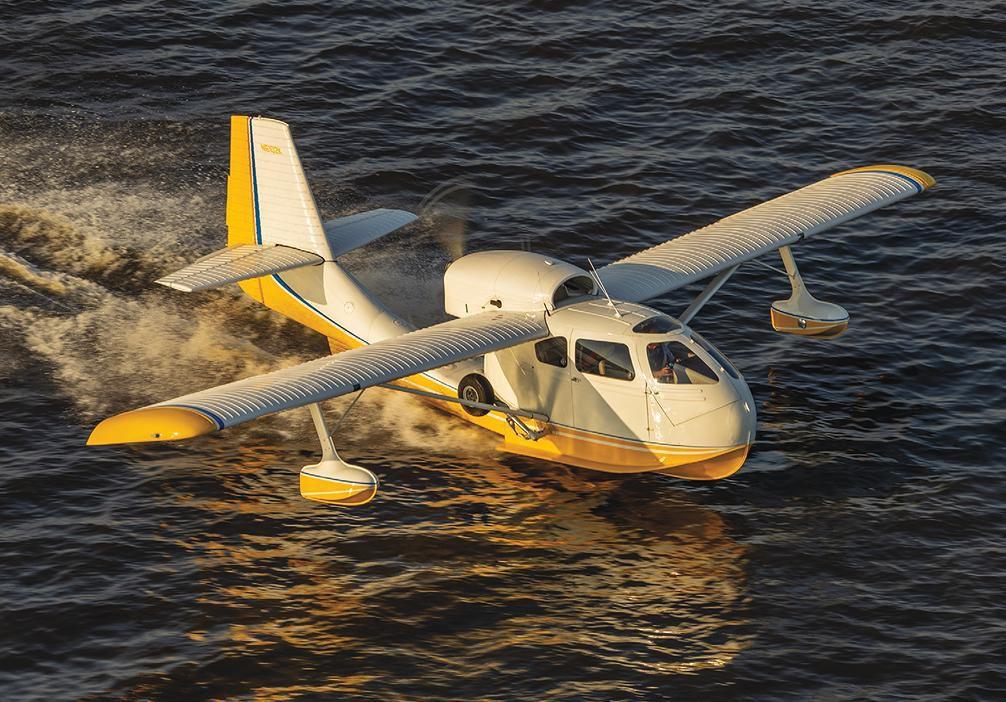
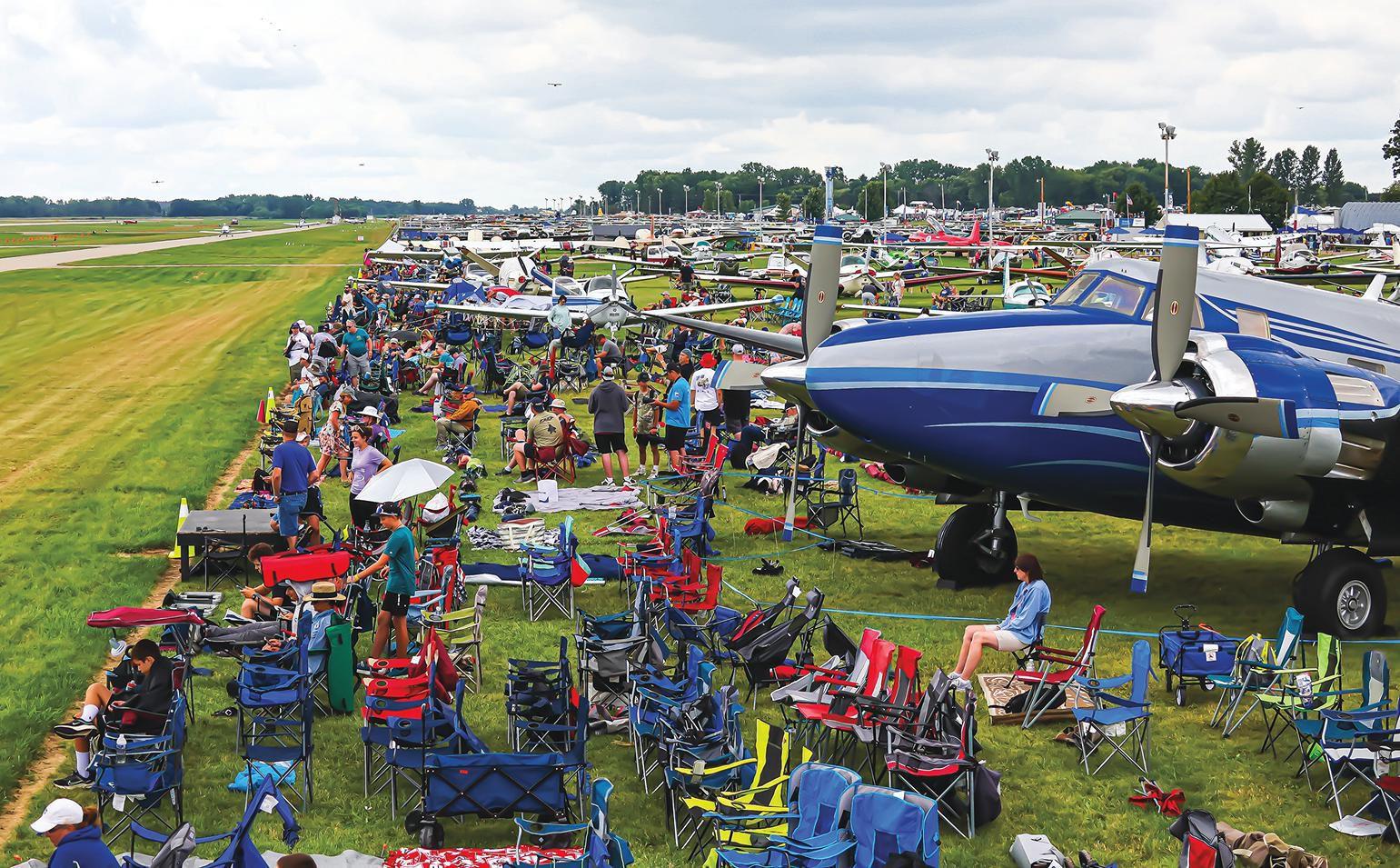
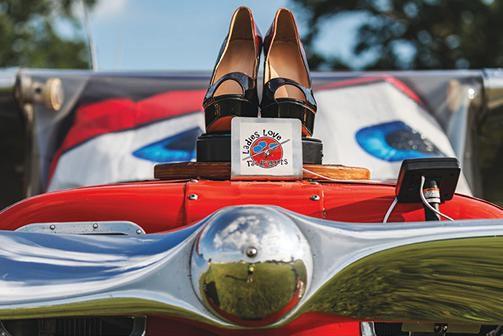
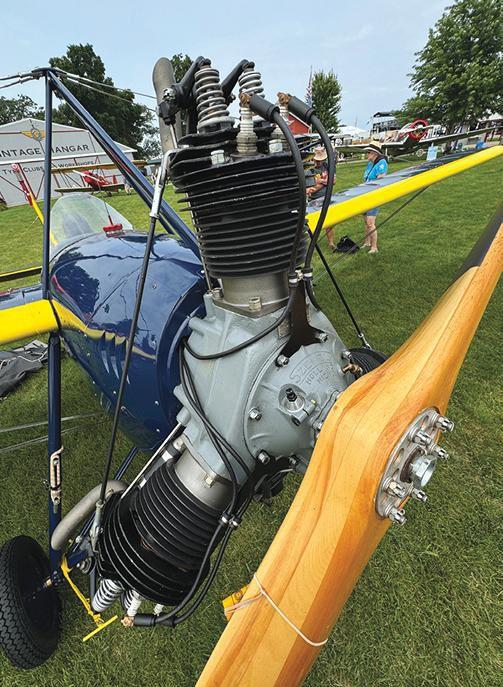
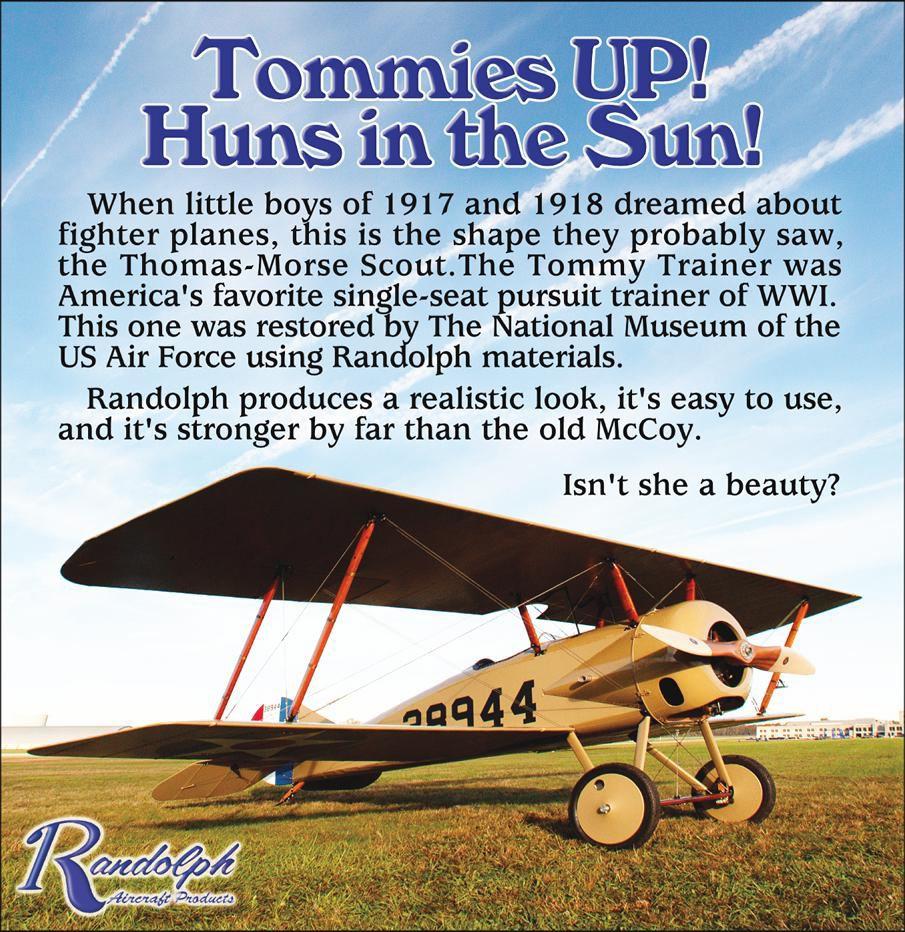
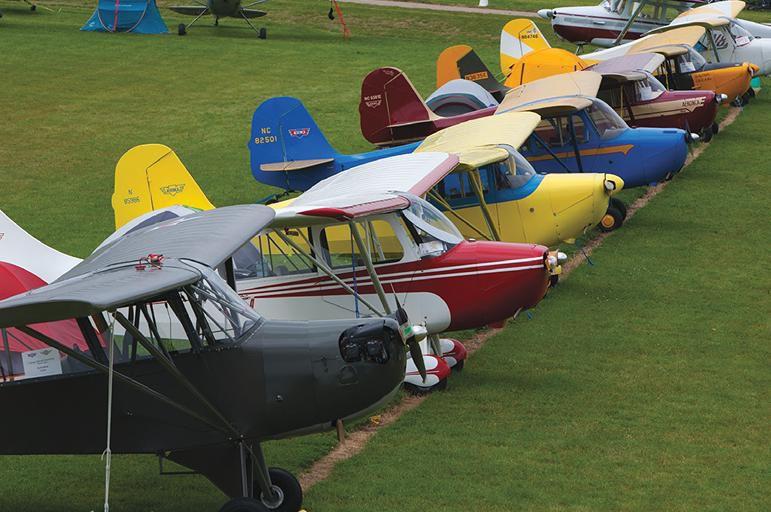
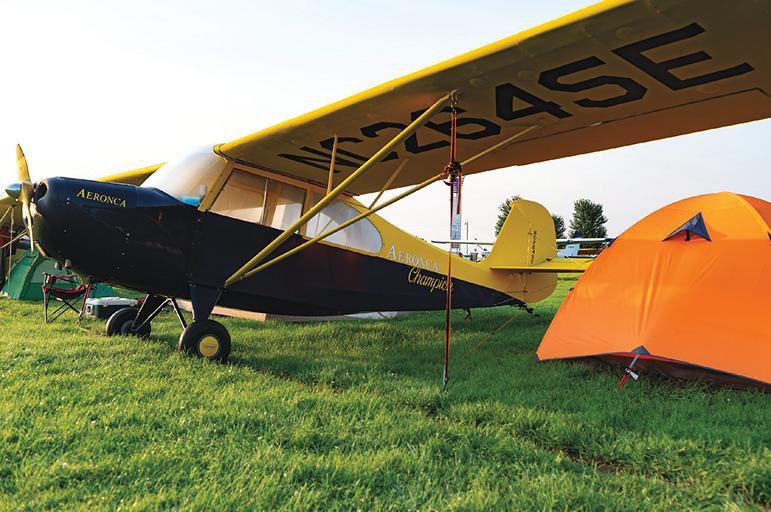




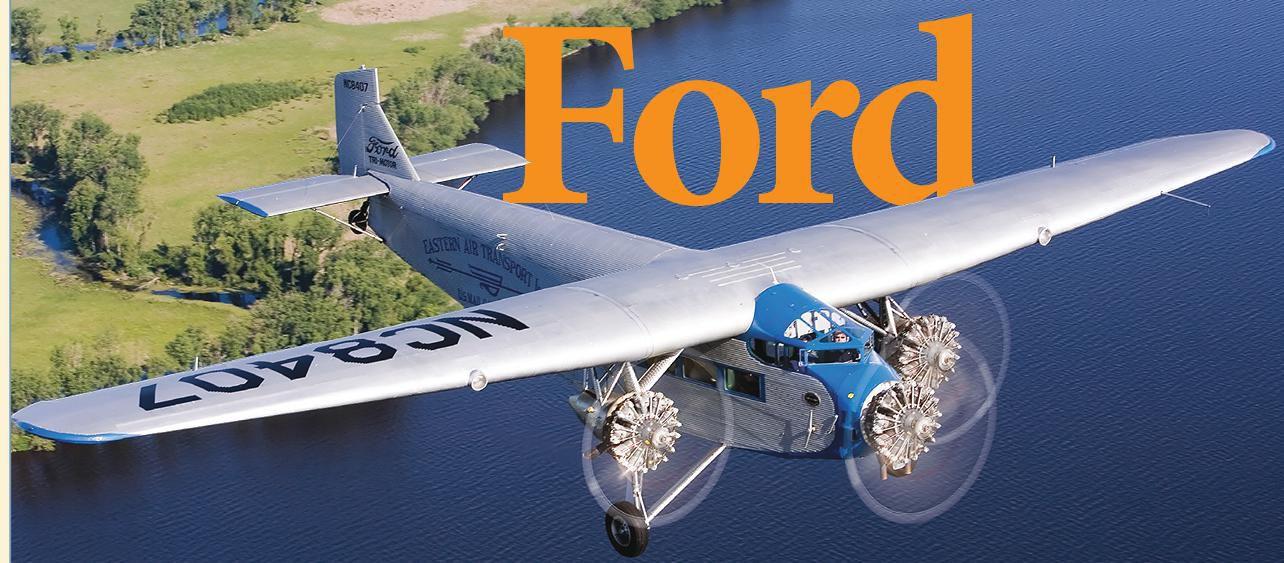

PERFORMANCE. IN A WORD, that’s likely what most Meyers 200 owners will say they like best about the breed. It seems that Al Meyers’ airplane designs have always been revered for their speed, safety, and ease of handling. So when Bruce Mayes heard from a friend that a Meyers 200 was advertised on Barnstormers.com, he quickly got online, found the ad, and phoned the seller, William T. Howard of Fort Myers, Florida. Upon learning that the airplane was indeed a B model, he immediately made plans to go see N34393 (serial No. 275).
“Carlene and I were going to SUN ’n FUN for the very first time in 2018, so we included a side trip to see the Meyers 200B. When we got there and saw the airplane, I put my arms around it and said, ‘Mine!’ He had taken really good care of it,” Bruce said and smiled.
Part of Bruce’s ebullience upon acquiring the 1962 Meyers 200B was that, of the few that exist, owners seem to hold on to them for years and are reluctant to part with them. Tracing N34393’s ownership back in time, records show that Howard had purchased it from Dr. Dewey W. Jones Jr. of Georgia in 1998. Jones had bought it from Walter E. Huckabee Jr. of Georgia in 1972. Huckabee had purchased N34393 in 1964, and during the time he owned it, he lent it to a famous flyer (more on that later).
BY SPARKY BARNES
The Meyers Aircraft Co. began in humble surroundings in a foundry in Romulus, Michigan, where it built its first two biplanes, and then moved to Tecumseh, Michigan, where it continued its handbuilt aircraft production.
The Meyers OTW (Out To Win) biplane was designed by Allen Meyers, who learned to fly in an OX-5-powered biplane. The OTW was first built in 1935 and was pronounced by the government as one of the finest aerobatic trainers built before and during World War II. Designed as a military primary and basic trainer, 102 OTWs were produced from 1939 to 1943 and flown in Civilian Pilot Training Programs.
Then there were the sleek Meyers monoplanes, which retained the biplane’s trademark square-shaped tail and added more horsepower to a trim and racy all-metal
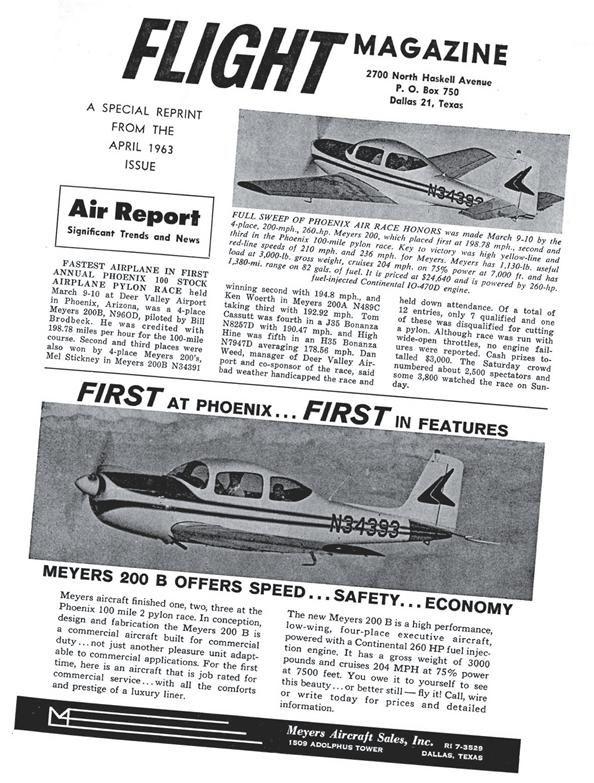
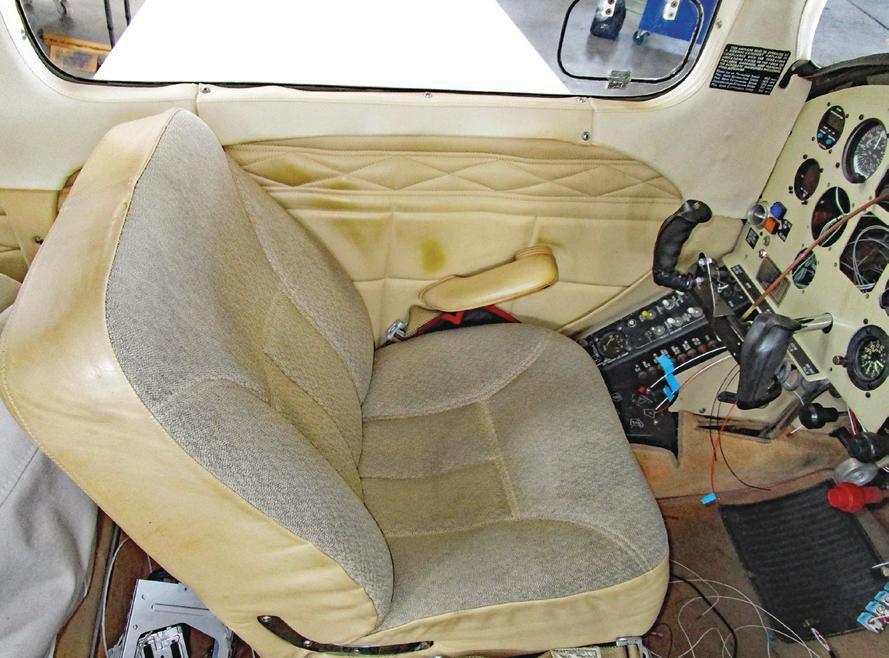
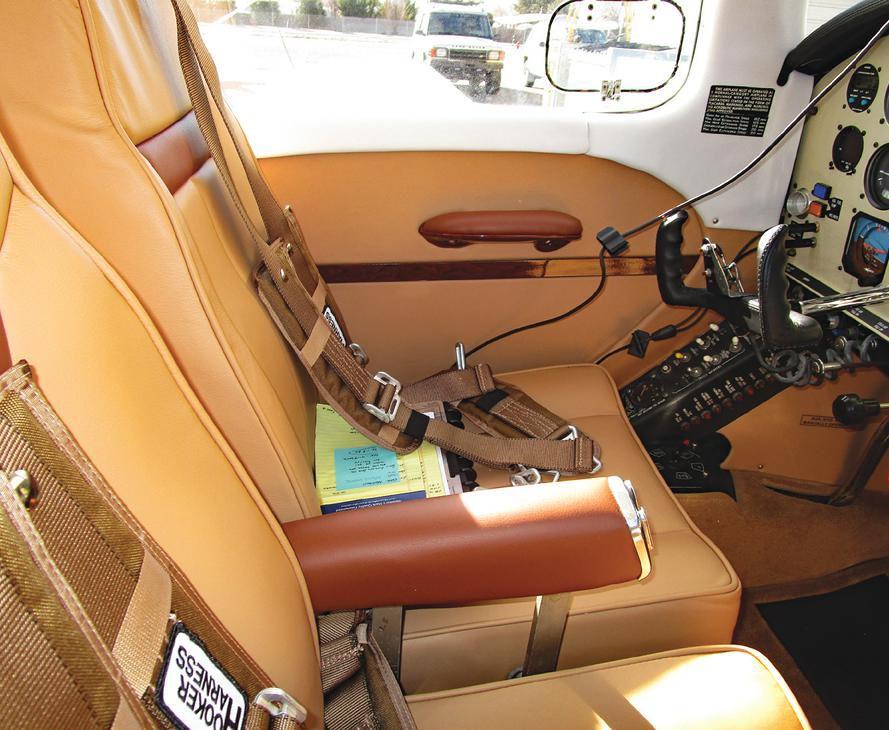
flying machine with retractable gear. The side-by-side, low-wing tailwheel Meyers 145 sold for less than $10,000 and zipped along on 145 horses at 145 mph. Fewer than two dozen 145s were produced.
The Meyers 200 prototype, a four-place airplane with a nose wheel and ultra-clean lines, was flown in 1953. It was a thoroughbred “Michigander” — the airplane was hand built by Meyers in Tecumseh, and the engine by Continental Motors at Muskegon. The 200 received its type certificate in 1958, and the production model 200A was powered by a 260-hp, fuel-injected IO-470-D. It had a cruising speed of
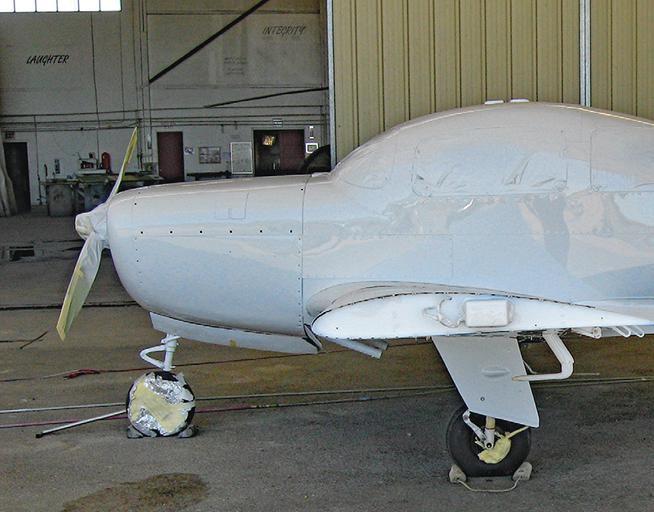
s kin
I love this kind of history — it excites me because there’s a real story that can be told here with this airplane. —
204 mph and a range of 1,330 miles. The price tag was just shy of $24,000.
Close to a dozen 200As were built. Seventeen 200Bs were built; changes included a different panel and fuel system. Era advertising proclaimed, “Don’t buy until you fly the sensational new 1962 Meyers 200B. Speed-Safety-Quality combined to give you the fastest, safest ride in its class.”
Nine 200Cs were built. Changes included a higher cabin roof and, hence, a larger windshield, which provided improved visibility. The 200D featured aerodynamic modifications, a 285-hp Continental IO-520-A, and flush-riveted wings. Fewer than 10 were built by Meyers in 1965; then Aero Commander bought Meyers Aircraft and manufactured fewer than 80 Meyers 200Ds in Albany, Georgia.
When Al Meyers was inducted into the OX5 Aviation Pioneers Hall of Fame in 1974, his citation stated, in part, “Meyers put quality, integrity, and safety in his engineering. The pilot’s welfare was at the base of all his designs. Insurance Underwriters published that no student or instructor was killed in an OTW during the entire World War II training program. No corrections, ‘Airworthiness Directives,’ were needed for the OTW (the biplane), the Meyers 145 (twoplace airplane), or the Meyers 200 — the most
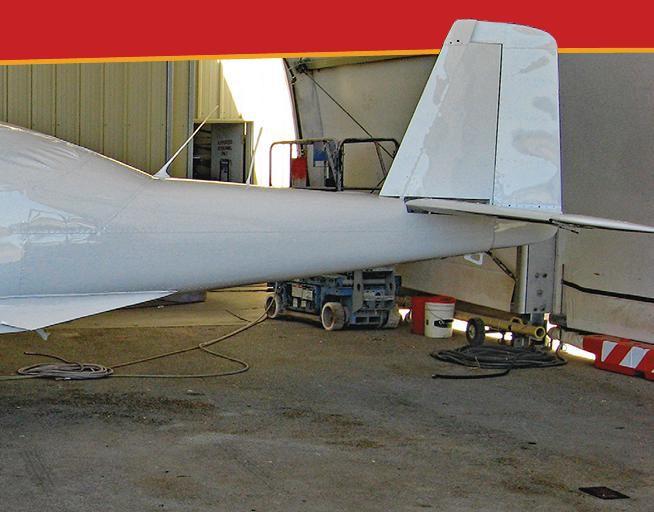

efficient and fastest four-place, single-engine, personal plane in the 1960s.”
Reflecting upon his life, Meyers wrote, “I seek opportunity — not security. … I want to take the calculated risk; to dream and to build; to fail and succeed. … It is my heritage to stand erect, proud, and unafraid; to think and act for myself; enjoy the benefits of my creations and to face the world boldly and say, THIS I HAVE DONE!!”
[Excerpted from the booklet Allen H. Meyers, Pioneer Plane Builder, by Dr. Nydia Meyers.]
The sale from Howard to Mayes was completed in May 2018, and the first order of business was to freshen up the interior and have new avionics installed.
Bruce had the avionics done by Aviation Classics at Reno Stead Airport in Nevada and was quite pleased with their work. They updated the avionics with the installation of a Garmin GTN 650 navigation system; a Garmin 530 WAAS ADS-B; a Garmin G5 electronic flight instrument as primary attitude indicator; and a Garmin GTX 345R transponder. He also had Lincoln Skyways Inc. of Lincoln, California, install leather upholstery in the cabin and on the Beechcraft Bonanza seats.
“The Bonanza seats are a very important modification because they are way safer and more comfortable,” Bruce said. “It’s really a fun airplane. This isn’t a Cub, and I don’t treat it like my Swift. I don’t operate the Meyers on grass or short fields. I just treat it differently because it’s a real traveling airplane.”
The Meyers sports an original-type trim scheme, but Carlene personalized the colors. As with their Swift and another airplane, they had the Meyers painted by Straube’s Aircraft Services in Kingman, Arizona. Bruce and Carlene felt all these enhancements — though they required some “aircraft on ground” time — were well worth the end results.
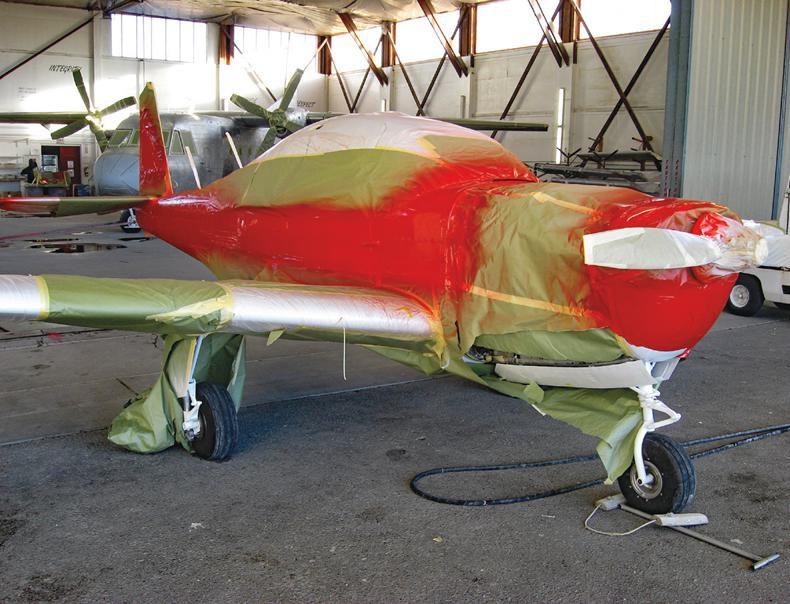

1962 MEYERS 200B N34393 MANUFACTURED UNDER TCDS 3A18 NOT ELIGIBLE TO BE FLOWN BY A SPORT PILOT
WINGSPAN: 30 feet, 6 inches
LENGTH: 24 feet, 4 inches
HEIGHT: 7 feet, 4 inches
SEATS: 4
EMPTY WEIGHT: 1,940 pounds
USEFUL LOAD: 1,360 pounds
GROSS WEIGHT: 3,350 pounds
ENGINE: 285-hp, six-cylinder Continental IO-520A-F
PROPELLER: McCauley 2-bladed, 84-inch to 86-inch diameter
FUEL CAPACITY: 80 gallons
MAX CRUISING SPEED: 182 knots
STALL SPEED (CLEAN): 62 knots
CLIMB AT SEA LEVEL: 1,350 fpm
SERVICE CEILING: 18,500 feet
CRUISING RANGE: 1,200 miles with 45-minute reserve
BAGGAGE CAPACITY: 200 pounds
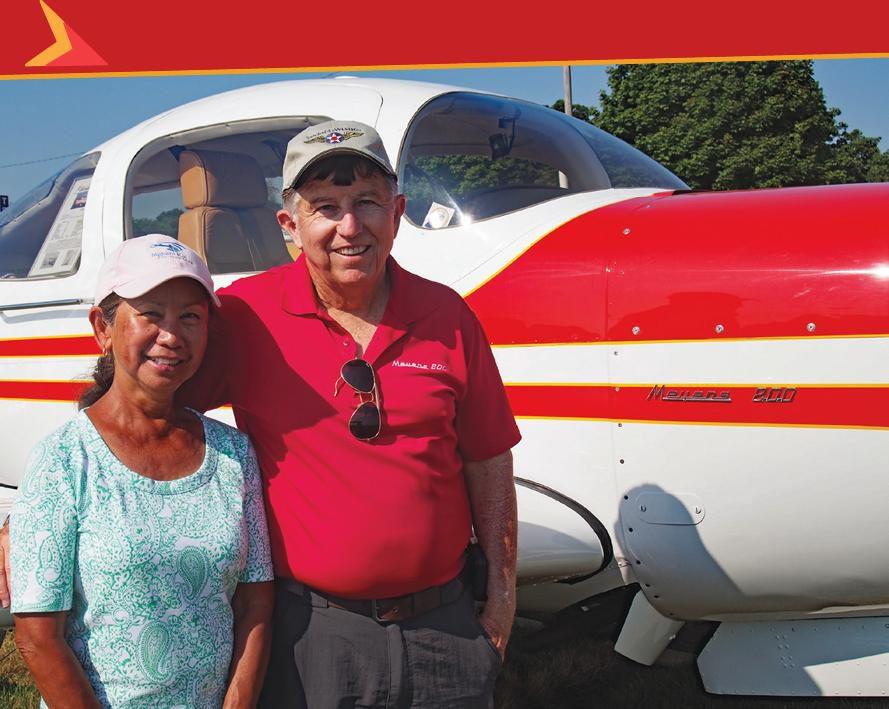
Describing the performance features of the 200B, Bruce shared, “One of the last of the Meyers gurus, Keith Diver, went over this airplane with a fine-toothed comb for the previous owner. Keith rigged it and put a new Continental IO-520-A in it. The owner flew it back down to Florida and only had about 10 hours of flight time on it when the VAR crankshaft airworthiness directive was issued. So he had the engine inspected, and later he decided to overhaul the engine.”
N34393 has a fuel capacity of 74 gallons usable (two 20-gallon tanks per wing). “I plan for 20 gph fuel burn, which gives me four hours until burnout,” Bruce said. “So for an extra margin of safety, I usually plan for a three-hour trip max, and I’m really only burning around 15.5 to 16 gph. This airplane will true at 210 mph. Coming across the fence, I’m flying 78 to 80 mph and touching down around 65 to 68 mph. It lands just like a Navajo; if you let it, it’ll just drop in on you. But if you fly it to the ground, it’s a nice-landing airplane.”

I like the fact that it goes very fast from point A to point B, which is really nice.
— Carlene Mayes
Bruce grew up with aviation and learned early on the importance of safety. “My dad was one of the very early Air Force helicopter test pilots, and when he went out one Sunday morning on a rescue mission in Hawaii, he had an accident which broke his neck and paralyzed him,” Bruce said. “I was only 10, but that made me become intensely interested in safety. As an aside, his crash changed the way pilot helmets are shaped — instead of going straight across the back of the neck, they now have a curved cutaway to help prevent breaking a pilot’s neck.”
Bruce fed his fascination with aviation by learning to fly through an Army ROTC program in college. He proved to be a diligent flight student, earning his certificate in 36 hours. Ever since, he’s relished being active in myriad types of aviation and has evolved into an aviation renaissance man. Following are some of the highlights of his aviation endeavors.
“I flew Army helicopters in Korea and then in Hawaii. Then I transferred to the Coast Guard, which was heaven on earth. It truly was a flying club of blue shirts. I got to fly helicopters and C-130s, and it was just wonderful,” he said exuberantly. “Then I went into the civilian world

and started the only Part 127 scheduled helicopter airline, which was short-lived. Then I ended up flying with Aloha Airlines, and at the same time, I was flying fire rescue helicopters. I also started doing safety audits and presentations, and I flew the raffle ride at Reno in my T-6 for 16 years — that was fun! Then I took the T-6 to Hawaii, where I’d been flying air tours for years. I flew warbird rides in Hawaii and had a successful business.”
Bruce, who delights in all things aviation, was unaware of his 200B’s intriguing history when he purchased it. Then he discovered a pearl hidden quietly in the folds of its wings: “In the 1960s, Edna Gardner Whyte raced N34393 in cross-country and closed-circuit air races. It wasn’t her airplane, but it was loaned to her specifically for racing, because she’d put one on order that hadn’t been delivered. If you haven’t read her autobiography, Rising Above It (co-authored with Ann L. Cooper in 1991), it’s truly worth reading,” Bruce said. “Her records as an aviatrix were amazing. She just blew my socks off, because she was never deterred. I love this kind of history — it excites me because there’s a real story that can be told here with this airplane. That’s my joy; I’m a caretaker of this airplane, and I’ll take care of it and tell the story until I can’t.”
For those who may be unfamiliar with Edna Gardner Whyte, she became a licensed pilot in

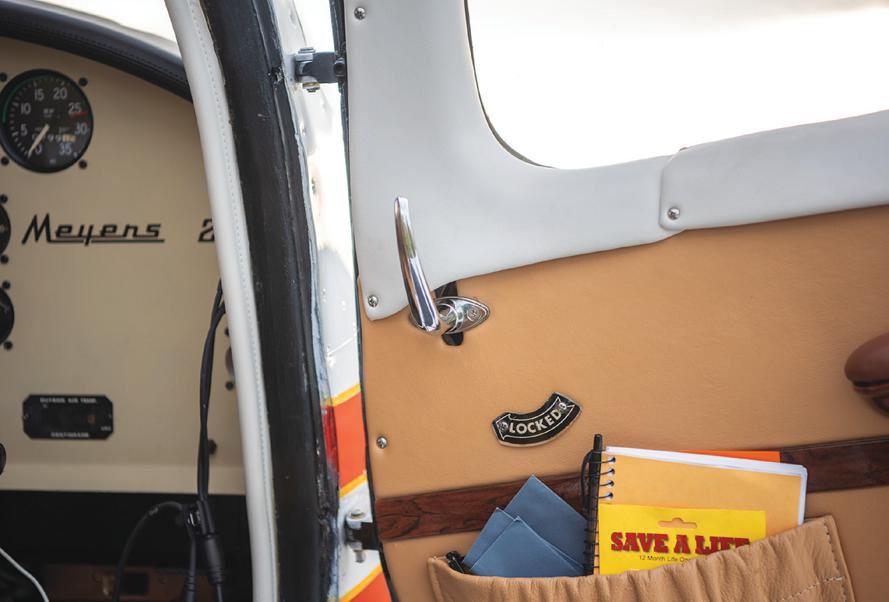
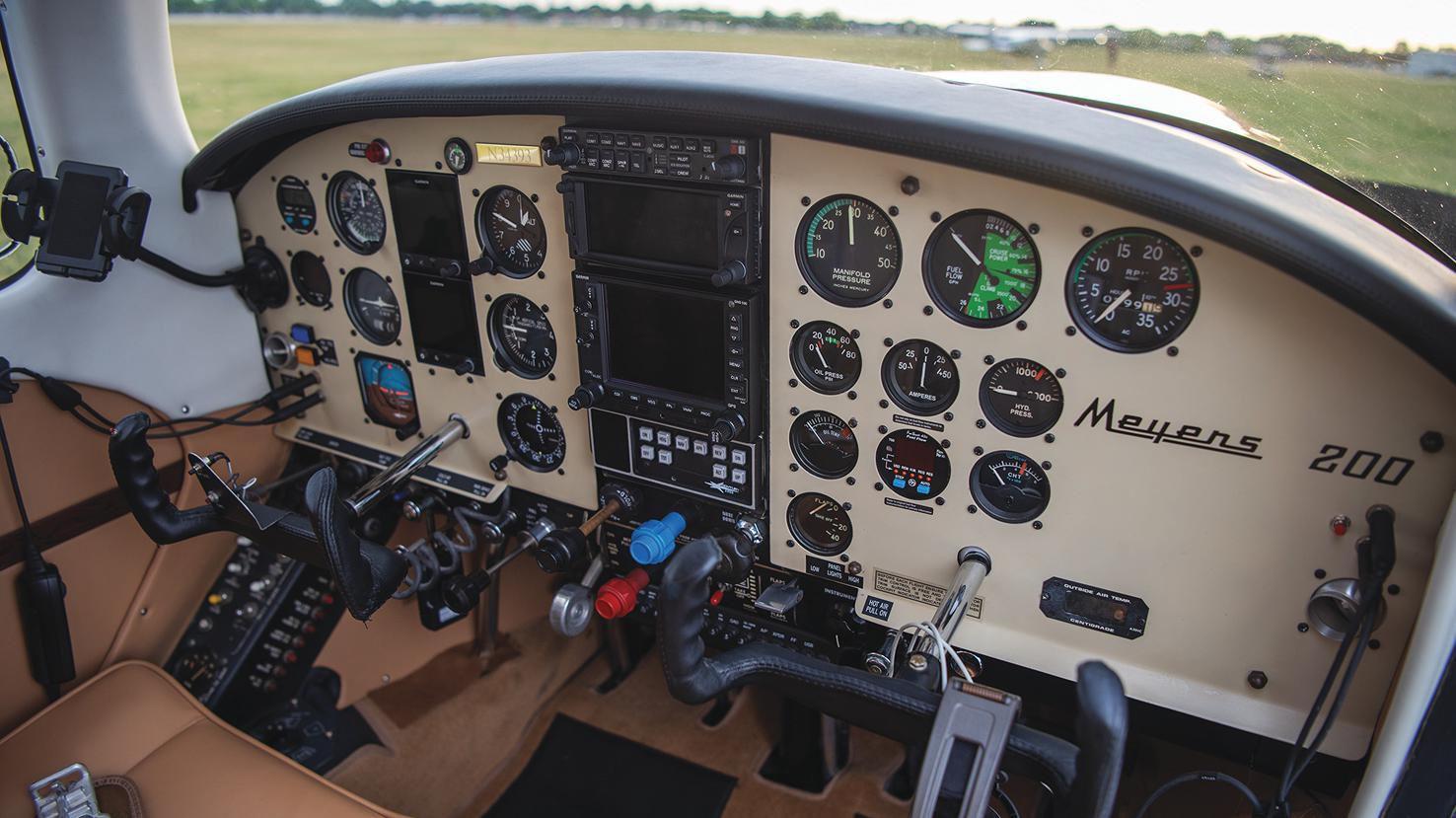

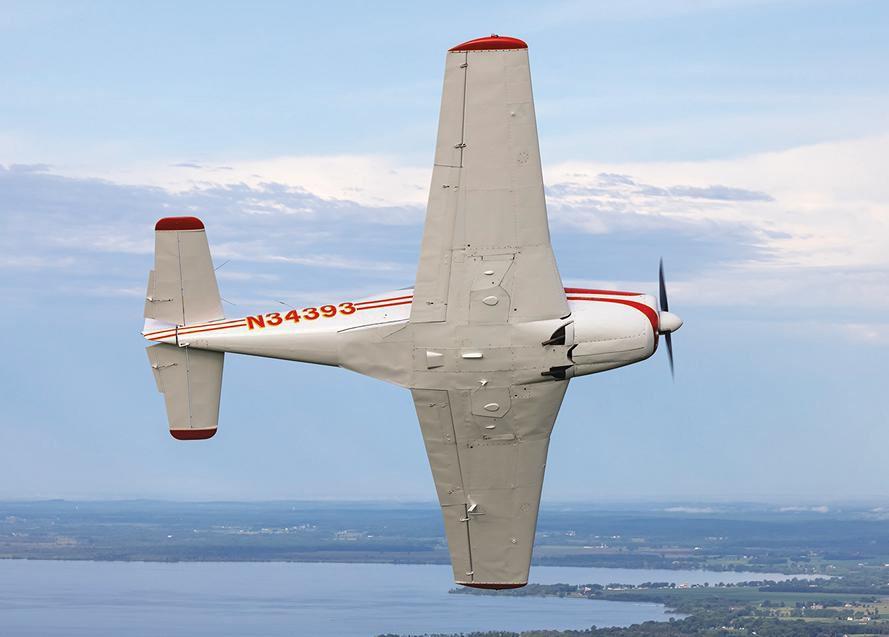
1928. She enjoyed a remarkable and extensive aviation career, during which she logged around 34,000 hours; taught thousands of people to fly; and built two airports, the second (Aero Valley Airport in Texas) when she was well into her golden years. Inducted in numerous halls of fame, she was the first woman to become an honorary member of the military pilots’ organization Daedalians. Edna won 127 trophies in cross-country air racing, aerobatic competition, and other flight contests. Her favorite airplane was reportedly her Aero Commander 200, in which she won many pylon races.
Regarding the connection between what is now Bruce and Carlene’s Meyers and Edna, some of the details are described in Edna’s autobiography, when she mentions borrowing the 200 from its then-owner in Georgia. Additionally, at the time, the word got out that the famous flyer was in Thomaston to borrow N34393 from Huckabee, and a local newspaper featured a photograph of the two with the Meyers 200B. Edna was in her mid-60s then, and the photo caption read, in part, “The … woman pilot left Thomastonians breathless with her flying skill, her disarming graciousness, and her looks that would never give away her age.”
Apparently Huckabee hadn’t flown the airplane for a while, and en route to Maryland, Edna experienced intermittent engine problems while switching fuel tanks. After her arrival at Fredericksburg, Virginia, a mechanic discovered and removed a mud daubers nest in the fuel vent. That cured the problem, and Edna went on to compete in the Atlantic National Air Races, and she also flew N34393 at Reno.
The 200 series were winners, in every sense, and though perhaps not intentionally, certainly embodied the moniker of their biplane ancestor: Out To Win. The 200’s graceful, compound curves, along with laminar flow wings and wing
root filets, yielded a sleek aerodynamic shape. Drag was further reduced by streamlined gear fairings and Fowler-type flaps that traveled on tracks. Control inputs for the ailerons and elevator functioned smoothly via torque tubes.
Bruce included the following succinct description regarding the four-place Meyers 200 in his aircraft presentation book: “The Meyers is the fastest, normally aspirated production piston single-engine plane ever built.”
As such, the 200 was a popular raceplane. In 1963, Betty Miller flew a 200B in the Powder Puff Derby. In 1967, Edna Gardner Whyte won the 17th annual Angel Derby from Montreal to Miami. Mara Culp finished third in the San Diego to Reno fun race. Mrs. Loening won the Ladybird 15-mile pylon race, in which Edna finished a close second.
An advertisement in the April 1963 issue of Flight magazine featured photos of N34393 and proclaimed, “First at Phoenix … First in Features. Meyers 200B offers speed … safety … economy. Meyers aircraft finished one, two, three at the Phoenix 100-mile 2 pylon race. In conception, design, and fabrication, the Meyers 200B is a commercial aircraft built for commercial duty … not just
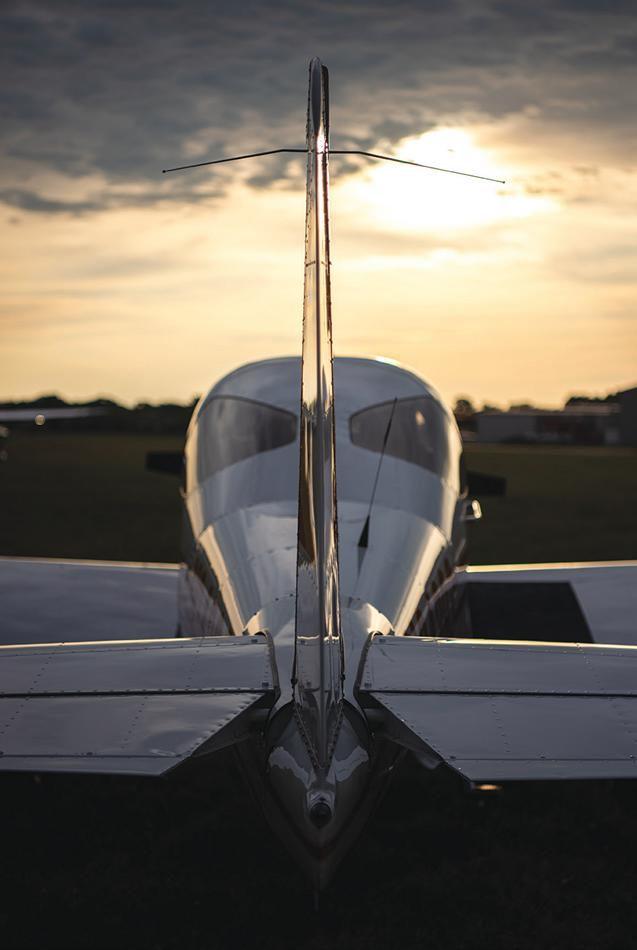
another pleasure unit adaptable to commercial applications. … It has a gross weight of 3,000 pounds and cruises 204 mph at 75% power at 7,500 feet. You owe it to yourself to see this beauty … or better still — fly it!”
The winners of the 1963 Phoenix 100 stock airplane pylon race at Deer Valley Airport were listed in the accompanying column “Air Report”: “Fastest airplane … was a 4-place Meyers 200B, N960D, piloted by Bill Brodbeck. He was credited with 198.78 miles per hour for the 100-mile course. Second and third places were also won by 4-place Meyers 200s: Mel Stickney in Meyers 200B N34391 winning second with 194.8 mph, and Ken Woerth in Meyers 200A N489C taking third with 192.92 mph.”
World records were set in Aero Commander 200s as well. In 1959, Peter Gluckman embarked upon a globegirdling Fédération Aéronautique Internationale (FAI) sanctioned flight in his Meyers 200. He landed at San Francisco, having completed the flight in a little more than 29 days.
In 1965, Jerrie Mock set a Class C1b record of 207 mph for speed over a 500 km closed circuit. In 1966, she set a record in the Class C1d distance in a closed circuit of 3,778
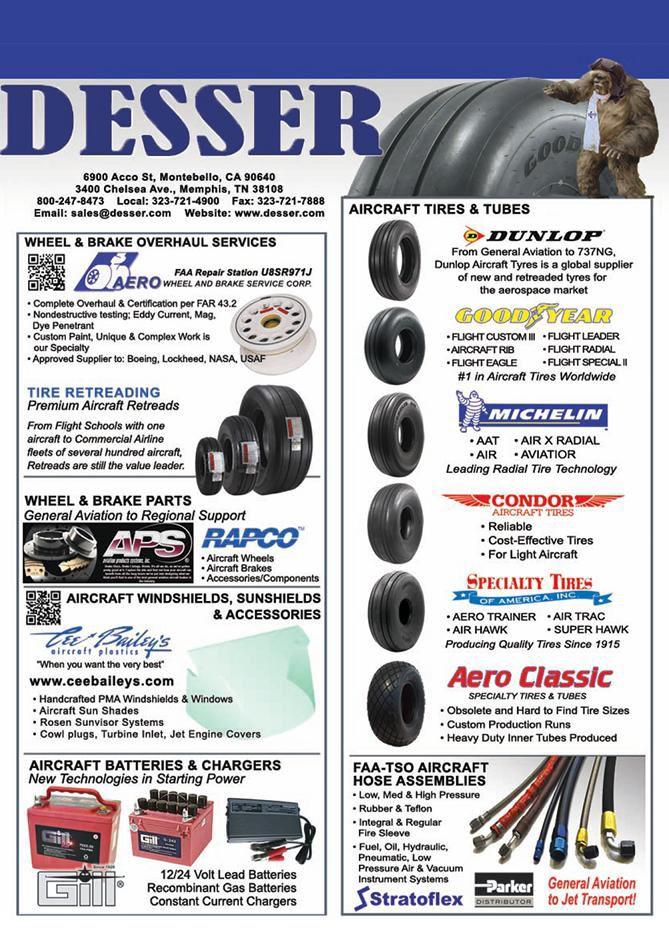
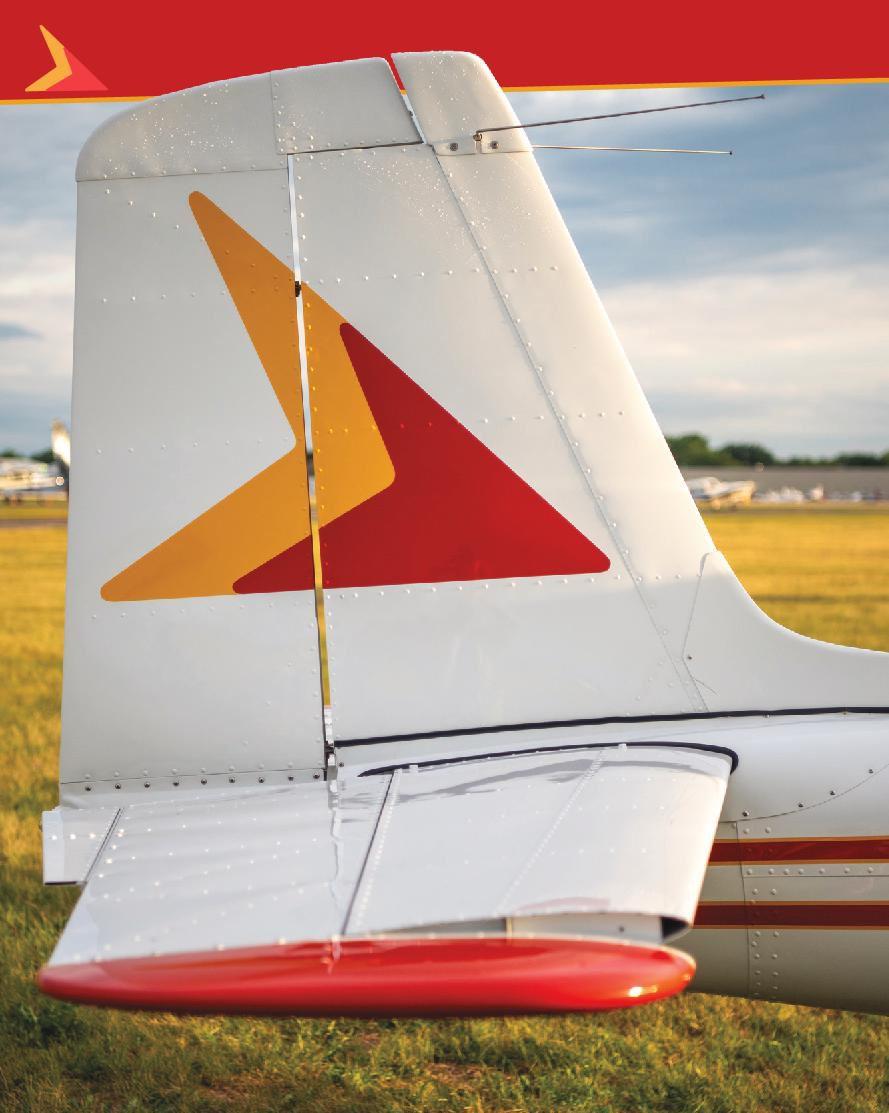
miles. In 1966, Don Washburn set a Class C1c record of 239 mph over a 3 km course, and William Brodbeck set a Class C1b record speed of 227 mph over a 3 km course.
Bruce himself enthusiastically joined the ranks of record setters. “I set two National Aeronautic Association (NAA) and FAI ‘Speed Over a Recognized Course’ Class C1c records. One was in my old Meyers 200B in July 2015, from Sioux City, Iowa, to Oshkosh, Wisconsin, with a speed of 193.53 mph. The other was in N34393 in July 2019, from Duluth, Minnesota, to Oshkosh, Wisconsin, with a speed of 199.8 mph,” he said. “Actually, I set a total of 10 NAA and 10 FAI world records in multiple classes of aircraft, but most of the time I wouldn’t tell anyone I was doing that. It was just an exercise for me, and a way to share camaraderie with my co-pilot or passenger. It was fun and kind of like continuing education for me.”
Bruce just loves his 200B for its performance and uniqueness. “There’s something about this airplane that’s very special,” he said. “I’ve been very fortunate to own and fly what I consider are great airplanes.”
Carlene is also fond of the Meyers — again, primarily for its performance. “I like the fact that it goes very fast from point A to point B, which is really nice. It’s very comfortable, especially for the two of us, and I can carry more than one little suitcase with my clothes. I’m not a
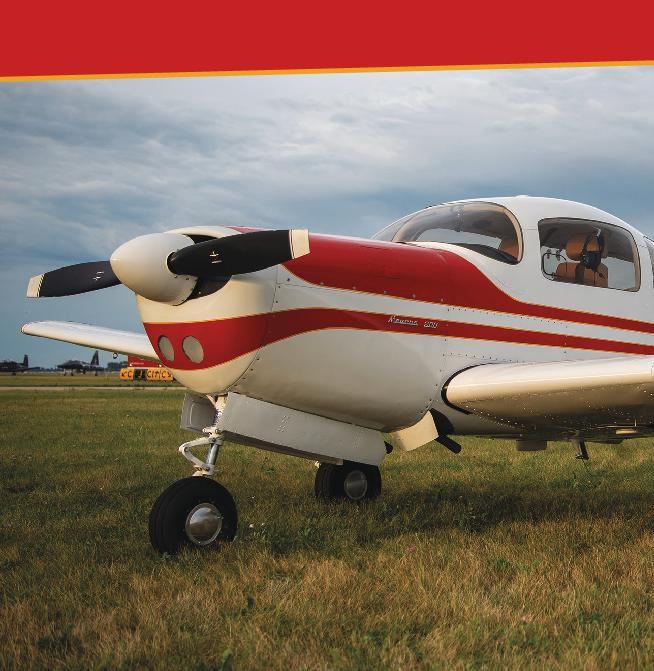

pilot, but I am responsible for keeping track of our fuel and knowing when it’s time to switch from one tank to another — so that’s my big job while we’re flying,” she said and smiled. “The other thing is, I pay the bills!”
The Mayeses enjoy sharing and showing their award-winning Meyers at aviation gatherings. In 2019, N34393 received the EAA AirVenture Oshkosh Outstanding Customized Bronze Lindy. They also flew it to the National Aviation Heritage Invitational, where the airplane received the Neil A. Armstrong Aviation Heritage Trophy (Contemporary Restored Aircraft).
Above and beyond such tangible awards are the life-enhancing rewards that airplane ownership can evoke. “The Meyers gives us the ability to travel together in comfort, and it’s an attractive ‘nuisance,’ because it brings people out to talk with us. Some people don’t know about Meyers aircraft, and they think it’s a Navion. The people who know the Meyers love them. The airplane is amazing because it’s built so strong and doesn’t have any airworthiness directives.


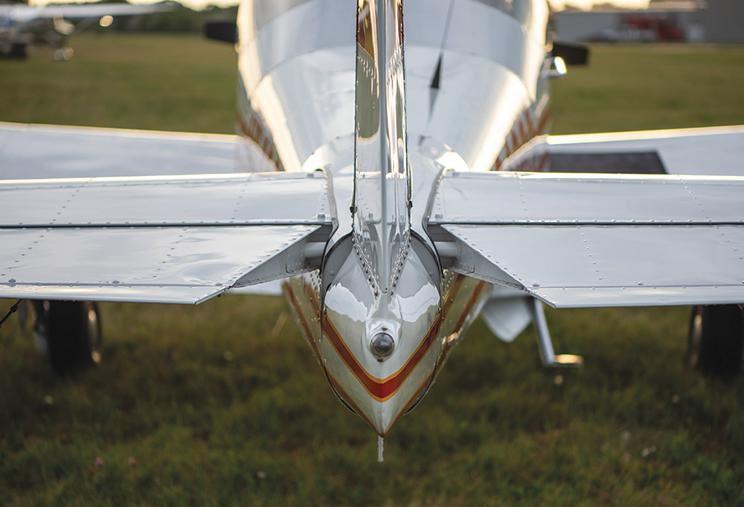
The people who don’t know the Meyers discover there are airplanes out there that they may want to investigate more,” Bruce reflected. “The airplane brings so many kinds of people to us; the depths of their knowledge and experience is unfathomable! Overall, it’s the people aspect of aviation that we treasure.”

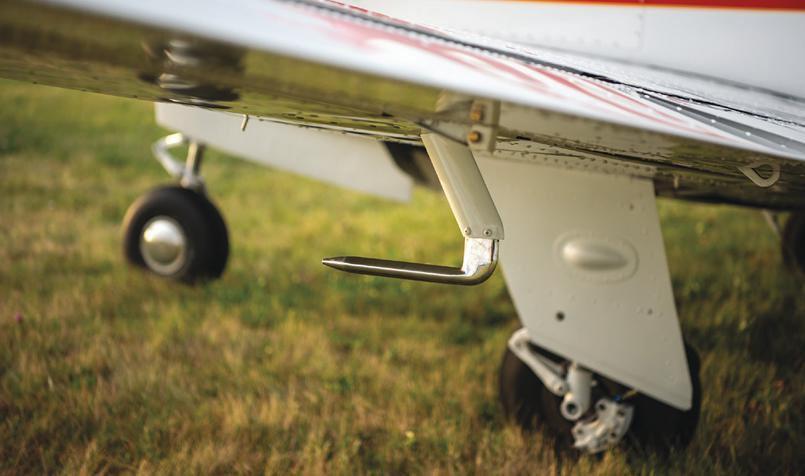

Univair is the Type Certificate holder for the Stinson 108 series. We have thousands of quality parts specifically for these airplanes. Many of our parts are made on the original tooling that was used when these great aircraft were first produced. We also have distributor parts such as tires, batteries, tailwheels, and much more. Call today for a free catalog (foreign orders pay postage).



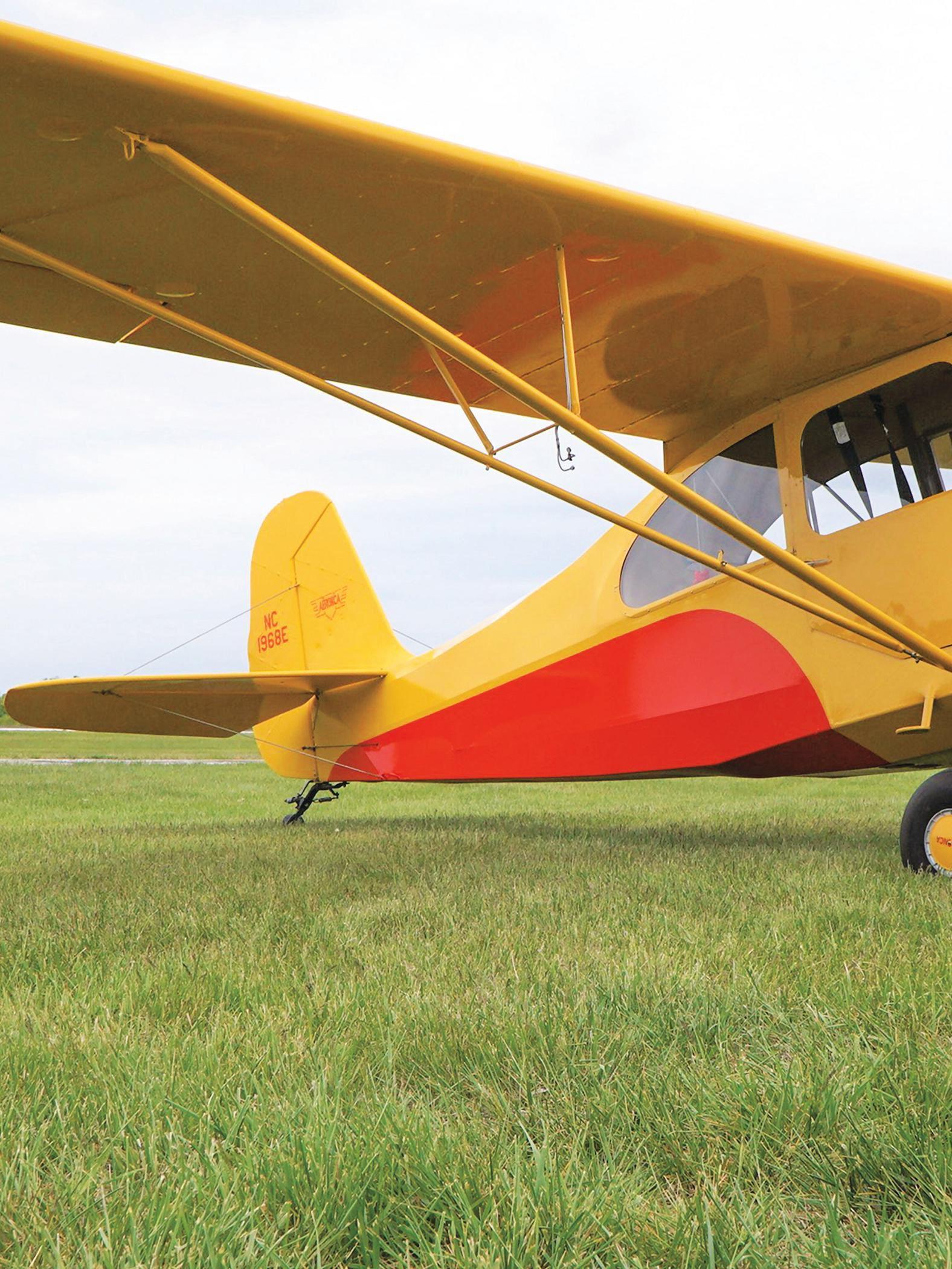
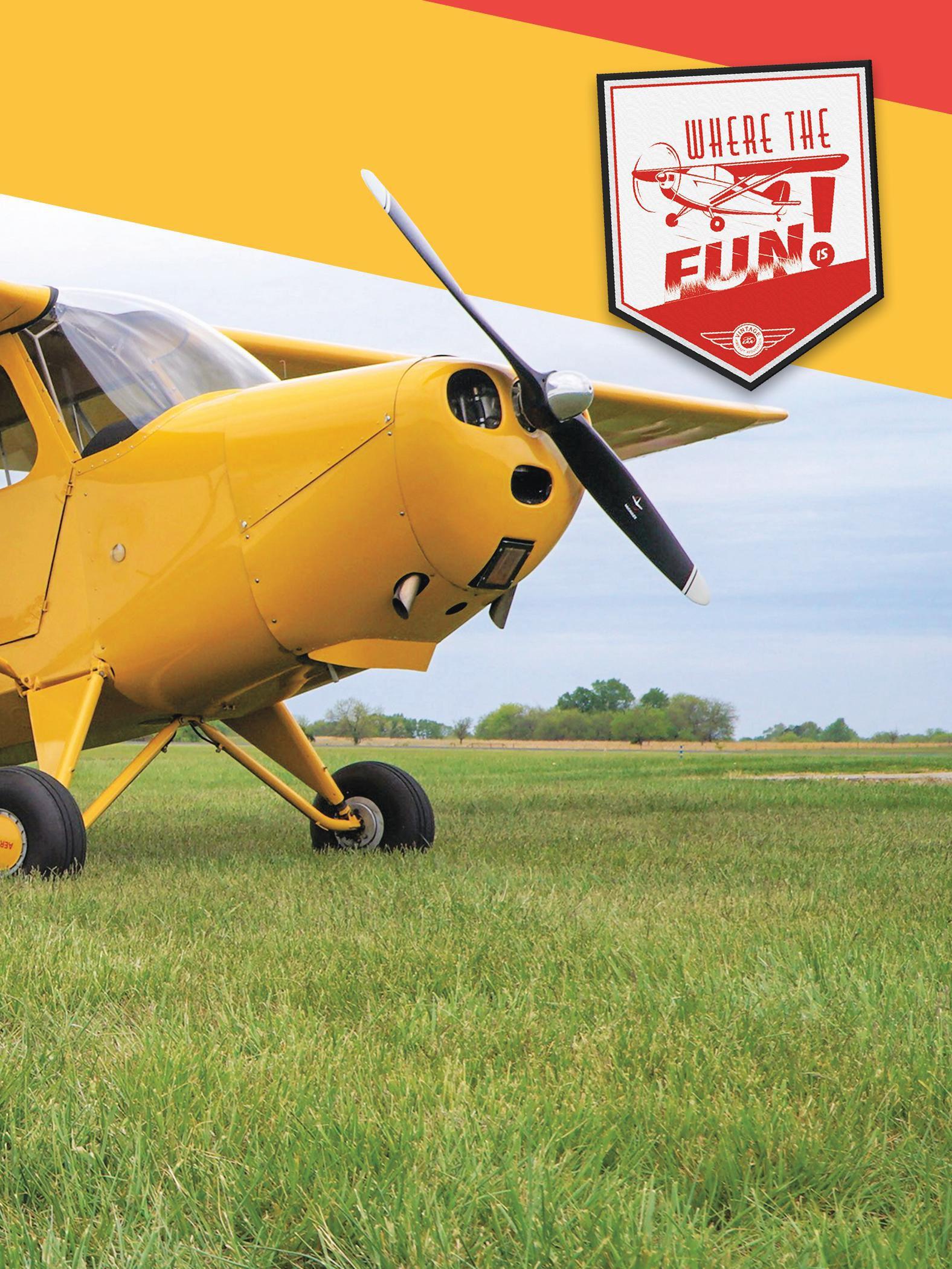
BOB BURKE, EAA 570974/VINTAGE 723566, has a wealth of aviation experience. More than 70 years of it, to be precise. At 88 years young, Bob is still flying and enjoys it just as much as when he first started in the early 1950s. Now, in 2024, he’s flying an airplane that was introduced only a few years before he earned his pilot certificate — a vintage Aeronca Champ.
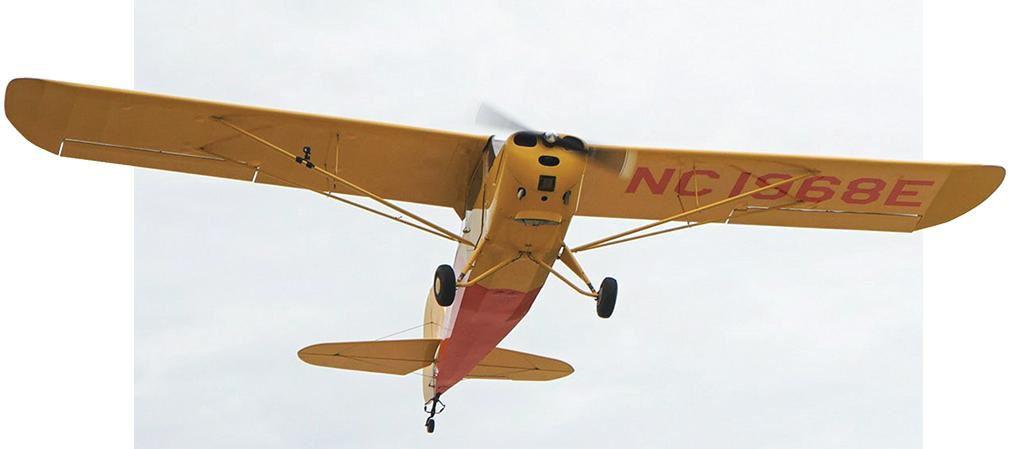
Bob’s inspiration to become a pilot came from his father, like many children of that era. Bob’s father was born in Bangor, Pennsylvania, which was a small town with textile mills and slate quarries as the primary industries. In his mid-20s, Bob’s dad worked in a textile mill, earning about $5 a day and hating life. Wanting to make a change, he saw an advertisement in a magazine for Fairchild Aircraft Corp.
The advertisement stated that if a Fairchild 71 was purchased, the buyer could travel to North Philadelphia Airport, take eight hours of instruction, and fly the airplane home. This was the 1920s, after all. Borrowing money and looking anywhere he could think of for money to get the aircraft, he finally got the cash he needed and purchased the airplane. After finishing eight hours of training, he flew the airplane back to Bangor and found a field to land in.
His determination to buy the Fairchild finally paid off after almost a decade of losses trying to make a living with the airplane. Things changed with the onset of World War II, and Bob’s dad became a flight instructor in the Civilian Pilot Training Program. From there, he was hired by Pan
“I took off and flew east and watched that sun from behind the clouds. … That’s what you do it for. I just fly around and enjoy.” — Bob Burke
American as an instrument flight instructor out of LaGuardia Airport in New York, flying DC-3s, Boeing Stratocruisers, and finally the Boeing 707, then based at Idlewild (now JFK). Bob’s dad passed away suddenly at age 60 from a heart attack. When Bob was a kid, he had no interest in aviation. At age 13, Bob was paging through one of his dad’s training books and it suddenly sparked something in him.
“In those days they had no flight simulators, so all the training was done in the airplane,” Bob explained. “So he never flew trips, but he took trainees out in the [Boeing] 707. He was an instructor all of his life. So I got to be 13 years old and opened one of Dad’s training manuals. It sounded good to me. I finally asked him would he teach me to fly, and he did.”
Bob started flying when he was 14 years old and soloed at 15 in 1952, having had 38 hours of dual time at that point. After earning his private pilot certificate in 1953, he obtained his commercial certificate and instructor ratings by the age of 18 and was soon teaching other people to fly. “I didn’t know what I knew to tell them, but I did it,” he joked.
By 19, Bob had landed his first job in the corporate aviation world, flying Twin Beeches. Little did he know he’d be a corporate pilot for the rest of his career.


“I thought that was just my waiting job until I got with the airlines,” he said. “Forty-five years later, I was still flying corporate airplanes, and it was the best thing in the world for me.”
After flying Beech 18s for two different outfits early in his career, Bob flew for CBS for a number of years in a Gulfstream I, and actually flew President Eisenhower twice when CBS was filming a documentary on him. Bob then flew for National Distillers in a Lockheed JetStar, which he described as the “best airplane I ever flew.” Flying a number of different business jets over the rest of his career, he became the director of aviation at Champion Paper and eventually retired in 1999.
While Bob’s career for nearly half a century involved flying high-performance turboprop and jet-powered airplanes, he knew he wanted to stay involved in general aviation after he retired. In the early 1990s, he bought a Husky, which he owned for 27 years.
“I got it seven years before, because I knew retirement was coming and I didn’t want to fly one day and chop it all [out of my life the next],” he said.
“Pretty soon I was enjoying flying the Husky more than flying the [Dassault] Falcon. So when I retired, it was no big deal. I just went in my Husky, and I flew the Husky all over the United States. I was not married, so I would go anywhere. I lived that dream. … It was just great.”
In the midst of his Husky ownership, Bob purchased his 7AC Champ, partially because he knew there was the possibility he’d lose his medical, which he eventually did when he had a heart attack. Because he could fly the Champ as a sport pilot without the need for a medical, he sold the Husky.
When deciding what he wanted to fly as a sport pilot, Bob had his eyes on a Champ from the start because of his 70-year connection to the type (and because he wasn’t a fan of the Champ’s historic rival).

“My dad gave me instruction in the the Champ. He always loved the Champ, so there it is. I, of course, also wanted a Champ,” Bob explained. “The J-3 Cub is always presented as a wonderful airplane. I have a lot of time flying a J-3 and in my opinion it is not a pleasant airplane to fly. The J-3 is certainly an icon representing the early years and on seeing a J-3 taxi out, I’m always bound to stop and take in the sounds and sight of the yellow airplane with black lightning bolt down its side. On getting into the seat to go fly, however, the fun is pretty much over.”
Bob’s reasons for deeming the Champ superior to the Cub include being able to
“I never fail to realize every time I go to the airport and fly that airplane, how lucky I am to still be doing that.”
— Bob Burke





fly from the front seat, more room, and being a better airplane to train in.
“Number one, when you fly it by yourself, you can fly it from the front seat, not the back seat. And the visibility out the front of the Champ with a big windshield was just outstanding,” Bob said. “In a Cub, you’re sitting in the back seat; you can’t even see forward. All you can see is the instrument panel. The Cub is an uncomfortable airplane to sit in. The Aeronca was built to be comfortable. So Aeronca said to themselves, back in the ’40s, we’re going to build a better airplane than the Cub. We’re going to build an airplane like the Cub, but we’re going to fix all that’s wrong with the Cub. And they did. It’s wider inside, the seats are comfortable, you sit up front, it’s just a bigger airplane and all around comfortable. The Cub, you sit in the back seat; it seems to me, the geometry of where your seat is and where the stick is is wrong. You’re always flying hunched over.
“And then the flying part — the Champ is a better trainer because if you come in on an approach too fast in a Champ, your landing will get screwed up. You’ll float along too far. A Cub, you can be careless. You come in too fast, too slow, and it always lands the same. Now you could call that a good thing, but when you’re learning to fly, it’s not a good thing because you’re not learning a good lesson. The Champ is a better trainer to teach people how to fly.”
Bob’s airplane is an early model of the Champ, built in 1946 — right when Aeronca was beginning to produce the type. While nearly 80 years old, NC1968E only has about 2,600 hours on it, partially because it was caught up in litigation a few times over the years and parked in a hangar. A previous owner completely rebuilt the airplane in the mid-2000s as a BCM conversion. Since 2005, the airplane hasn’t flown a lot, with about 380 hours on it, though it was named the outstanding
Champ of the year at AirVenture 2005 and was pictured on the cover of the October issue of Vintage Airplane magazine that year. Based at Clinton Regional Airport in Clinton, Missouri, about 80 miles southeast of Kansas City, Bob’s Champ was bare bones when it came out of the factory, and it’s stayed more or less the same for the past eight decades.
NC1968E has gone through a number of engines in its life and currently sports a Continental C85-8, which doesn’t have a starter. But hand-propping a vintage airplane is “part of the fun of it,” Bob said. He purchased a new McCauley propeller for the airplane in 2018, while the instrument panel looks much like it would have in 1946, something Bob very much enjoys.
AIRCRAFT MAKE & MODEL: 1946 Aeronca 7AC-BCM
LENGTH: 21 feet, 5 inches
WINGSPAN: 35 feet, 1 inch
HEIGHT: 8 feet, 8 inches
MAXIMUM GROSS WEIGHT: 1,320 pounds
EMPTY WEIGHT: 869 pounds
FUEL CAPACITY: 13 gallons
SEATS: 2
POWERPLANT MAKE & MODEL: Continental C85-8
HORSEPOWER: 85
PROPELLER: McCauley fixed-pitch 71-inch
CRUISE SPEED/FUEL CONSUMPTION: 95 mph/5 gph
POWER LOADING: 15.52 pounds/hp
WING LOADING: 7.75 pounds/sq. foot
VNE: 129 mph
VSO: 37 mph
“I don’t rely on all the new technology,” he said. “The airplanes I flew had a million gauges and now I’m looking at only six. I’m flying a basic airplane. Ailerons, elevator, rudder, and throttle, that’s the way it all started years ago and it suits me fine.”
Despite the thousands of hours Bob has in jets and high-performance aircraft, flying a taildragger is something he’s more than comfortable with, considering that was the standard when he began his flight training all those years ago.
“The tail wheel, of course, makes a big difference. Even that requires special training, and they make a big deal about it today,” he said. “‘It’s hard. You got to watch out.’ When I learned to fly, that’s all there was. Nobody talked about, ‘Hey, that’s a tailwheel there.’ You just went and learned to fly it, and that’s the intrigue of the tailwheel. It’s a little more difficult, and these airplanes are very light in weight. Their maximum takeoff weight is 1,320 pounds. You get out there on a windy day, they’re not made to fly in a gusty, strong wind because they want to take off at 40 miles an hour. … It’s a hard airplane with the winds blowing. All those light airplanes are, but we don’t go and fly that day, that’s all. But just the simplicity is so attractive. That’s the whole thing.”
Along with the simplicity and classic feel, another part of the appeal to owning a Champ is the cost. No, it’s not going to get you anywhere fast. You can only take one other passenger and a little bit of cargo. But if you just want to fly for fun, there aren’t many better options.
“People say, ‘I would like to fly, but it costs too much.’ Normally, I could buy a Champ like this for the same as buying a used pickup truck,” Bob said. “Fuel burn is less. That’s nonsense [that aviation costs too much]. If you can afford a pickup truck, you can afford one of these, and I think they make a big mistake. But everybody wants to go first-class, and first-class isn’t always better.”
Bob uses the airplane for exactly what you’d guess he would — having fun and relaxing.
“I don’t do anything with it. If somebody asked, ‘Can you justify ownership of this?’ No, I cannot. I do it because I want it. Just for fun, that’s all. You know what I did the other day, a couple of weeks ago? I wanted to get up and watch the sun come up from the air. Pushed the airplane out in the dark, and I waited at the end of the runway to official sunrise. I cheated. I went five minutes soon. I took off and flew east and watched that sun from behind the clouds. The clouds were just gorgeous. That’s what you do it for. I just fly around and enjoy.”

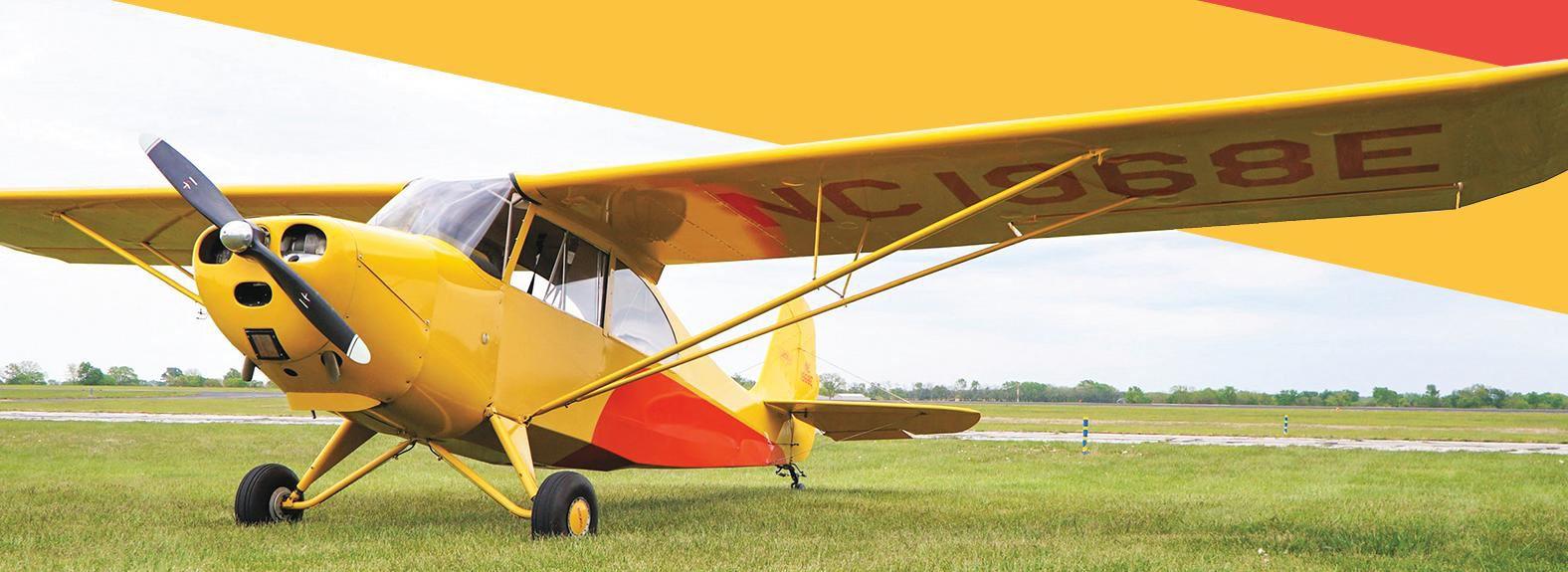
When Bob initially began flying in the 1950s with his dad, he could never have imagined that he’d still be doing it 70 years later. And for that, he considers himself fortunate.
“My dad taught me to fly. He taught me at age 15 to fly. If he realized [that] at my age, 88, I would be still flying, he’d be blown away. I mean, he’d be so pleased by that. But yes, I never thought I’d be flying this long, never did.
“I think I’m the luckiest guy in the world. Right now we’re having a period of bad weather. I haven’t flown the airplane in a month, and part of my life is cut away when I don’t fly. I’m a different person. But when I get out there twice a week and fly the Champ, I’m my old self; puts me back
Inspiring Aviation
Professionals of the Future
FREE aviation resources for K-12 students, teachers, EAA chapters, and youth leaders
Online activities, hands-on projects, and in-person experiences to help youth gain knowledge and skills
Aviation scholarships and career exploration
Innovative badging system
AeroEducate.org/Enroll
together again. I’m just lucky. Lucky. I never fail to realize every time I go to the airport and fly that airplane, how lucky I am to still be doing that. And I also know it could end any time, too. I could come down with something that ends it. So I just treasure the time. I’m lucky; that’s all I can say. I wonder what my dad would have thought when he started my lessons at age 14 if he knew that I would be coming full circle 72 years later at age 88 and still flying a Champ. I think he’d be pleased.”
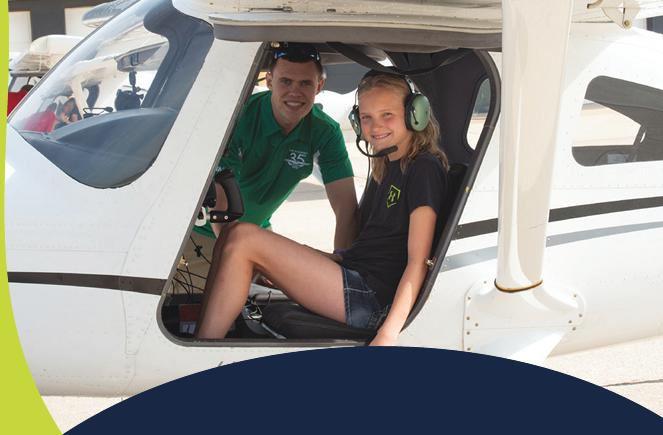
Our partners:
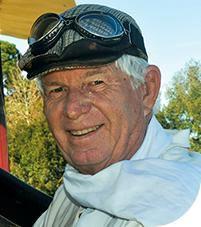
ROBERT G. LOCK
BY ROBERT G. LOCK
AS AN FAA AIRFRAME and powerplant mechanic, I have been around single-row radial engines such as the Wright J-6-7 (R-760), Continental W-670 (R-670), Pratt & Whitney R-985, and Lycoming R-680 for many years. I will attempt to pass along some of my experiences, most recently maintaining and operating three Wright R-760-8 and two Continental W-670 engines.
Many older single-row radial engines were certificated on 73-octane fuel. They were low-compression engines and operated at low rpm, and manifold pressure was not boosted. When 73-octane fuel was no longer available, the next higher grade, 80/87, was used. This fuel worked well with low-compression engines, but has become another good product that has been added to the “disappeared” list.
So now operators must decide whether to use 100LL or auto fuel. During the late 1980s and into the early 1990s, I had the opportunity to operate a Wright R-760 installed in my 1929 Command-Aire biplane on 80/87, both leaded regular and unleaded regular automotive fuel. I found the leaded automotive fuel to be a suitable replacement for the more expensive grade 80/87, but when leaded fuel became extinct, I switched to unleaded auto fuel. I found it to be a dirty-burning fuel that sooted up the exhaust collector of my Wright and sent exhaust residue down the side of the fuselage. So I immediately quit using unleaded fuel and switched completely to 100LL. That engine now has about 400 hours since major overhaul (SMOH), but I haven’t flown the Command-Aire much in the past six years. Now I am flying behind a Wright on an everyday basis. My son, Rob, owns two 1929 New Standard D-25 biplanes equipped with the Wright R-760-8. There are two of only seven that are airworthy. Which leads us to a discussion of low-lead avgas and the radial engine. Having spent time maintaining Wright and Continental radial engines that total 5,000-plus hours of operation, the following are some tips I’ve learned to keep the engine operational as the hours SMOH build.
After more than eight years, the two Wright-powered New Standard D-25s have more than 4,000 hours of operation. I have done much of the maintenance on the airframe and powerplant and can report the following information.
First, the engines now operate about 250 hours per year and are installed in ships used specifically for giving rides; therefore, I use full power for takeoff, climb at 1750-1800 rpm to 1,000-1,500 feet above the ground, cruise at 1650-1725 rpm, gradually reduce power, and land. Each flight is actually in the air for slightly more than 15 minutes. There are, of course, ferry flights where the engine runs constantly at 1700-1750
rpm. That’s the type of operation the engines have endured. And they are operated specifically on 100-octane low-lead aircraft fuel.
The engines have regular 25-hour inspections, which includes oil change, screen inspections, and spark plug maintenance, plus a generous inspection of the engine compartment and a solvent wash-down. At the even inspections (50- and 100-hour), I inspect and gap the spark plugs, then rotate their installation from the front bank to the rear, being sure to place spark plugs from lower cylinders into top cylinders. This automatically cleans the plugs because rear plugs tend to run hotter, will erode quicker, and tend to acquire chemical deposits. I attribute this routine to getting 700 hours of foul-free spark plug operation. New plugs were installed at this point. So, if you don’t change plugs from front to rear, I suggest you institute this procedure. It really works! We rarely have a magneto drop due to a fouled spark plug caused by chemical deposits from 100LL fuel.
I was conducting a cylinder leakage test each 100 hours of operation, but when an engine reaches about 75 percent of the service life, I do the check every 50 hours just to keep tabs on cylinder leakage. With the engine warm and at 80 psi of air pressure, a cylinder normally will hold 72 to 78 psi. When cylinder leakage drops below 70 psi, I “stake” the exhaust valve (if that is leaking) by removing the rocker cover to tap the valve with a wood block and hammer. Avgas of 100LL puts an unbelievable amount of chemical deposits into the combustion chamber, on the piston top, and around the exhaust valve that sometimes causes the valve not to seat properly. You can usually hear where air is escaping around the rings or around the exhaust valve seat. It’s when you have leakage at both locations that things get interesting.
At the 600-hour SMOH mark of operation, one engine began acting a little strange. Since I have flown behind Wright engines for more than 1,500 hours, they “talk” to me. I thought I could hear a cylinder either not firing or running a little rough on takeoff power, but the engine seemed to develop power and performance seemed otherwise normal. The problem was intermittent, which made troubleshooting even more difficult. I leakage-checked the cylinders, and everything was normal. However, the problem persisted. Finally I caught the culprit! It was the No. 4 cylinder; the leakage check showed that at 80 psi it was holding only 10 psi. I removed the cylinder and piston, but there appeared no obvious damage other than blowby around the rings because the ring gaps were almost lined up. I re-staggered the ring gaps and replaced the cylinder and continued on.
At the 910-hour SMOH mark, the No. 5 cylinder decided to do the same thing. At 80 psi the cylinder would hold only 50 psi, which would slowly drop to 44 psi and stabilize. So I removed the cylinder, and it appeared exactly as the No. 4 did 300 hours earlier. There was blowby around the rings (which could be heard coming out of the crankcase breather) and a lot of chemical buildup from the low-lead fuel. I inspected the piston and cylinder, roughed the walls with a hone, and reinstalled the cylinder with new seals and gaskets. That was 20 operation hours ago, and a leakage check shows at 80 psi the cylinder holds 76 psi. For the present, problem solved!
The No. 5 cylinder can cause other problems. Overnight, oil will seep around the suction inlet check valve in the oil pump, and since it’s located directly above that cylinder, oil will flood the combustion chamber and fill the intake pipe, causing “hydraulic lock.” I always drain any oil from the No. 5 induction pipe by removing a 1/8-inch pipe plug before pulling the prop through at least 14 blades. I also make sure that the No. 5 piston is at top dead center on the firing stroke when I leave the engine overnight. I line up the No. 1 propeller blade with the centerline of the No. 5 cylinder on the compression stroke. It works!
The cylinder problems we’ve experienced on the Wrights have been on No. 4 and No. 5, the two lower cylinders. All the other cylinders are still the original overhauled parts and have 930 total hours of operating time. Wright R-760s have always had an oil control problem with the lower cylinders, and this could be the root cause.
The Wright R-760 engine also has no lower rocker drains, so all rocker arms below the horizontal will not drain back to the sump to be scavenged into the oil tank. During engine operation, condensation forms in the oil tank and works its way to the lower parts of the engine. This water from condensation will eventually seek the lowest level and form sludge in the rocker bosses of cylinders No. 4 and No. 5 and in the lowest rocker bosses of cylinders No. 3 and No. 6. I remove the rocker covers to drain this static oil every 50 hours of engine operation. The new silicone rocker cover gaskets make this job easy but messy.
A valve clearance of 0.010 inch cold should be set and checked on the 100-hour inspection. I rarely find that the clearance has gotten out of limit, but I do occasionally have to readjust the clearance on one or two valves. I rotate the engine through three complete firing revolutions and check the clearance on each cylinder. If the spark plugs are removed, turning the engine through three rotations is relatively easy. Here again, the silicone valve cover gaskets make this task easy but messy. Re-torque the rocker cover retaining nuts to about 20-25 inch-pounds, no more. After a flight around the patch, the leaking covers will be readily seen. I carry a 7/16-inch socket and ratchet in my pocket, and after the flight I “snug” the nuts until the cover quits leaking.
Engine power output and gauge readings plus listening to the engine are helpful to long life. We have been using AeroShell SAE 120 (60 weight) oil here in Florida, even in the winter. Oil pressure is a constant 70 psi, while I occasionally see the operating temperature at 65° to 80° Celsius. AeroShell tech reps have told me that I can operate the oil to slightly more than 100°C (213° Fahrenheit) with no breakdown of the oil. The oil should run hot to help boil off water accumulations caused by condensation. The Wright is redlined at 88°C inlet oil temperature. I set operating oil pressure at midrange, 68-70 psi (the Wright oil pressure is 50-80 psi). It has been cold (!) here in Florida, and the temperature gauge reads below 30°C when I start the engine. So I warm the oil for 15 minutes before taking off.
My primary concern in operating this engine has been the use of 100LL fuel. The aromatics used to boost octane rating and whatever chemical is used to replace the lead cause a large buildup of deposits in the combustion chamber, on the piston top, and on the valve stems and seats. There are chemical deposits showing up on the leading edge of the right lower wing just behind the exhaust tail pipe that no cleaner will remove. These deposits appear as small black specks that you can feel when running your hands over them. Your fingernail will flake them off. This chemical buildup is also inside the exhaust system and appears as a light tan to a yellow color. I’ve seen it in this engine and inside exhaust systems of opposed engines. I have a series of colored photographs taken of a Lycoming O-320 in New Hampshire that was operated on 100LL fuel. The chemical buildup is very heavy. So we can expect changes in radial engine operation and even overhaul life if this fuel is used on a regular basis.
I have used no fuel/oil additives; however, I did use some Marvel Mystery Oil in the fuel for a time. We cannot operate the engine on automotive fuel because the airplane is flown commercially. However, if I could use auto fuel, I’d try to use a

ROBERT G. LOCK
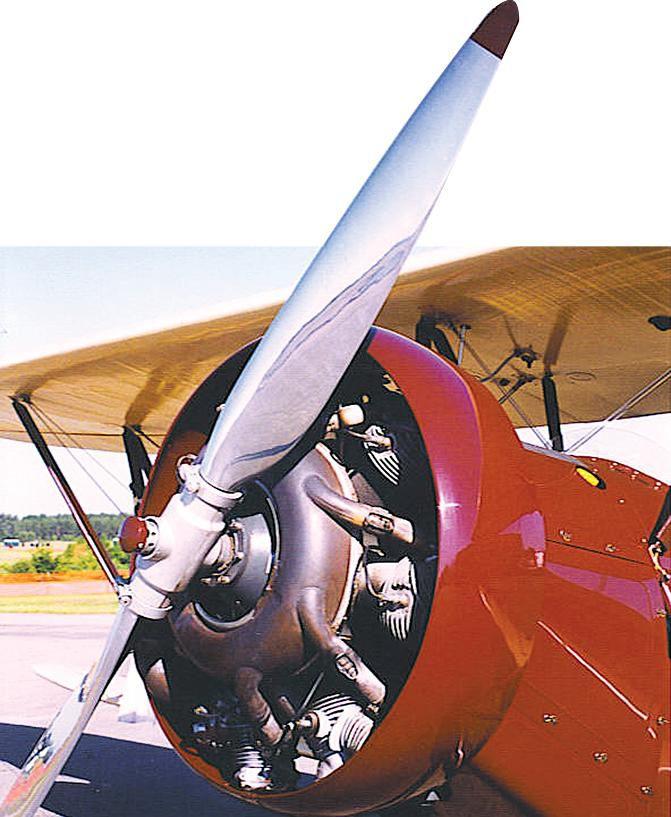
mixture of 75 percent auto and 25 percent 100LL. I’ll bet the engine would love it!
So, it is my belief that if one stays on top of engine operation and does regular maintenance along with good preventive maintenance measures, engine life should be enhanced. I am absolutely “sold” on AeroShell ashless dispersant oil, with changes every 25 hours (with no filter system installed). In fact, AeroShell is now an official sponsor of Rob’s barnstorming business, Waldo Wright’s Flying Service.
Cylinder leakage checks on a regular basis, spark plug gapping and reversing every 50 hours, and perhaps oil analysis will keep that radial engine operational for a long time. I pay close attention to oil consumption. This engine has used 4 quarts of oil over a 15-hour span of operation. However, oil consumption increases as operating times go above the 600hour mark. I’m sure that prolonged engine life is due to the improvements in lubricating oil. And a good understanding of how best to operate and maintain the engine over a long period of time will always pay dividends in the end.
The overhaul manual for a particular engine will normally contain sections on troubleshooting and inspections, including daily, 25-hour, and 50-hour checks, which can be easily added to the 100-hour and annual inspection checklist.
Something that is intriguing to me was overall engine expansion when operating temperature has been reached. For a period of time we ran a Townend ring cowl on the New Standard D-25A, but it soon cracked around the attachment points. I also noticed that the cowl was very tight when the engine was hot, so I loosened the attachment clamps until there was a small amount of looseness with the engine at temperature. When the engine cooled there was quite a bit of clearance between the cowl and engine. This eliminated the
cracking problem. To my amazement, the Wright Whirlwind engine must have grown at least 1/2 inch or more in diameter when it came up to temperature! Now, on the preflight inspection I can shake the cowl, but when the engine is hot there is no movement. Amazing!
In 1928, Fred Weick (pronounced Wyck), an engineer from the National Advisory Committee for Aeronautics (NACA), led the development of what was to become known as the NACA low-drag engine cowling. Fred had access to the NACA Propeller Research Wind Tunnel at Langley, Virginia. Fred and his team won the 1929 Collier Trophy, the first of five Collier awards for NACA. Their wind tunnel experiments led to many discoveries as to how to fair in an engine and how to control cooling of the engine. But I don’t recall reading anything about cowling fit to the engine when at operating temperature. Oh, well, book this one to experience and a little trial and error!
There is something to be said about looking over an exposed or cowled engine on final approach to landing. It is much easier to see without the cowling around the cylinders, as the photographs show.
Ring cowls, commonly called Townend cowls, only covered the circumference around the cylinders. In many cases the engine did not cool as efficiently as if it were completely exposed to the air. The cylinder heads ran cool enough, but oil

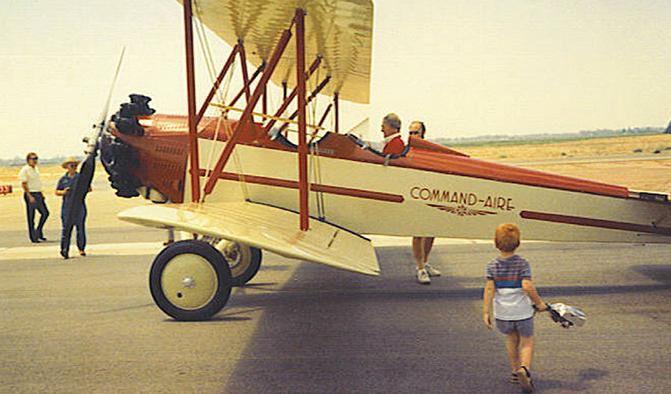
temperature would rise to near or above redline. The Wright engine oil temperature in my Command-Aire always ran very hot, particularly in hot summers in central California, sometimes approaching 94°C. The final answer was to install a small oil cooler in the system, which lowered the oil inlet temperature to a respectable 82°C. The tech reps at AeroShell told me that an inlet oil temperature of at least 80°C was needed to boil off water condensation from the oil system. And it in fact does that! The Wright R-760 engine installation is very reliable, and I am not afraid to take the ship on a coast-to-coast cross-county flight.
I would have to say it was a successful flight with 19 fuel stops and seven days and six nights of travel. Considering the airplane had only 15 hours of flight time and the pilot had the same number in type, I encountered just two problems. First, the base seal on the No. 1 cylinder decided to leak (badly), and second, the throttle control broke on takeoff from the Blythe, California, airport, resulting in some anxious moments, as the engine was turning only 1200 rpm. But that problem was overcome, and the trip continued as if nothing had happened. But enough of the flying stories; back to the subject at hand.
The Wright cylinder base seals are a constant problem with leakage as engine time builds. It seems at about the
600-hour mark oil will begin seeping around the cylinder base area of cylinders No. 1, No. 2, and No. 7. The solution is to loosen each cylinder and raise it off the power case about 1-2 inches (do not remove the cylinder completely). Using gasoline on a rag, wipe all metal-to-metal surfaces clean and pay particular attention to the O-ring area. Apply a small amount of hightemperature sealant to the chamfer on the power case and the O-ring on the cylinder base. Do not get the sealant on the metal-to-metal surfaces, or the base nut torque will be compromised. Slide the cylinder back down, install the base nuts, and torque. The base nuts on the Wright engine were originally safetied using 0.041-inch safety wire; that too must be completed. Then install the intake pipe and push rod housing with new gaskets and seals. Finish by installing the rocker arms and check the clearance to 0.010 inch. You should be good for many more hours of operation.
So, as the owner, operator, and mechanic of a single-row radial engine, my best advice is to read and understand how the engine operates and pay attention to its idiosyncrasies. If you do, it will last for many years between expensive overhauls.
Good luck and happy flying.
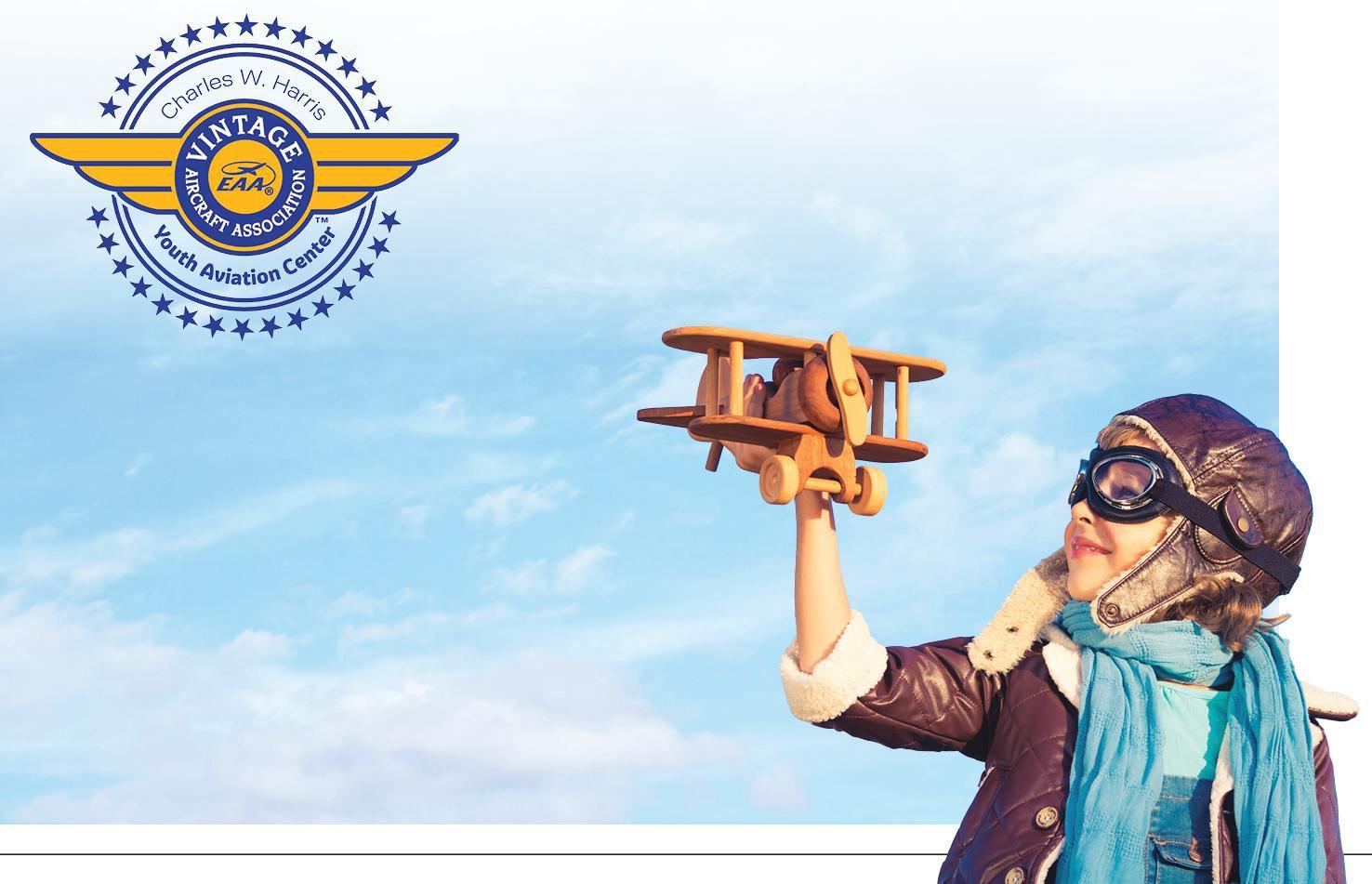
Make
SUSAN DUSENBURY, VAA PRESIDENT
CONTINUED FROM PAGE 1
Looking back, the internal organization of VAA took much more time than I could ever have imagined. The infrastructure projects were fun and straightforward. (I love to build and rebuild stuff!)
And the youth program was made easy and fun by everyone’s enthusiasm and dedication. Of course, the support of the Charles W. Harris Foundation made the entire youth initiative a win-win in every way.
Finally, I do have some thoughts that I would like to share.
The Vintage volunteers have really made my job an easy one. There is an amazing amount of talent in the 650 volunteers who step forward every year to make Vintage the premier organization it is today. Basically, I just turned all of that talent loose, and they did what they do best. They did report in every now and then to keep me
Vintage is the fun place to be!
in the loop or to have me smooth out a few bumps in the road.
Mostly, I just sat back and watched! I laughed a lot!
Vintage is absolutely the best, and each and every one of our officers, directors, and advisers has led the way to make that a reality. Our membership and the entire vintage aircraft community are indeed fortunate to have such talented and dedicated individuals in leadership positions. I can truthfully say that it has been a very rewarding experience for me personally to get to know and work with all of you while serving as president of Vintage.
Vintage is the fun place to be! Blue skies!
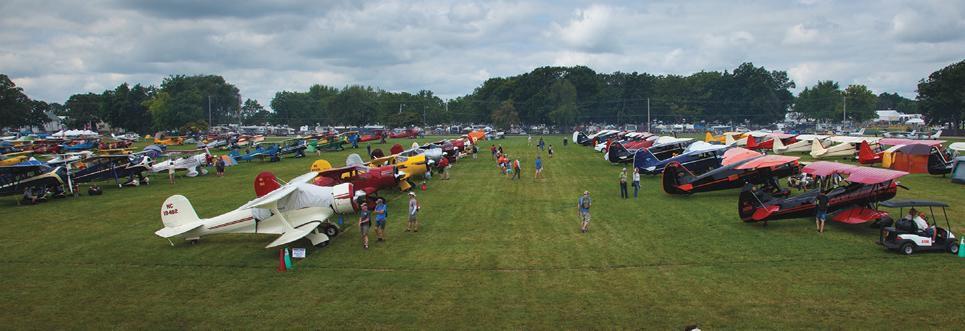
COPYRIGHT©2024 BY THE EAA VINTAGE AIRCRAFT ASSOCIATION. ALL RIGHTS RESERVED
VINTAGE AIRPLANE (USPS 062-750; ISSN 0091-6943) copyright © 2024 by the EAA Vintage Aircraft Association, Inc., is published bimonthly and owned exclusively by the EAA Vintage Aircraft Association, Inc., EAA Editorial Department, 3000 Poberezny Road, Oshkosh, WI, 54902. Periodicals postage is paid at Oshkosh, WI, 54901, and additional mailing offices. U.S. membership rate for the EAA Vintage Aircraft Association, Inc. is $45 per 12-month period for EAA members, and $55 for non-EAA members.
POSTMASTER: Send address changes to EAA MEMBERSHIP SERVICES, P.O. Box 3086, Oshkosh, WI 54903-3086. CPC 40612608
FOREIGN AND APO ADDRESSES: Please allow at least two months for delivery of VINTAGE AIRPLANE to foreign and APO addresses via surface mail.
ADVERTISING: Vintage Aircraft Association does not guarantee or endorse any product offered through the advertising. We invite constructive criticism and welcome any report of inferior merchandise obtained through our advertising so that corrective measures can be taken.
EDITORIAL POLICY: Members are encouraged to submit stories and photographs. Policy opinions expressed in articles are solely those of the authors. Responsibility for accuracy in reporting rests entirely with the contributor. No remuneration is made. Material should be sent to: Editor, VINTAGE AIRPLANE, P.O. Box 3086, Oshkosh, WI 54903-3086. Phone 920-426-4800.
PRESIDENT Susan Dusenbury 1374 Brook Cove Rd. Walnut Cove, NC 27052 336-591-3931 sr6sue@aol.com
VICE PRESIDENT Dan Knutson 106 Tena Marie Circle Lodi, WI 53555 608-354-6101 lodicub@charter.net
SECRETARY Kathy McGurran Brighton, CO 303-829-4808 kmcgurran@aol.com
TREASURER
Paul Kyle 1273 Troy Ct. Mason, OH 45040 262-844-3351 paul_e_kyle@hotmail.com
John Hofmann Columbus, WI 608-239-0903 john@cubclub.org AC Hutson 678-457-8957 achutsonjr@icloud.com
Ray L. Johnson Marion, IN 765-669-3544 rayjohnson@indy.rr.com
Vaughn Lovley 913-981-3696 pa11pilot@yahoo.com
Steve Nesse Albert Lea, MN 507-383-2850 stnes2009@live.com
Earl Nicholas Libertyville, IL 847-504-6945 eman46@gmail.com
Joe Norris Oshkosh, WI 920-279-2855 wacoflyer@gmail.com
Marla Simon Boone Troy, OH 937-216-5133 msimonboone@yahoo.com
Charlie Waterhouse Dayton, OH 260-385-0851 charles.e.waterhouse@gmail.com
ADVISERS
Jesse Clement jesseclement1@gmail.com
Luke Lachendro avidaviator98@gmail.com
ADMINISTRATIVE ASSISTANT DIRECTORY
Kevin McKenzie kevinamckenzie@yahoo.com
Maxwell Wenglarz waco20900@gmail.com
DIRECTORS EMERITUS
David Bennett antiquer@inreach.com
Robert C. Brauer photopilot@aol.com
Jerry Brown lbrown4906@aol.com
Dave Clark davecpd@att.net
Amy Lemke alemke@eaa.org
Phil Coulson rcoulson516@cs.com
George Daubner gdaubner@eaa.org
Ronald C. Fritz itzfray@gmail.com
Tim Popp tlpopp@frontier.com

